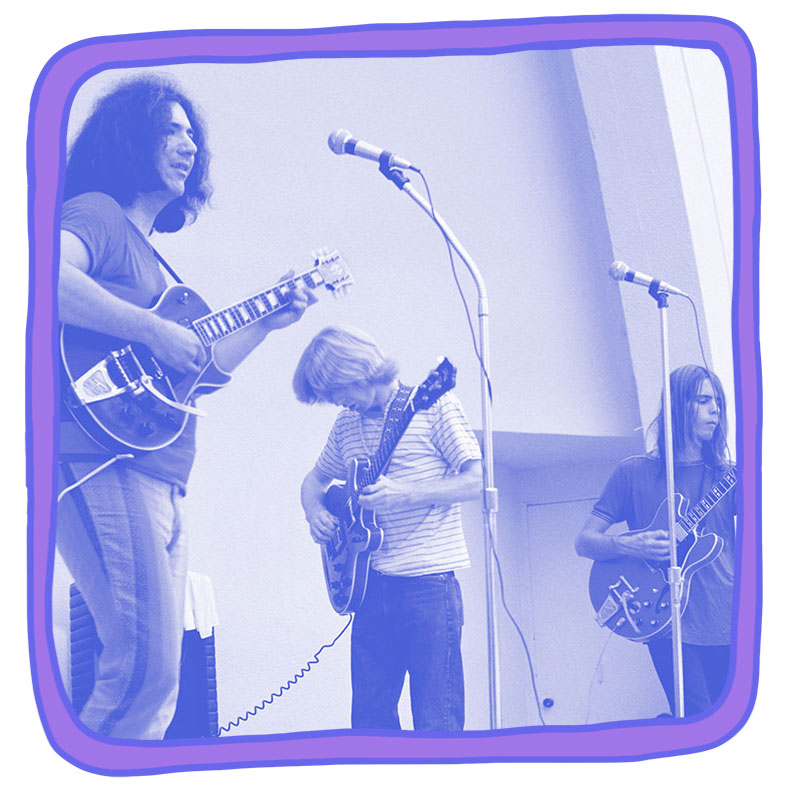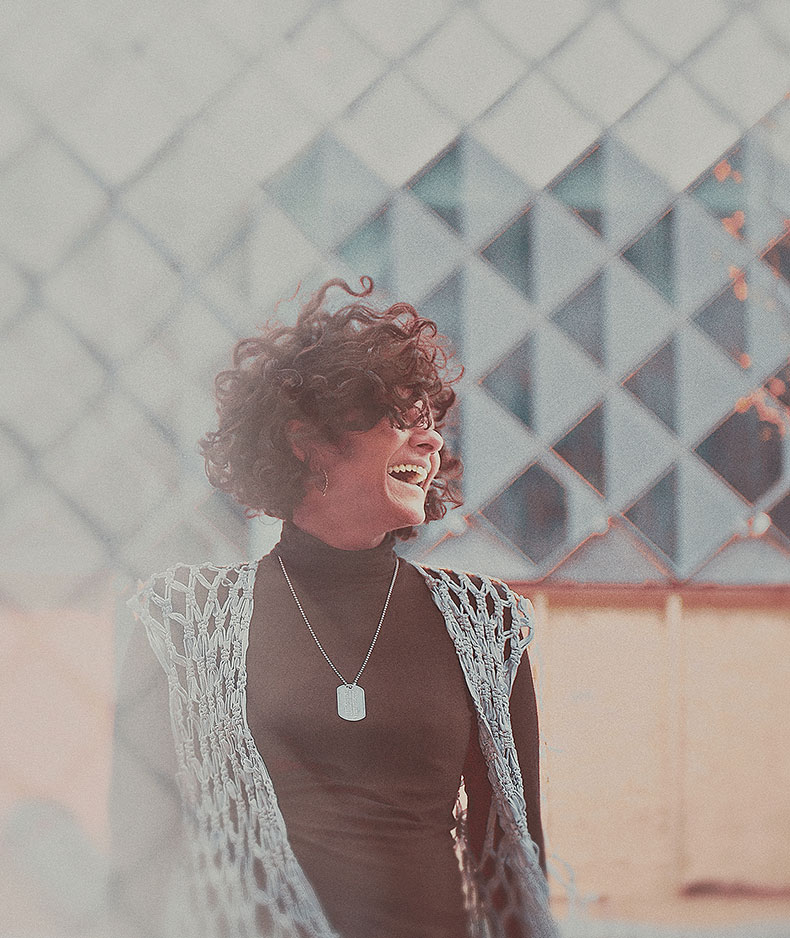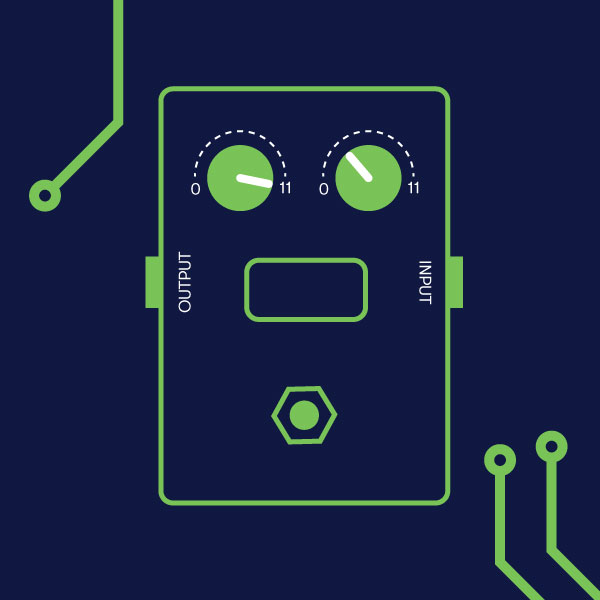
Longform: Chris Cornell, Searching for Solitude
Interview: Grizzly Bear Discuss Painted Ruins, Their First Album in Five Years

Lists & Guides: Loveeeeeee Songs: Rihanna's 52 Singles, Ranked


More than any pop star today, Rihanna makes it look easy. But a look at the numbers proves that her career has been anything but that: Across 12 years, eight albums, and 52 singles as a lead artist or equally billed collaborator, she has reinvented and redefined herself in incredible ways. She’s flipped from sunny Bajan princess to take-no-prisoners pop assassin, from EDM chart-topper to bawdy rap slayer, from reluctant center of tabloid scrutiny to a boss fully in charge of her own deeply enviable life. She’s arguably the most influential singer of the past decade. Hell, even Spider-Man tries to be Rihanna at this point. Here's our list of her best radio moments—all of Rihanna's singles, ranked.
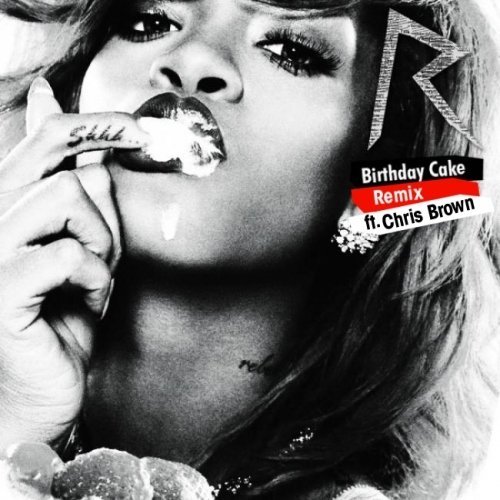
“Birthday Cake” [ft. Chris Brown]
Talk That Talk
Def Jam Recordings, 2012
Out of context, “Birthday Cake” isn’t remarkable, with Chris Brown being an R&B star and Rihanna being perpetually in the market for R&B songs and collabs. But this particular collaboration stunk of the thoroughly cynical publicity stunt it was executed as. That “Cake” already lurched between lascivious and predatory, a provocation anchored by “I’mma make you my bitch,” just made its rewrite as a grand Rihanna/Chris sexual reunion sound that much more cold and wrong. But it wasn’t personal, just business—and, in true business fashion, it was killed unceremoniously when Brown’s sales faded and Rihanna got urban-radio cred instead. Happy birthday! –Katherine St. Asaph
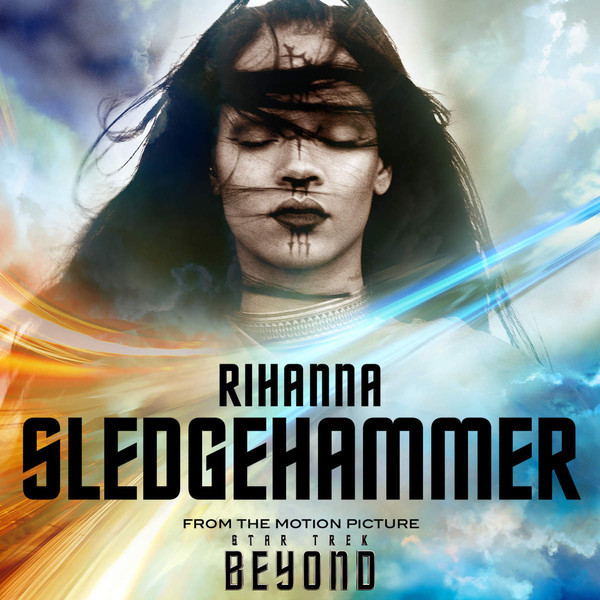
“Sledgehammer”
From the Motion Picture “Star Trek Beyond”
Westbury Road Entertainment, 2016
Here lies Rihanna’s least successful power-piano ballad, tacked onto a sci-fi epic that doesn’t fit it. (Do they even have pianos in the future? Or sledgehammers?) To be fair, it contains many of the same elements that have garnered Rihanna amazing results elsewhere: As the song opens, her vocal is throaty and compelling and the lyrics moody and confessional, with a magnetic, building tension. But nothing in its emotional or lyrical content justifies the will-to-bigness of the pounding chords and nearly shouted chorus. Even Rihanna seems a bit distant from the galactic importance she’s placing on this song. If the titular weapon was chosen to embody blunt power, the motif that actually stays with you is Rihanna wailing, “I hit a wall! I hit a wall!”—conveying the unfortunate impression that this song was a cry for help from her writing team. –Edwin “STATS” Houghton
Listen: “Sledgehammer”
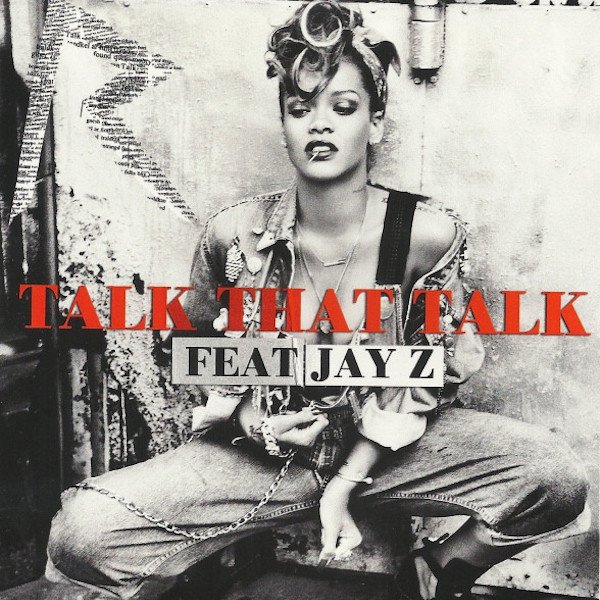
“Talk That Talk” [ft. Jay Z]
Talk That Talk
Island Def Jam, 2012
On paper, “Talk That Talk” sounds like a pretty good deal: Jay Z and Rihanna trading sexually charged bars over Stargate production. The track opens with catchy Nintendo synths and trap drums; a Coldplay-ish melody fleshes out the beat as Jay speaks his clout and Rihanna intones, distantly, “Yeah, boy, I like it.” That underpaid-porn-star ennui says it all: As an invitation to be inventively naughty, “Talk That Talk” feels formulaic and tame, employing many of the same bits of ear candy that make “Rude Boy” such a great song without any of that hit’s originality or urgency. –ESH
Listen: “Talk That Talk” [ft. Jay Z]
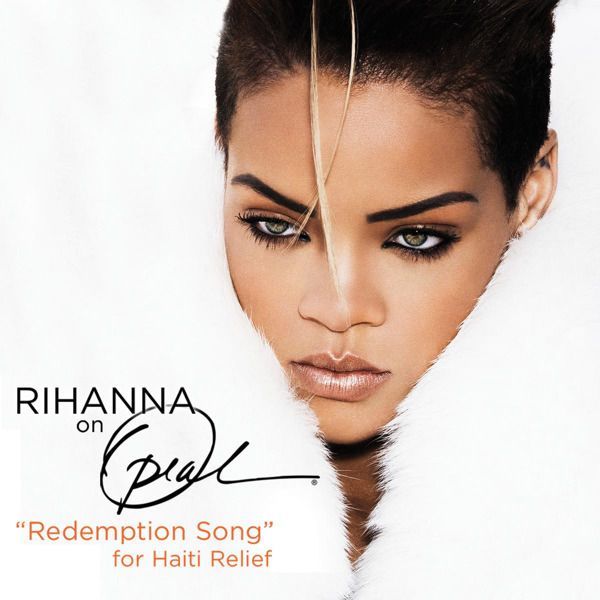
“Redemption Song” (For Haiti Relief) [Live from Oprah]
Island Def Jam, 2010
Rihanna was a longtime fan of “Redemption Song”—she had covered Bob Marley & the Wailers’ song of upliftbefore 2010, when she released her recording of it as a charity single for Haiti after the country’s devastating earthquake. She talked about the song’s personal meaning during itslive premiere on Oprah before delivering a serviceable if largely forgettable performance. Though there’s something to be appreciated in the cross-cultural aspect, aside from charitable contribution, there’s little incentive here to deviate from Marley’s original. –Briana Younger
Listen:“Redemption Song” (For Haiti Relief) [Live from Oprah]
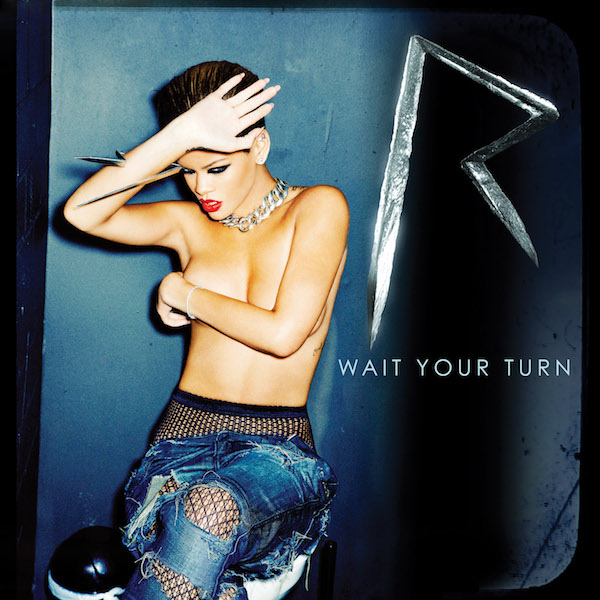
“Wait Your Turn”
Rated R
Def Jam Recordings, 2009
Over an ominous, marching beat, Rihanna’s chant of “The wait is ova” repeats, uh, ova and ova without much resolution or even excitement. A generic banger every now and then is fine, but “Wait You Turn” never even attains that status. Not canon. –Rebecca Haithcoat
Listen:“Wait Your Turn”
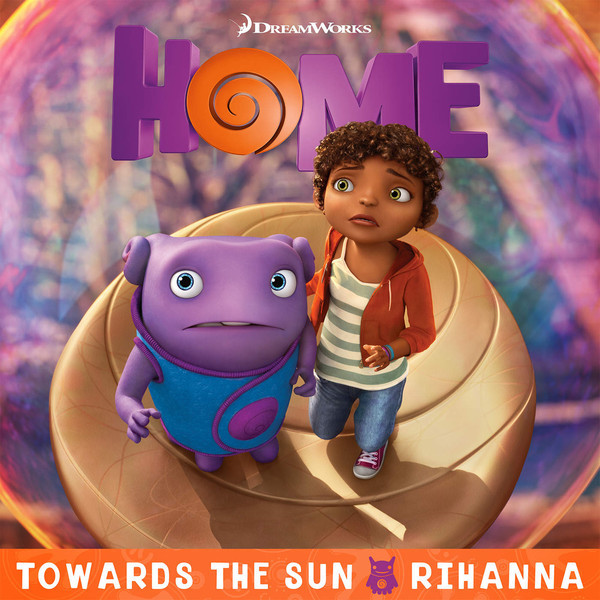
“Towards the Sun”
Home (Original Motion Picture Soundtrack)
DreamWorks Animation/Westbury Road, 2015
As pop anthems with pretensions of grandeur go, “Towards the Sun” is not a bad one, really: It’s a soundscape crafted as meticulously as any lite-FM hit, created for the alien invasion cartoon Home (for which Rih voiced a character). In going high-note-for-high-note with a full choir of castrato voices on the weirdly ascending refrain, Rihanna sets herself a particularly difficult vocal challenge, and she executes it with admirable grace. The hook stands out from her usual arsenal, but it also feels emotionally removed from the real Rihanna oeuvre and the themes she’s explored in it. “Towards the Sun” serves its cartoon concept, and might even inspire a quick falsetto sing-along if you happened upon it, but you’d have to be a truly obsessive Rihanna completist to seek it out. –ESH
Listen: “Towards the Sun”
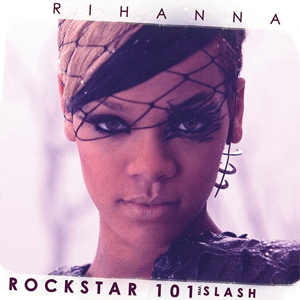
“Rockstar 101” [ft. Slash]
Rated R
Island Def Jam, 2009
Every pop star eventually releases something like “Rockstar 101,” collaborating with a classic-rock legend with wildly varying intents and results. (Peak: Kesha and Iggy Pop. Nadir: Mick Jagger and anyone he collaborated with past 2000). While “Rockstar 101” was roundly laughed off at the time, in retrospect, Rihanna demonstrates early signs of indifferent swagger and the genre reclamation she’d repeat more mutedly in “FourFiveSeconds.” The most rockstar move here might be relegating Slash to background squall. It signified that the R in Rated R might as well have been “reinvention”: taking an artist still known for lightweight dance songs into territory that was tougher, rougher, badder. –KSA
Listen:“Rockstar 101” [ft. Slash]
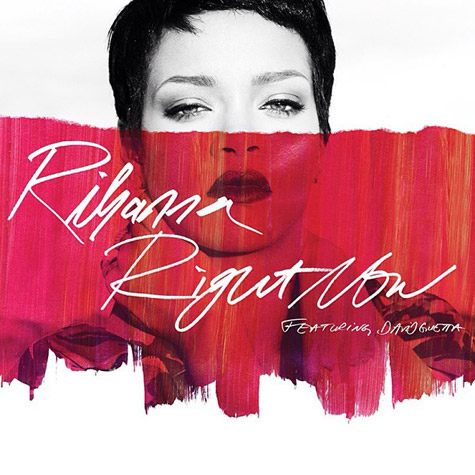
“Right Now” [ft. David Guetta]
Unapologetic
Island Def Jam, 2012
With a space-age, swelling EDM beat courtesy of David Guetta, this mammoth track seemed ready-made for raking millions soundtracking advertising campaigns. It quickly wound up as the intro music for the2013 NBA Playoffs and in Budweiser’s “Made for Music” campaign. It isn’t a particularly memorable piece of her catalog, but Rihanna is nothing if not capable of always securing the bag. –BY
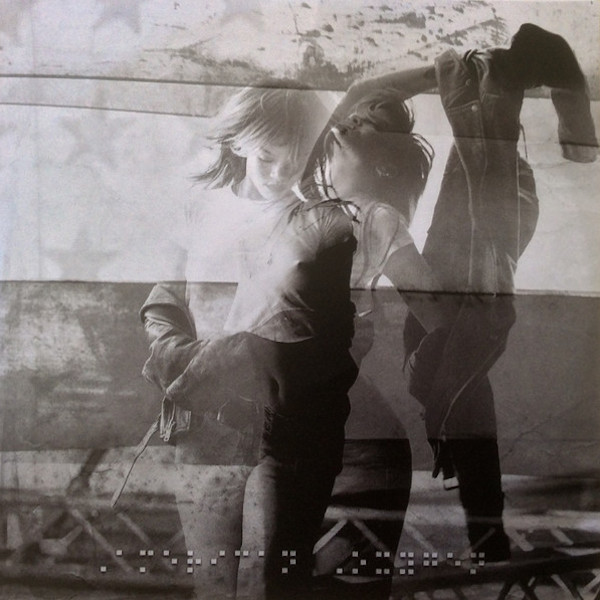
“American Oxygen”
Westbury Road, 2015
What to do with “American Oxygen”? While it finds Rihanna spreading her wings to address big themes, it too often feels like a self-conscious attempt to write her into the American songbook of patriotic heartbreak—the one boasting Bruce Springsteen’s “Born in the U.S.A.”and Jimi Hendrix’ “Star Spangled Banner”—with wobbles and 808 kicks replacing guitar feedback. Although touching on something important—particularly in the line, “We sweat for a nickel and a dime/Turn it into an empire”—the song builds without delivering emotionally or conceptually. Still, Rihanna stretches thematically here, and with her moody vocal around heavy minor chords, “American Oxygen” is the sound of her feeling out a particular mode that she has taken to sublime levels elsewhere: the ambivalent anthem. –ESH
Listen:“American Oxygen”
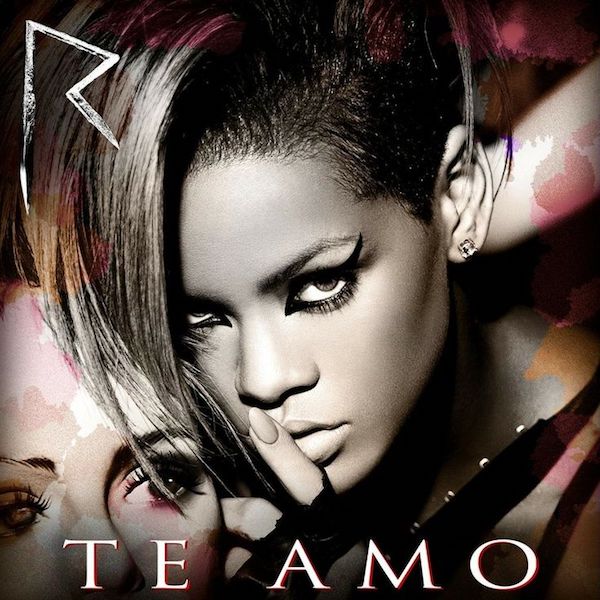
“Te Amo”
Rated R
Island Def Jam, 2009
Rihanna loves turning convention on its head, and on “Te Amo,” she imagines unrequited love between two women. The track, which never made much noise in the U.S., finds Rihanna struggling as the object of another woman’s affection. The slick, electro-Latin track was of special interest when the video came out—it features the former Victoria’s Secret model Laetitia Casta as a femme fatale in love with our hero. –RH
Listen:“Te Amo”
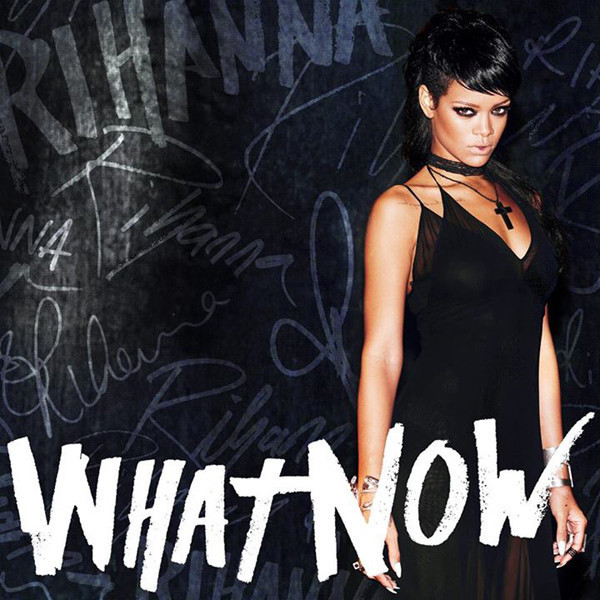
“What Now”
Unapologetic
Island Def Jam, 2012
This song is all about contrasting binaries: delicate piano collides with roaring cymbal and bass as Rihanna’s sweet singing erupts into full belting. Only an artist with a voice as unique as Rih’s could pull off the dueling vocals without sacrificing emotion on either end. Even though it got the single and video treatment, “What Now” still feels criminally slept on. –Briana Younger
Listen: “What Now”
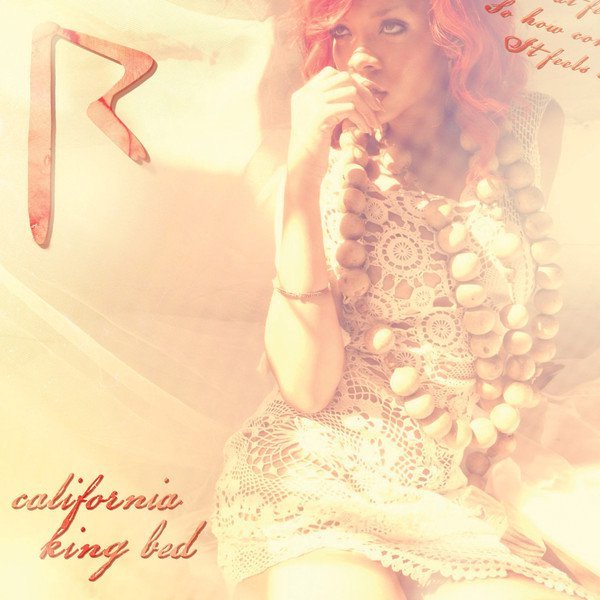
“California King Bed”
Loud
Island Def Jam, 2010
Possibly worse than any breakup is the torturous period before it, that time spent prolonging the inevitable. It’s one of those feelings only recognizable to those who’ve experienced it, but Rihanna captures it perfectly in this rock serenade, its splashy guitars provide a glittering backdrop for her classic diva chops. For all of her bombastic EDM and pop singles, the softer sides of the singer have provided some of her most arresting moments. –BY
Listen:“California King Bed”
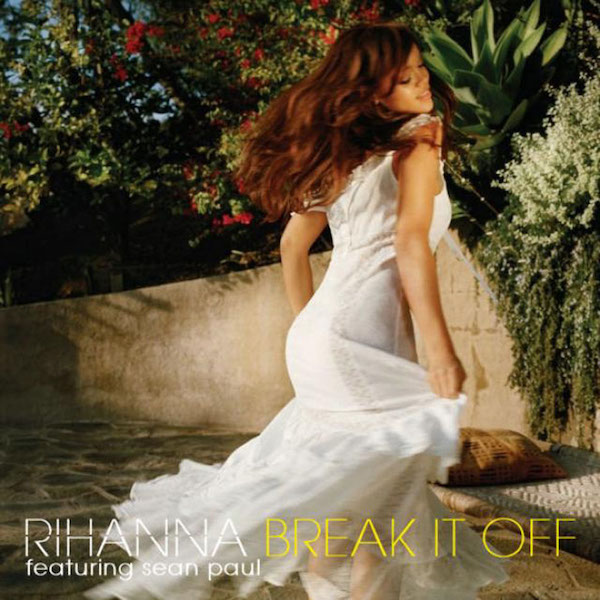
“Break It Off” [ft. Sean Paul]
A Girl Like Me
Island Def Jam, 2006
The elements of “Break It Off” aren’t rocket science: This is an overtly sexual, eminently danceable club song. The beat is an innovative and deceptively simple trap-soca hybrid that splits the candy-painted synths and 808 palette of the Atlanta club sound with triple-time drums. The chemistry between Sean Paul and Rihanna works; showing her Afro-Caribbean roots always seems to bring something extra from her. None of these elements surpass the best solo work of each vocalist, and as a duet, it’s far overshadowed by Rihanna’s later work with Drake, but each element does exactly what it needs to achieve thrust. –ESH
Listen: “Break It Off” [ft. Sean Paul]
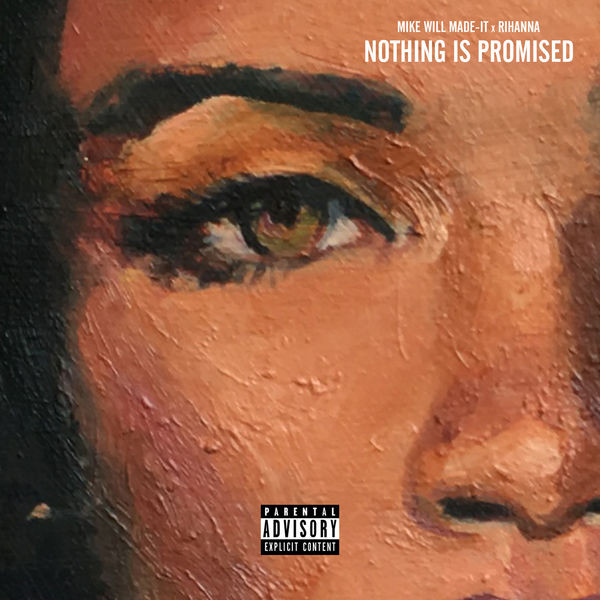
“Nothing Is Promised” [w/ Mike WiLL Made-It]
Ransom 2
Westbury Road/Interscope, 2016
The myth of Rihanna is that she does whatever the fuck she wants, when she wants, so her slurred verses on “Nothing Is Promised” snap nicely into that image. Breezing through a Mike WiLL Made-It beat that sounds earmarked for Future—chiming bells, glistening trap drums—she makes like a rapper, loosening her tongue and spitting flossy bars with blurry words cowritten by Future. Also interesting here is the edge to Rih’s voice, which replaces the playfulness she usually employs. “I’m past niggas,” she purrs. “I love you, money.” Two can play at this game, and at least on “Nothing,” it’s cash flow over bros. –RH
Listen: “Nothing Is Promised”
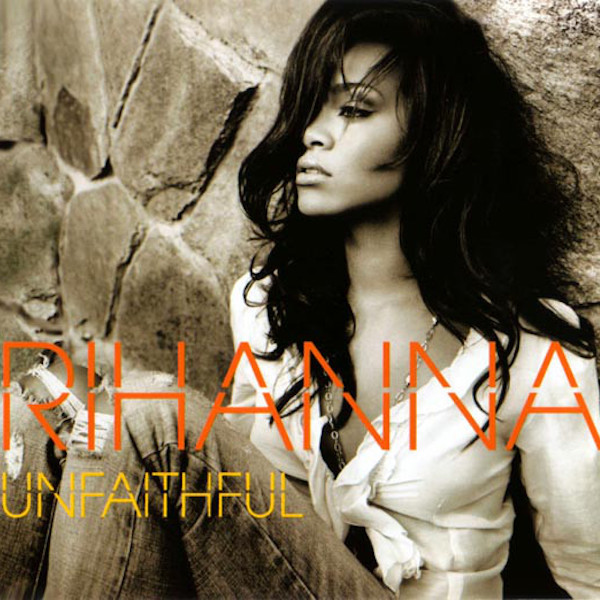
“Unfaithful”
A Girl Like Me
Island Def Jam, 2006
R&B is full of men trying to atone for their indiscretions and women trying to navigate the aftermath but, every now and then, the tables turn. Twisting this entire dynamic on its face, Rihanna is apologetic but also content to continue with her cheating ways, likening the act to murder. Like her character, her voice is imperfect but redemptive, spilling out over orchestral strings and piano that give the song’s doom and gloom a noble sheen. Infidelity never sounded so charmingly reflective. –BY
Listen:“Unfaithful”
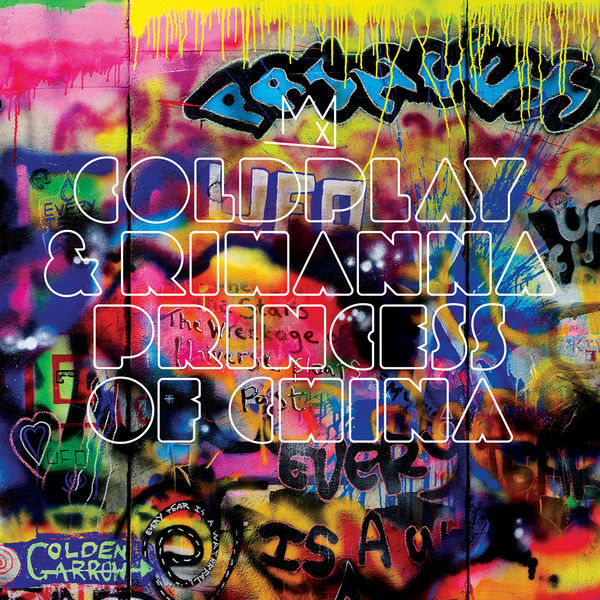
“Princess of China” [w/ Coldplay]
Mylo Xyloto
Parlophone Records, 2011
If there were a list of unexpected Rihanna collaborations, this one with Coldplay would fall in the top percentile. Their voices blend surprisingly, casually well, content to let the production claim most of the spotlight. The song is executed quite well, considering the combination of otherwise disparate styles. The skittering synths and pulsating bass make this flamboyant breakup song readymade for a finale at Electric Daisy Carnival. –BY
Listen: “Princess of China”

“Cheers (Drink to That)”
Loud
Island Def Jam, 2012
Of all the Loud singles, “Cheers” fits best with the Rihanna of today, finding her leaning both into patois and blasé cool. Said cool comes mostly secondhand, via nods to“Ignition (Remix),”“Gin and Juice,” Coyote Ugly, a great deal of product placement and, of course Avril Lavigne’s “I’m With You” (the latter via a garish, unignorable sample). At least “Cheers” knows exactly what is and doesn’t try to be anything else; toward the end, it cuts to a presumably drunken last-call singalong, the song’s natural habitat. After all, one constant in life is that no matter what shit happens Monday to Friday, there will always be another freakin’ weekend, and people need to drink to something. –KSA
Listen:“Cheers (Drink to That)”
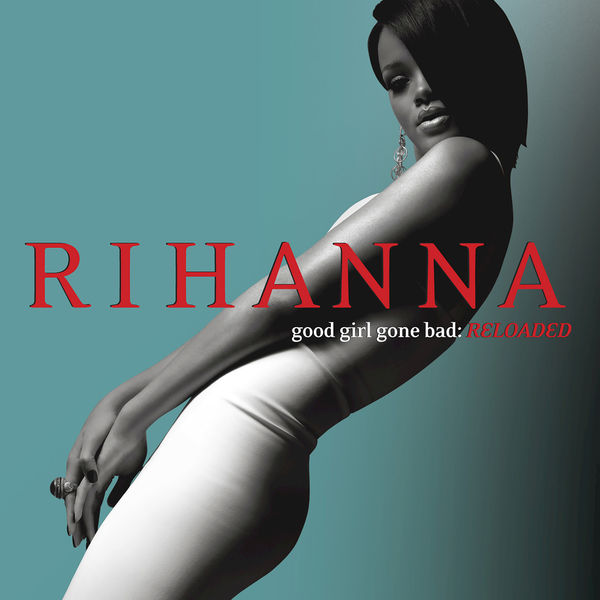
“Breakin’ Dishes”
Good Girl Gone Bad
Island Def Jam, 2007
Good Girl Gone Bad, to its credit, goes past sexy-baby mode—that clichédpop star’s sexual awakening narrative—and includes actual and awesome acts of girls going bad. This track itself is slight, with Tricky Stewart and The-Dream on autopilot, but it includes Rihanna rapping about smashing dishes, bleaching and burning her man’s clothes, and torching the house. All this for someone who Rih admits might not actually be cheating (“Man, I don’t know”). It’s Rihanna’s very own “Ring the Alarm,” and almost as bracing. –KSA
Listen:“Breakin’ Dishes”
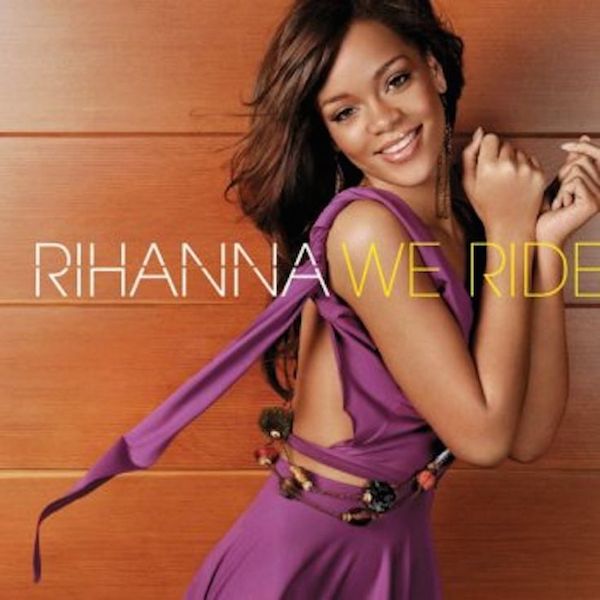
“We Ride”
A Girl Like Me
Island Def Jam, 2006
It’s odd now to hear Rihanna on such a bubblegum single—even “Pon de Replay” has swagger to it—but it’s not like it doesn’t work. “We Ride” draws upon 2000s R&B and bubblegum pop to turn a ride-or-die lyric into a wistful, swooning plaint to a less-than-devoted lover, nestling this among wisps of backing vocals, acoustic guitar, and twitchy percussion just this side of trap. “We Ride” wasn’t on Music of the Sun,but it sounds like the sun. – KSA
Listen:“We Ride”
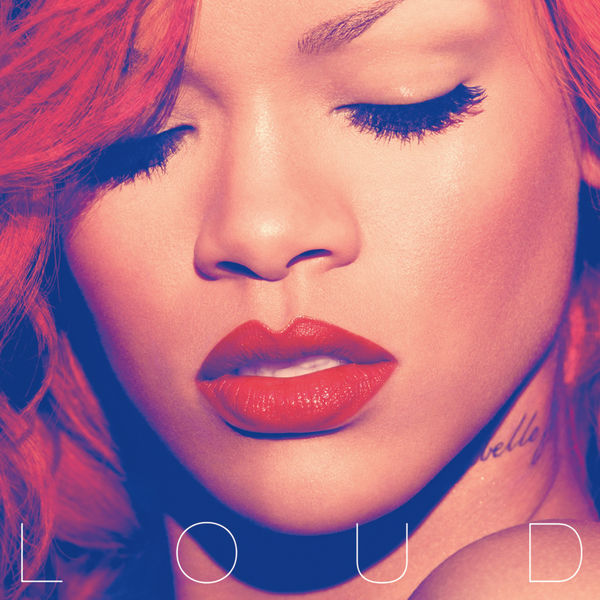
“Raining Men” [ft. Nicki Minaj]
Loud
Island Def Jam, 2010
The glossy trap sheen and theatrical Nicki Minaj guest verse are excellent distractions from the fact that this is a rip-off of Beyoncé’s “Diva.” Still, plenty of people will forgive rip-offs (ahem, “Fancy”). But while Rihanna’s voice sounds as cozy as a blanket on a dreary day, she’s not saying much, and she’s saying what remains without any real conviction, which is probably why “Raining Men” never cracked the Billboard Hot 100. –RH
Listen: “Raining Men” [ft. Nicki Minaj]
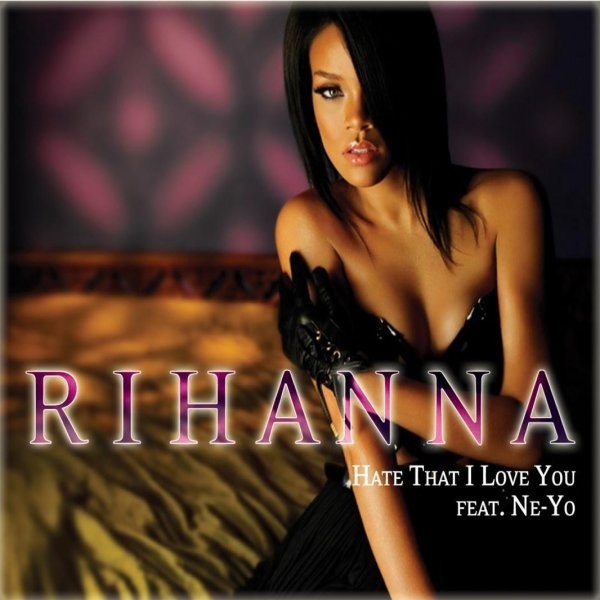
“Hate That I Love You” [ft. Ne-Yo]
Good Girl Gone Bad
Island Def Jam, 2007
It’s not hard to picture Rihanna and Ne-Yo staring into each other’s eyes as they recorded this sweet duet—their harmonies are heartfelt, and their synergy feels organic. Rih’s voice retains its teenage innocence on this bittersweet love song that ultimately ends up on the softer side. Unfortunately, it largely sounds like a remix of Ne-Yo’s “So Sick,” which takes away from its potential to be a truly standout Rih record. –Briana Younger
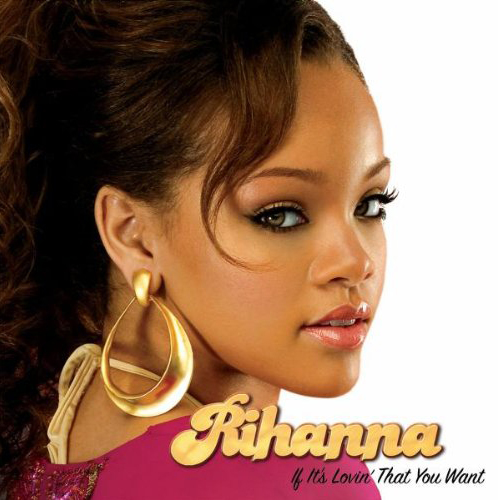
“If It’s Lovin’ That You Want”
Music of the Sun
Island Def Jam, 2005
Adroitly flipping Boogie Down Productions’ Bronx patois, Rihanna’s vocal transforms toughness into a breezy, catchy melody—an early indicator of how she would soon balance hip-hop, pop, and her West Indian roots in a way that felt genuine and effortless. Even her slight pitchiness on the song’s bridge feels like growing pains that serve the overall puppy-love vibe. “If It’s Lovin’” still fits firmly into the radio-ready template established by “Pon De Replay,” and it gave us a compelling early glimpse at the woman Robyn Rihanna Fenty would become. –ESH
Listen: “If It’s Lovin’ That You Want”
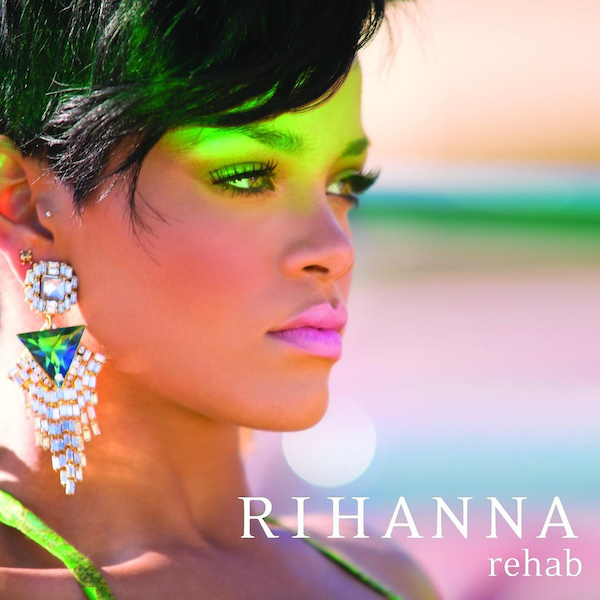
“Rehab” [ft. Justin Timberlake]
Good Girl Gone Bad: Reloaded
Island Def Jam, 2008
Instead of leaving it to industry suits, who never miss a Lolita opportunity, Rihanna herself steered the project that sought to sex up her image, Good Girl Gone Bad. Yet she never really had an “innocent” image to sully; even in her early videos, there was a knowing gleam in her eye. It’s why she’s able to pull off “Rehab,” a song that would’ve been a bit mature for any other 18-year-old to record, and why she doesn’t wilt next to Justin Timberlake—no small feat, considering he wrote and co-produced the song, and he was coming off 2006’s FutureSex/LoveSounds. Here Rihanna doesn’t rely on any expected theatrics, playing it straight, which instantly heightens the drama. Singing almost in a monotone, she allows the exhaustion and anguish of addiction to rise to the surface. The song is fine, but the shrewd, early creative control is what’s really notable here, as a harbinger of things to come. –RH
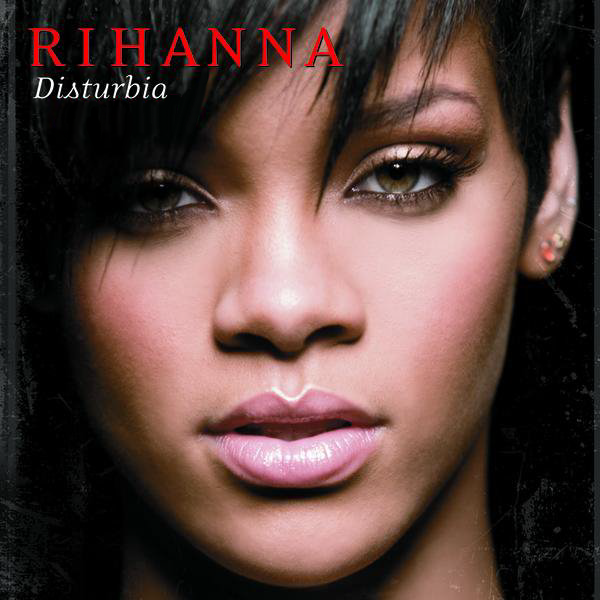
“Disturbia”
Good Girl Gone Bad: Reloaded
Island Def Jam, 2008
One of those weird synchronicities: a phrase popularized in a 1961 bestseller about Cold War suburban malaise bubbled up twice, a few decades later, in a Shia LaBeouf film and a Rihanna single. The former went with the suburban angle, but the disturbia on offer from RiRi is straight from the co-writer Chris Brown’s head. Inevitably, it doesn’t entirely hold up; Brown’s subsequent decade shrouds “Disturbia” in now-unavoidable subtext, and Rihanna’s delivery of dense lyrics like, “If you must be falter, be wise” come off as the least convincing philosophical koans in history. But out of this context, “Disturbia” is still plenty disturbing, largely because Rihanna avoids histrionics: inhabiting a remarkably dark dance track without ado, singing about nightmares and monsters as if they’re all too familiar. Even the introductory horror-film scream is low-key. –KSA
Listen: “Disturbia”
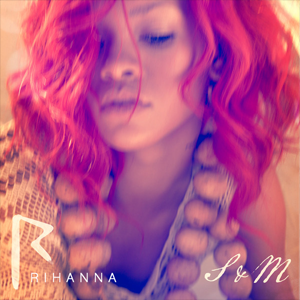
“S&M”
Loud
Island Def Jam, 2010
In which Rihanna re-uses the electro stomp of “SOS” to exult in a different sort of tainted love. Songwriter Ester Dean’s topline may be lyrical fetish dress-up, but it’s perfectly good at it—it’s more explicit, anyway, than anything that arrived years later on the soundtrack to Fifty Shades of Grey. Rihanna’s more than game; the song is really more of a bottom thing, but Rihanna unquestionably dominates it, with growly gusto and impish glee. But the less said about the remix, featuring a narcotized Britney Spears, or video director Melina Matsoukas’ porno parody of Chicago’s “We Both Reached for the Gun,” the better. –KSA
Listen: “S&M”
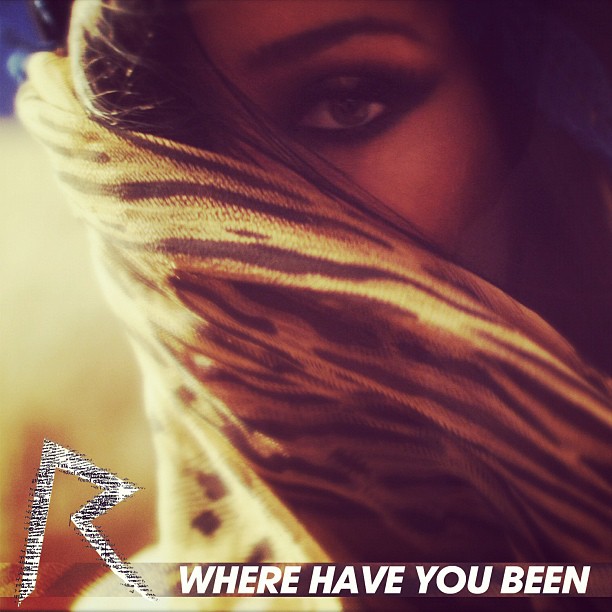
“Where Have You Been”
Talk That Talk
Island Def Jam, 2011
“Where Have You Been” is a fairly blatant attempt to recapture the club juice of “We Found Love”—producers Cirkut and Dr. Luke even sneak in that Calvin Harris drop toward the end—but it’s really the grown-up version of “Don’t Stop the Music.” There’s no more coyness, no more surprises, just a monomaniacal focus on dancing your way to get what you like. (What the market likes, too: The eh-ehs of the pre-chorus are a clear “Umbrella” nod.) It’s the moment EDM Rihanna reached critical mass, as widely and shamelessly as possible—and with the presence she developed over the past half-decade or so, she made it work. –KSA
Listen: “Where Have You Been”
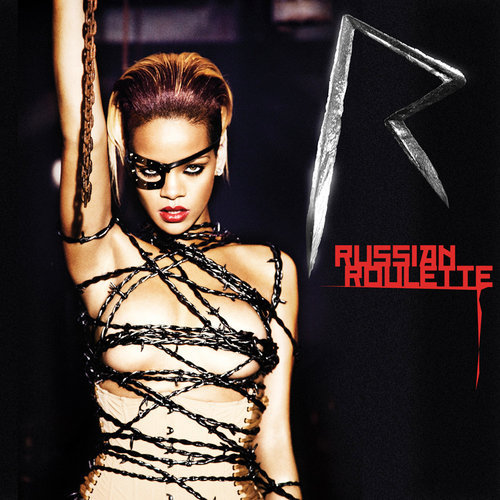
“Russian Roulette”
Rated R
Island Def Jam, 2009
Those of us given to darkness are drawn to the ominous “Russian Roulette” and the revelation of a Rihanna unafraid of her own shadows. The bass resembles a heartbeat, slow and steady despite the growing tension around it, heightened by the dice and revolver accents. Melodramatic? Sure, but the metaphor of falling in love as a game of Russian roulette doesn’t seem that off-base—at least not to someone who’d just been through what Rih had. Her voice quivers ever-so-slightly as she sings, and even though the whole scene is overdone, it captures exactly what it set it out to do. –BY
Listen: “Russian Roulette”
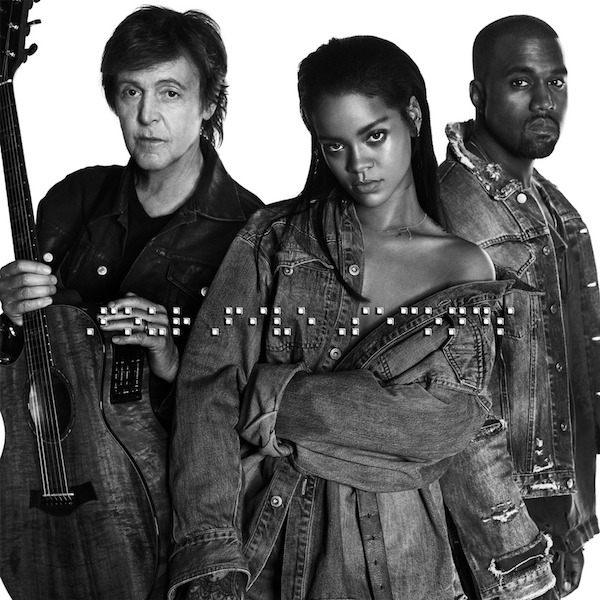
“FourFiveSeconds” [w/ Kanye West and Paul McCartney]
Westbury Road, 2015
This one is for everybody who doubted Rihanna could sing. With its stripped-down production, this “wait, what?” collaboration between Rihanna, Kanye West, and Paul McCartney has no Auto-Tuned nooks or bass-filled crannies in which to hide. Not that Rihanna needs to—hear that little mouse of a squeak in her first lines? The Sunday morning gospel belt over the organ? We rarely hear Rih’s voice in the wild, but those beautiful imperfections make us hope that this won’t be the last time. –RH
Listen:“FourFiveSeconds”
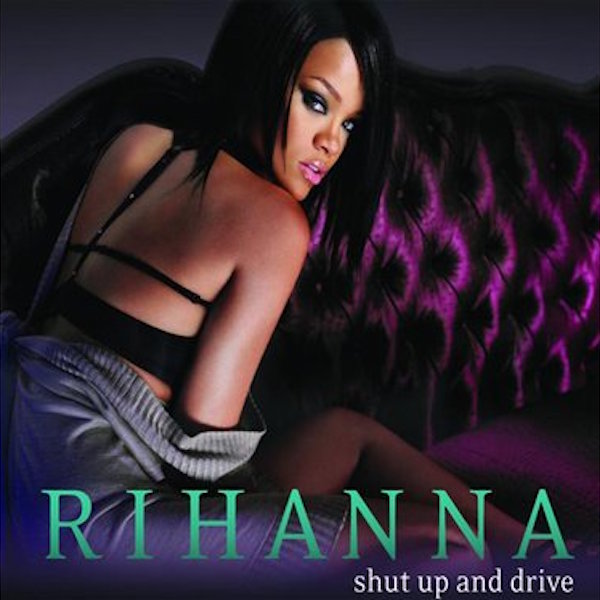
“Shut Up and Drive”
Good Girl Gone Bad
Island Def Jam, 2007
Cranked with New Order’s “Blue Monday” sample, “Shut Up and Drive” is familiar, but its popularity also is due to Rihanna’s early, emergent sex-positive identity. Her vocals are thin here and the lyrics—lots of double entendre car talk—are laughably obvious. Yet there’s still a molasses warmth to her voice that’s a welcome respite from the bubblegum blandness of many young, female pop stars. –RH
Listen: “Shut Up and Drive”
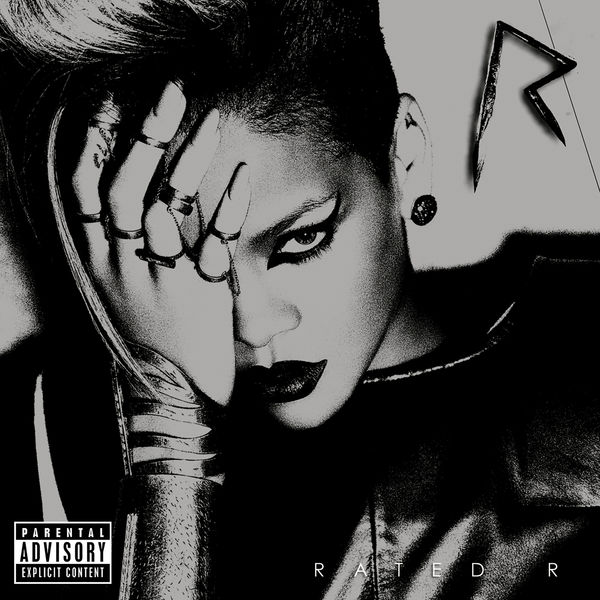
“Hard” [ft. Jeezy]
Rated R
Island Def Jam, 2009
For many of her fans, Rihanna is at her best when she’s at her cockiest, and “Hard” was an early taste of just how grand the singer’s bravado can be. She isn’t nearly as convincing here as she would later become, but the synth and tinkling piano in The-Dream and Tricky Stewart’s production, coupled with the guest verse by Jeezy, give the song some extra edge. At the time, the belligerence was a gratifying moment for people thirsty for Rihanna to emerge impervious following the fateful 2009 Grammys. Needless to say, her prophetic “that Rihanna reign just won’t let up” line has aged very well. –BY
Listen:“Hard” [ft. Jeezy]
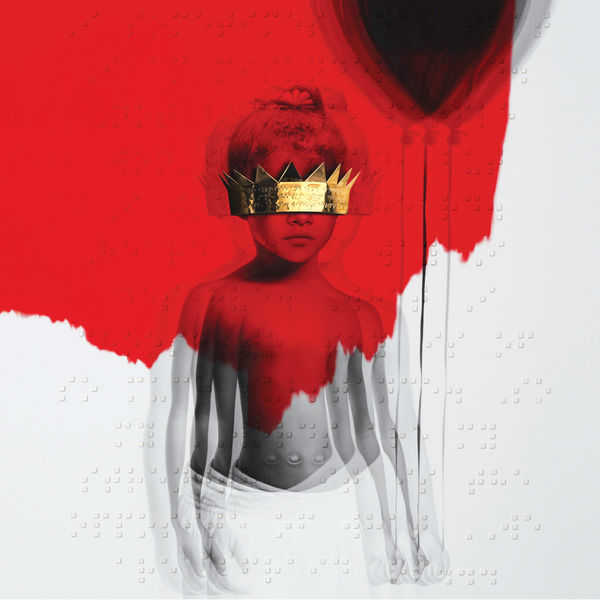
“Sex With Me”
ANTI
Westbury Road, 2016
That sex sells is old news, but this ANTI bonus track is so deliciously shameless, it should’ve been given priority placement on the original edition. Rihanna is teasing and playful, completely aware of the fantasies she arouses, and she wields her sexuality better than any other pop star. It’s not a gimmick or tool but something she authentically embodies, existing to be manipulated only by its owner as she wishes, and her enjoyment is more than clear. –BY
Listen:“Sex With Me”
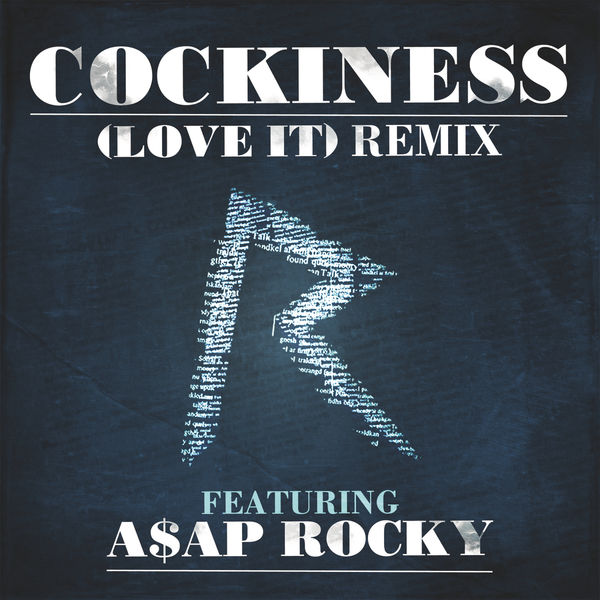
“Cockiness (Love It)” (Remix) [ft. A$AP Rocky]
A$AP Rockyrides a tweaked-out beat by Bangladesh in gloriously jiggy fashion, but it’s Rihanna’s aerobic delivery of a checklist of nearly-unmentionable acts (“suck my cockiness”) that jerks you to attention. Rihanna raps like a cartoon character, her rubber-band mouth stretching out and popping back into place with these sly, sexed-up phrases. It’s risqué and funny and smart and smartass—and, most surprisingly, sexy. –RH
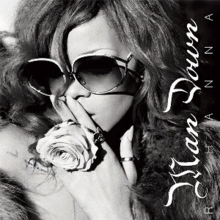
“Man Down”
Loud
Island Def Jam, 2010
“Man Down” will be remembered as one of the moments when Rihanna truly came into her own as an artist. Minting new fans across cultural and generational lines, the song works on many levels. The beat is a note-perfect tribute to the digitized reggae anthems of the ’90s; the lyrics are deliberately constructed as an answer to Bob Marley& the Wailers’ “I Shot the Sheriff.” It’s also one of Rihanna’s strongest vocal performances, a case where her natural Bajan patois and slight country twang perfectly frame the emotional immediacy. All these layers, however, hold up the urgent chorus, which, read literally, upends the misogynistic “Gz Up, Hoes Down” ethos of so much modern R&B, boldly articulating a pose that’s since become Rihanna’s resting stance.–Edwin “STATS” Houghton
Listen: “Man Down”

“SOS”
A Girl Like Me
Island Def Jam, 2006
Among the most maligned producers of the late ’00s was J.R. Rotem, known for big, unsubtle samples like Jason Derulo’s flip of Imogen Heap’s “Hide and Seek” and Sean Kingston’s lifting of “Stand By Me.” But sometimes big, unsubtle samples work, and “SOS”—an early hit for both Rotem and Rih—lifts the stomps of Soft Cell’s “Tainted Love” but ditches the Northern Soul torch song attached to them. The lyrics in its place aren’t great, with clumsy scansion and over-cleverness (“Feel this way-O-U are…”), so she alternately autopilots and karaokes through them. But the beat is undeniable: It’s the moment critics began to take Rihanna seriously. –KSA
Listen:“SOS”
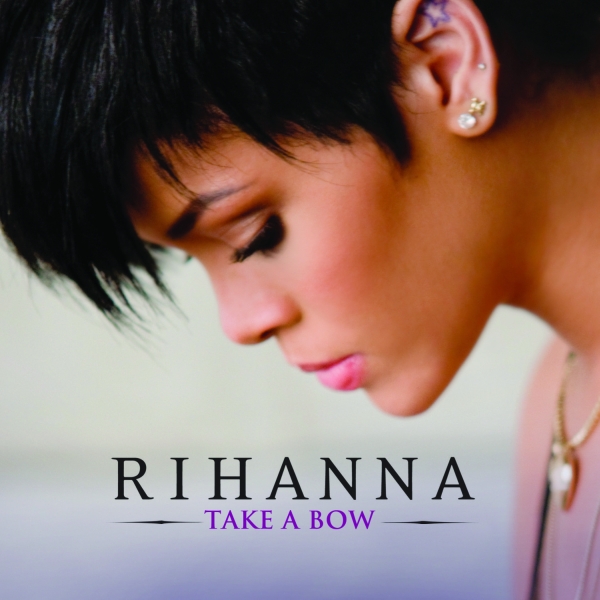
“Take a Bow”
Good Girl Gone Bad: Reloaded
Island Def Jam, 2008
“Take a Bow” is one of the most relatable singles Rihanna has released. It unambiguously captures the way hurt masquerades as anger after a failed relationship. There’s a sense of sorrowful relief each time she sings, “But it’s over now,” and that familiar feeling sticks long after the song ends. Though the naiveté in “Take a Bow” is unimaginable for today’s Rih, it was believable coming from her then-20-year-old lips. Like most of her lovelorn ballads, it’s a rare and humanizing moment for a larger-than-life persona. –BY
Listen:“Take a Bow”

“You Da One”
Talk That Talk
Island Def Jam, 2011
Rihanna has always been radio-friendly, but Talk That Talk, her sixth studio album, was racier fare: No matter how creatively rendered, no song with the lyric “suck my cock” is making it on the air. The exception is “You Da One,” the sweet, Dr. Luke-produced mid-tempo bouncer. Its lyrics are a little generic, especially considering the album’s other tracks, but its backdrop is a cloudless Caribbean day, and the midnight spell of “We Found Love” needed that balance. –RH
Listen:“You Da One”
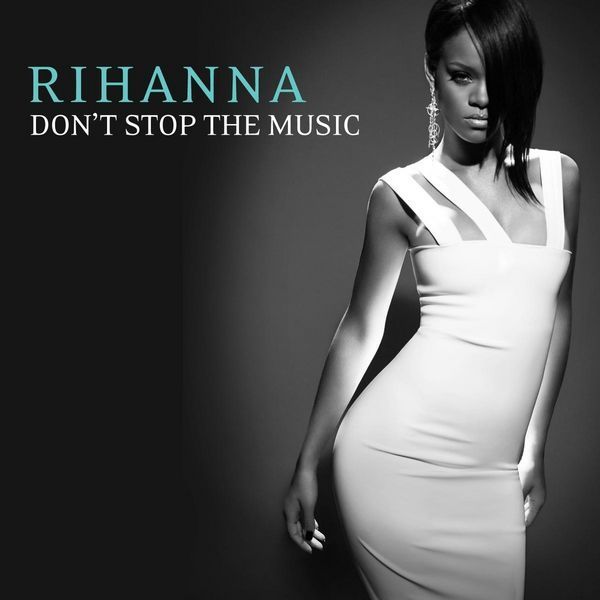
“Don't Stop the Music”
Good Girl Gone Bad
Island Def Jam, 2007
Good Girl Gone Bad’s fourth single is also its most obvious retread. It pulls the same trick as its spiritual predecessor, “SOS,” plucking a dance cover from the ’80s for even further EDMification—in this case, Michael Jackson’s “Wanna Be Startin’ Somethin’,” specifically the breakdown from the Cameroonian jazz-funk artist Manu Dibango. But producers Stargate, who would work with Rihanna for years, take Dibango’s block-party exuberance and Jackson’s handclaps and jack up the contrast: a ruthless four-on-the-floor heightened and sharpened from its source material. What would otherwise just be the umpteenth self-referential plea to a DJ becomes driven, even desperate; it's not a night out but a mission. –KSA
Listen:“Don't Stop the Music”
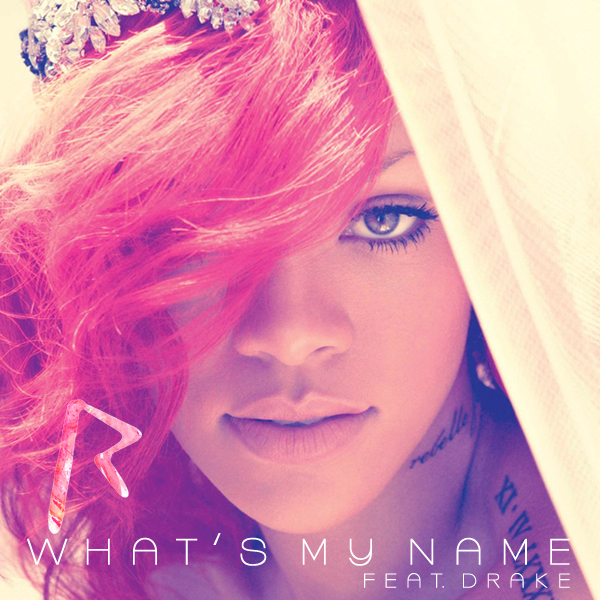
“What’s My Name” [ft. Drake]
Loud
Island Def Jam, 2010
In a country of prudes and secret porn obsessives, Rihanna’s open embrace of her sexuality is like that first inhale of air after you’ve left a smoggy city. Like Madonna, Rihanna knows there’s power in submission, but she’s comfortable playing both positions in the flirty, R&B-flavored confection “What’s My Name.” (That “oh na, na” cry immediately recalls the “na na, you can’t get me” playground taunt.) Toying with gender roles even more, she flips the rap script and demands Drake say her name. A singsong melody on the hook means everybody kept asking her from them on. –RH
Listen: “What’s My Name” [ft. Drake]
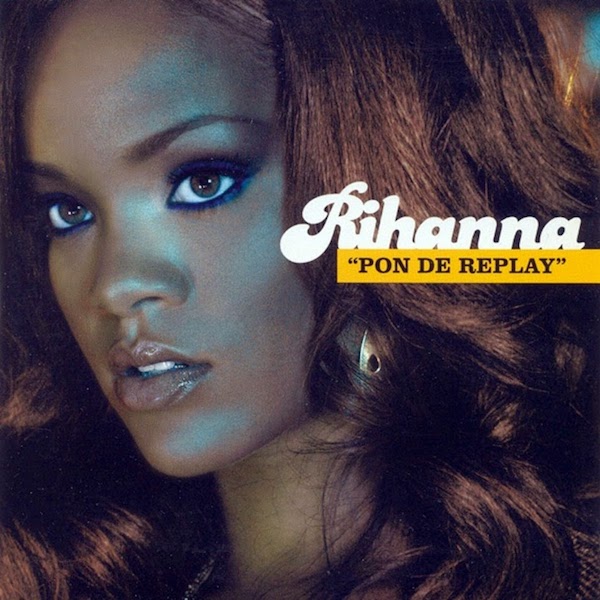
“Pon De Replay”
Music of the Sun
Island Def Jam, 2005
Ironically, the song that launched one of pop music’s great voices was almost entirely about the beat. Jay Z, who signed Rihanna partially on the strength of her “Pon De Replay” demo, later revealed that he almost passed because he felt the song was “too big for her.” Indeed, with its catchy “Hey, Mr. DJ” hook and a beat that drew heavily from dancehall, “Pon De Replay” seemed destined to be a club hit that would define its singer. And though the track launched an artist of much greater versatility than its “one by one, even two by two” bars might suggest, her effortless facility in riding a riddim also signaled that, no matter how far she roved, dancehall would always be in her DNA. –ESH
Listen: “Pon De Replay”
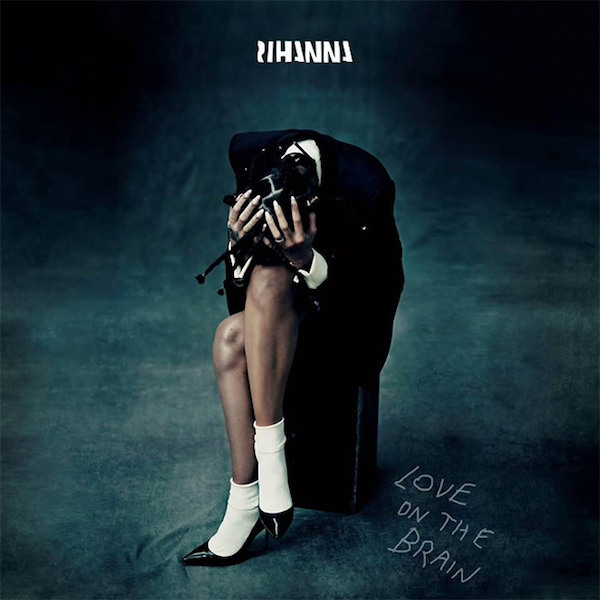
“Love on the Brain”
ANTI
Westbury Road, 2016
While much of ANTI is driven by Rihanna’s soulful interpretation of mumble-rap, the retro doo-wop of “Love on the Brain”—reportedly the first song written for the album—fits right in. A classic torch song, it shows off Rihanna’s mature vocal range, swelling from a scratchy, whispering scat worthy of Ella Fitzgerald into gut-bucket blues, downshifting to a whimsical, Prince-worthy bridge. This is so far stylistically from the up-to-the-nanosecond sound of “Needed Me,” you could be forgiven for mistaking RiRi for someone else entirely. –ESH
Listen: “Love on the Brain”
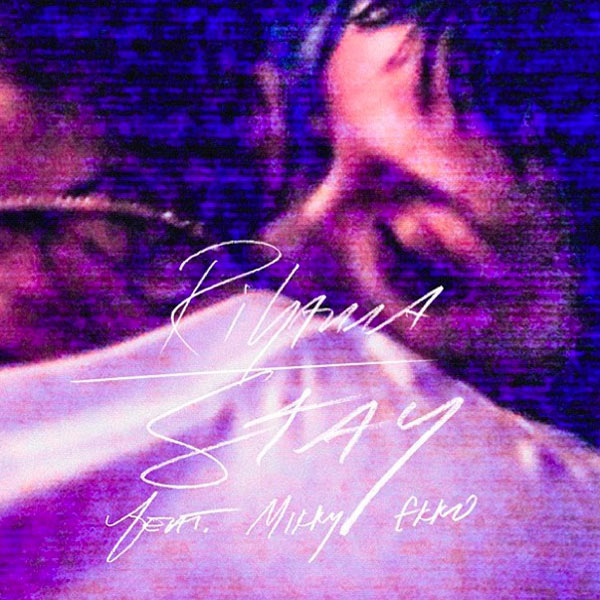
“Stay”
Unapologetic
Island Def Jam, 2012
“Stay” may be Rihanna’s most powerful ballad to date. Its spareness allows her to show her full range of idiosyncratic vocal modes, which move from warm, crooning whisper to soaring power-notes imbued with an icy numbness, then break with emotion at just the right moments. Songwriter Mikky Ekko’s shrill falsetto makes an unlikely but extremely effective counterpoint to this virtuoso performance, but even though it’s his song, it’s really her performance. Rihanna feels so comfortable, so in control of her technique, that she delivers a kind of sonic method acting. While the reverent chorus, “I want you to stay” follows a great tradition of ballads, everything here feels new, raw, and honest. –ESH
Listen: “Stay”
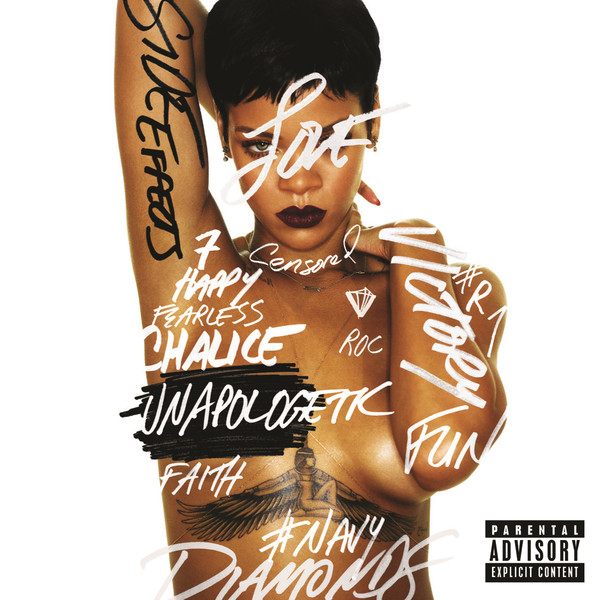
“Loveeeeeee Song” [ft. Future]
Unapologetic
Island Def Jam, 2012
Sleek and star-streaked yet still imbued with warmth, “Loveeeeeee Song” is a modern love duet that deals in that most classic of pairings—the rapper and the R&B singer. In 2012, Future had yet to get his heart broken by a different R&B star, and Rihanna was considering reconciling with Chris Brown, so they were only lovers on wax. Still, both sound like they’ve ripped these feelings up from the very roots, and the pairing of Future’s warbled yodel and Rihanna’s rich, throaty voice is oddly satisfying. That her voice was perhaps so choked with emotion over Brown, less so. –RH
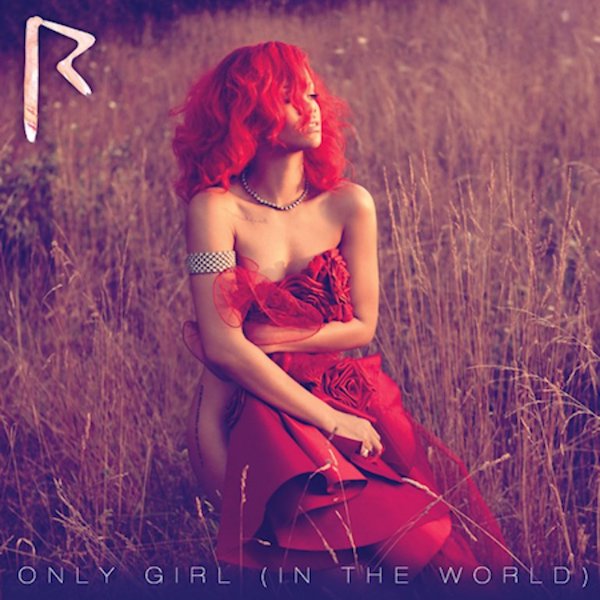
“Only Girl (In the World)”
Loud
Island Def Jam, 2010
Rihanna’s no-fucks-given image is a relatively recent invention, and “Only Girl (In the World)” is when Rihanna gave all the fucks (in the world). It’s built on the same electro chassis as her late-’00s singles, but twitchier, more anxious, and more suited to pleading vocals; the lyrics are about hugging pillows and setting clingy traps, capped by a loud, belted feelings-bomb of a chorus. It’s the missing link between the house-diva emoting of the ’90s and the big, earnest feelings so ubiquitous in today’s festival EDM hooks. –KSA
Listen:“Only Girl (In the World)”
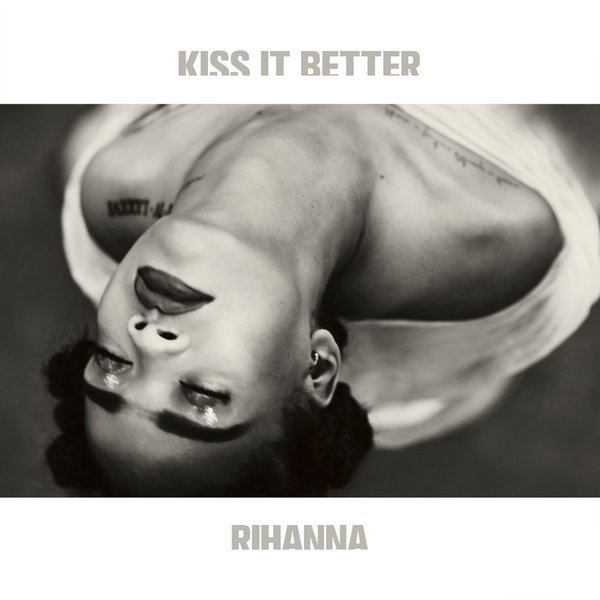
“Kiss It Better”
ANTI
Westbury Road, 2016
Emotional turmoil and sensuality are hard to combine in one song, but on “Kiss It Better,” Rihanna ups the ante, effectively flashing conceit and vulnerability in the same breath. She is both asking and expecting that her old lover will return to her side, and her smoky vocals, desperate but measured, make a convincing bid. But for once, Rih isn’t the only star here: Nuno Bettencourt’s mesmerizing electric guitar riff drives the song, recalling the best ’80s rock-pop ballad Prince never played. This is a strong contender for the best break-up-to-make-up song in her arsenal. –BY
Listen:“Kiss It Better”
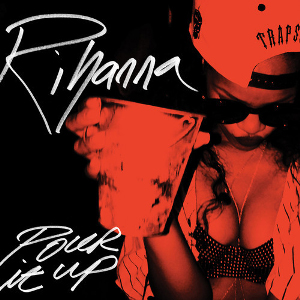
“Pour It Up”
Unapologetic
Island Def Jam, 2012
Rihanna, as we now know her, begins here. A collaboration with imperial-period Mike WiLL Made-It, who was fresh off Juicy J’s “Bandz a Make Her Dance,” “Pour It Up” takes Rihanna deep into a strip-club grotto in aboat made of money. What seemed like another dreary track on Unapologetic, an album full of them, took on new and very long life on urban radio. And Rihanna—luxuriating in her throaty, commanding lower register and her 360-deal largesse that she damn well earned, thank you—had never sounded more convincing. –KSA
Listen:“Pour It Up”
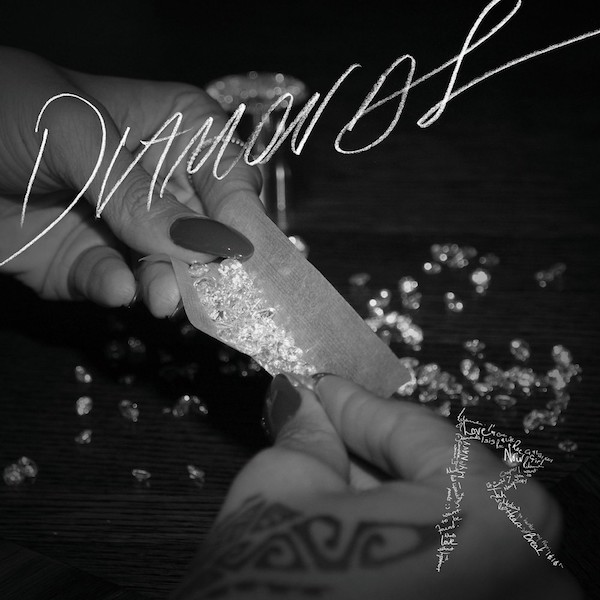
“Diamonds”
Unapologetic
Island Def Jam, 2012
Rihanna’s catalog is riddled with songs that reflect her troubled relationship with love, but “Diamonds” is a true diamond in the rough. The Sia-penned ballad put previously unmatched pressure on Rih’s vocal capacity, and she gracefully rose to the occasion. With triumphal but unobtrusive production, the Unapologetic single emphasizes her singing over all else for a result that is equal parts tender and regal. “Diamonds” added a notch of versatility to Rih’s belt for its subtlety and sentimental lyrics—and for someone whose private moments have been on full display, hearing her declare “I choose to be happy” will never get old. –BY
Listen:“Diamonds”
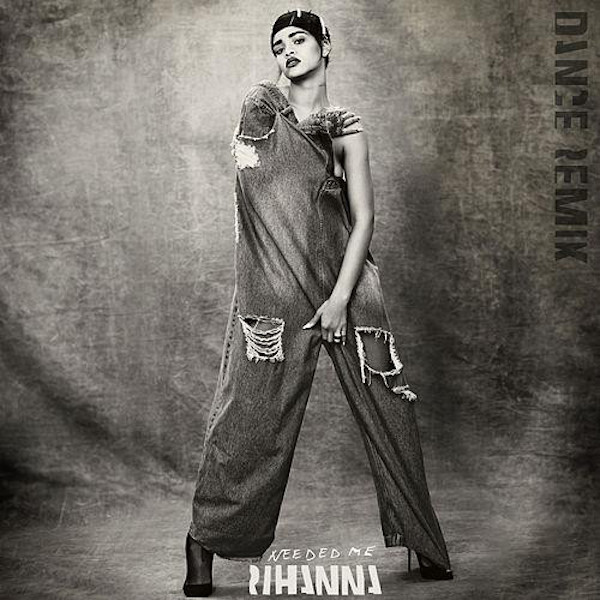
“Needed Me”
ANTI
Westbury Road, 2016
“Needed Me” is deceptively simple, an anti-tour de force. Apart from its taunting, haunting hook, it is less a song than a wisp of sonic smoke. The minimalist beat is something of a surprise, coming from trap-pop king DJ Mustard, all echoing atmospheric synths and disembodied voices. The verses are verbal daggers spoken melodically (“Didn’t they tell you that I was a savage/Fuck your white horse and a carriage”). It’s all intensely satisfying to listen to, as it takes the themes that run through much of Rihanna’s songs to their logical and inescapable conclusion, articulated with pure confidence.–ESH
Listen: “Needed Me”
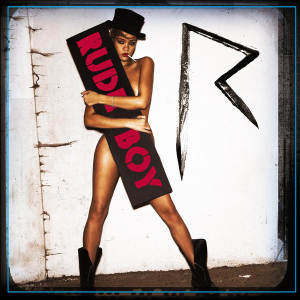
“Rude Boy”
Rated R
Island Def Jam, 2009
Other songs in Rihanna’s catalog better showcase her ever-improving voice or lyrics, but few capture her essence like “Rude Boy.” Released in 2009, almost five years after “Pon de Replay” dropped, “Rude Boy” felt like an introduction to a brand-new artist. Before, she’d played by the rules, but something had snapped, and Rihanna now shook off any regard for other people’s opinions. The sly “Rude Boy” proved she’d been miscast as the sweet pop princess pumping out senior prom anthems like “Umbrella,” and she had come into her own: Strutting out to a clipped, breezy R&B-flecked dancehall track that wriggles down into your hips, she’s cheeky and ballsy, a little bit raunchy, and at complete ease with her sexuality. “Babe, if I don’t feel it, I ain’t fakin’,” she sings. And she hasn’t since. –RH
Listen:“Rude Boy”
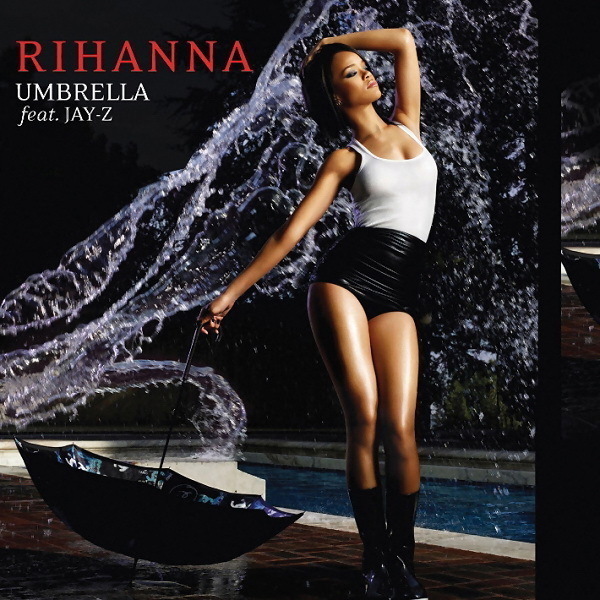
“Umbrella” [ft. Jay Z]
Good Girl Gone Bad
Island Def Jam, 2007
Although it’s arguable that anybody could have scored a world-changing hit with the catchiest song The-Dream and Tricky Stewart ever wrote—including Britney Spears and Mary J. Blige, both candidates for the track—Rihanna is the one who actually did it. (Several nations, in fact, blamed her for ruining their weather in 2007.) Rihanna’s electric-cool interpretation of the melody not only gives extra power to the moments where she lets the warm grain of her voice show through, it moves it completely beyond The-Dream’s signature doo-wop feel, opening up a whole new dimension to the text. Ultimately, the tension between her icy detachment and the girly innocence of the singsong “ella-ella-ay” refrain is what drives the song, undercutting the invitation of the lyric but creating a feeling of soaring untouchability that perfectly matches the theme of Jay Z’s “fly higher than weather” verse. Rihanna renders any other singer of this song unthinkable. –ESH
Listen: “Umbrella” [ft. Jay Z]
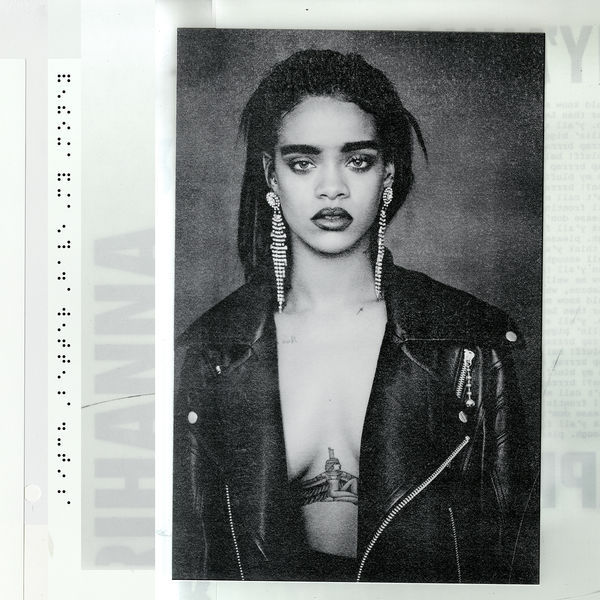
“Bitch Better Have My Money”
Westbury Road, 2015
Part of Rihanna’s allure has always been rooted in her enviable ability to be a living, breathing middle finger, but “Bitch Better Have My Money” is bad gal RiRi at her absolute baddest. (Andthat video? A cinematic achievement.) There are no cute metaphors hiding here, only Rih asserting herself like the boss she is. Her voice brash and pitiless as she demands to be paid. The production crashes with urgency; the lyrics, courtesy of the equally badass Bibi Bourelly, are a call to arms. This track will forever ring out in clubs where the ladies are dressed to destroy whomever dares look at them too long, holding their drinks in one hand and flexing all night long. –BY
Listen:“Bitch Better Have My Money”
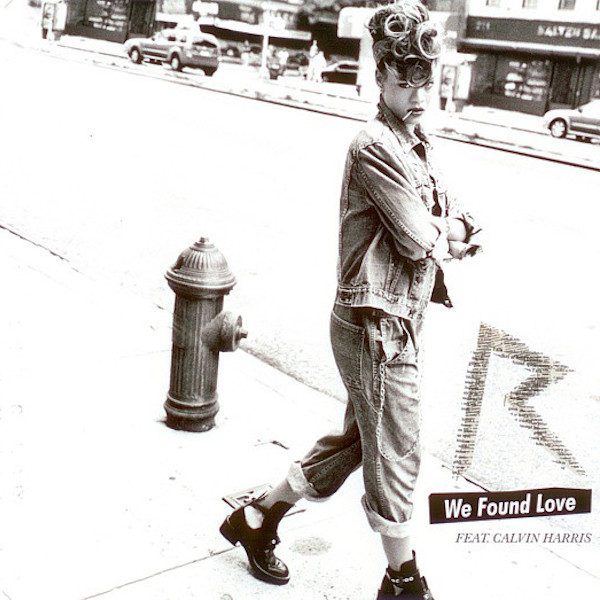
“We Found Love” [ft. Calvin Harris]
Talk That Talk
Island Def Jam, 2011
Most pop songs are more than the sum of their parts, but “We Found Love” is especially so: A peppy, EDM merry-go-round of a Calvin Harris track that became the Calvin Harris track, imitated endlessly (often by Harris himself) until it made radio a hopeless place; a melody intended fornonentities by comparison, like Leona Lewis and Nicole Scherzinger. The event video took the teenage wasteland of “Skins” and spritzed it with a little autobiography, both short-term (Rihanna reportedly dated the video lead for about five seconds) and long (the parallels between the video’s rocky-at-best relationship and Rihanna’s past were not accidental). But as she’s done so often, Rihanna found magic in an identikit place; the song’s repetitive like a pet name is repetitive, a romanticism born of comfort that you can still dance to. –KSA
Listen:“We Found Love”

“Work” [ft. Drake]
ANTI
Westbury Road, 2016
In many ways, “Work” feels like the song Rihanna has been feeling her way towards throughout her career. Where “Pon De Replay,” her introduction to the world stage, rode heavily on Afro-Caribbean trends, “Work” has spawned its own imitators in dancehall and pop spheres. If “Replay” appealed by stressing Rihanna’s natural Bajan cadence, “Work” finds her feeling out a faded, diasporic patois that screws together rap and Kingstonian slang into a voice that is distinctively hers. If “Replay” achieved infectious catchiness at the expense of lyrical depth, “Work” manages to be both instantly hummable and emotionally subtle; it captures the small triumphs and heartbreaks of real relationships (“You took my heart and my keys and my patience”) and the energy required to maintain them (“Recognize I’m trying, baby/I have to work, work, work”).
That one-word chorus is so perfectly Rihanna; it channels the bittersweet joy of surrendering to the moment, in life and on the dancefloor, without discounting the incredible savvy it takes to stay on top. The layered production work from Boi-1da is a revelation, moving lightly from quietly intimate to deep and resonant. Drake here is a bit outmatched by RiRi, compared to their other duets, but he still gets the chance to pick her over her hypothetical twin. It’s a classic, navel-gazing Drake compliment, but also his most illogical—as “Work” proves, no one could ever be mistaken for Rihanna. –ESH
Listen:“Work” [ft. Drake]
Lists & Guides: The Grateful Dead: A Guide to Their Essential Live Songs

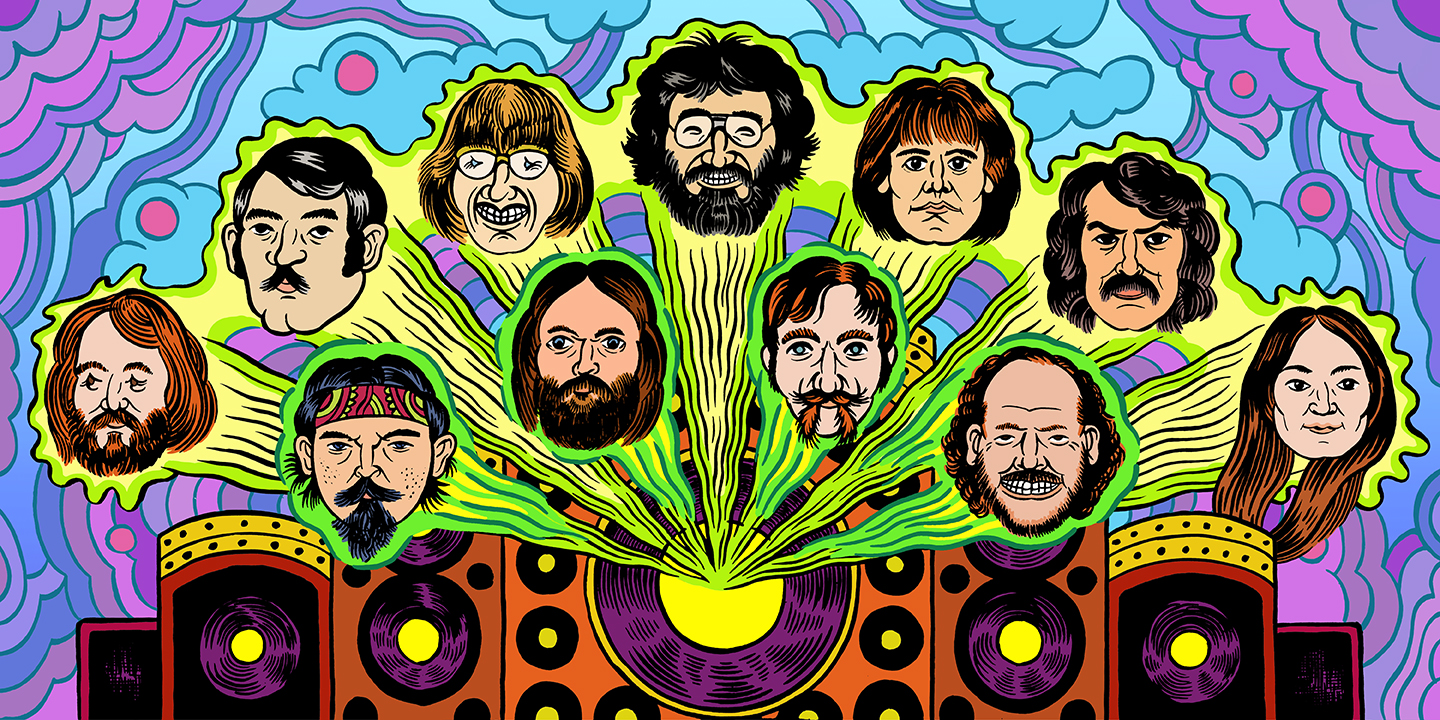
A User’s Guide to the Grateful Dead
By Jesse Jarnow
As avatars of San Francisco's ’60s-born counterculture, the Grateful Dead have served as an alternative to American reality for more than a half-century. Performing from 1965 to 1995 with guitarist and songwriter Jerry Garcia, the Dead survive through a vast body of live recordings, originally traded by obsessive fans and now preserved on a long string of official releases. Though the band has an epic narrative (told in Amir Bar-Lev’s rapturous four-hour Long, Strange Trip documentary), much of the Dead’s story and significance remains purely musical. Part of the group’s staying power is due to the mysterious vastness that exists outside the bounds of their official studio recordings, a live canon shaped by generations of the still-active Deadhead music trading network.
Flourishing in an extralegal sharing economy built around the exchange of concert tapes and psychedelics (the tapes were never to be sold), most of the Dead’s live recordings could only be accessed through profoundly anti-corporate means. Rather than killing music, as an infamous British music industry campaign claimed in ’80s, home taping actually propelled the Grateful Dead to stadiums, as the Dead themselves acknowledged.
Profoundly unslick, the Grateful Dead's anti-authoritarian creative tendencies remain palpable in the current era. Self-consciously apolitical and populist to a fault, the Dead built a diverse audience across the political spectrum while continuing to act as a catalyst for young and old seekers, music heads, counterculturalists, and psychonauts. Simultaneously, the Dead produced dancing music, folklore, and lyrics to nourish an extended community that continues to thrive at shows by the band’s surviving members and a national scene of cover bands.
Navigating the Grateful Dead’s shadow discography can be daunting, a tangle of different periods and idiosyncrasies. This list of recommended song versions—chronological, not ranked—serves as an introductory survey of the band’s different periods. Loosely, the 37 entries here chart a path from garage-prog (1966) to lysergic jam suites (1967-1969), alt-Americana (1970), barroom country & western (1971), space-jazz (1972-1975), and epic hippie disco (1976-1978), eventually arriving at the more slowly evolving band of the ’80s and ’90s, whose driving creative force sometimes seemed to be their own inertia.
It’s the latter era that is most prone to cleave even Dead enthusiasts. It represents a divide between the tighter, more critically accepted earlier band and the beloved-by-Deadheads ’80s and ’90s incarnations, when they were beset by addiction, the technologies of the era, questionable aesthetic choices, and an evolving secret musical language that sometimes made more sense in sold-out stadiums of dancing fans. While the Dead got more popular every year in their later decades—and continued to generate jam surprises and bold performances aplenty—new listeners will likely want to start with the band’s earlier epochs. One can see long-running debates even among our contributors encapsulated in entries for beloved songs like “Jack Straw” and the “Scarlet Begonias”/”Fire on the Mountain” combo, with a contingent of heads here deeply digging the chaotic stadium psychedelia of the later band.
The majority of the primary song choices presented below come from the classic years of the ’60s and ’70s; for many songs, Key Later Versions from the ’80s or ’90s highlight further developments for the discerning Dead freak. There, one can hear the band finding new places hidden in the old, mining the mountain range of material they'd generated earlier in their career.
Though the band’s proper albums have earned an undeserved bad reputation, American Beauty and Workingman's Dead (both released in 1970) especially contain a small handful of songs for which the studio versions remain almost undisputedly definitive. While songs like “Ripple,” “Attics of My Life,” “Box of Rain,” and several others belong on any list of the band’s campfire standards, they’re left off here in the interest of songs that varied more greatly in live performance. Likewise, Europe ’72, which features elements re-touched in the studio, generated a number of great live tunes served perfectly well the version found on that album, including “Ramble on Rose” and “Brown-Eyed Women.” Though the Dead continued introducing new originals up through their last tours, this list focuses on something like a core curriculum of live Dead.
Nearly every selection on this list can and should be argued by anyone with an opinion about live Dead recordings. But these picks are intended to be gateways into different scenic and well-manicured corners of Grateful Dead land for those who haven’t spent much time there, places that might feel welcoming before drumz/space kicks in. From there, the paths are nearly infinite: an enormous live catalog splattered unceremoniously across streaming services (but helpfully listed chronologically at DeadDiscs), the complete fan-curated collection at archive.org (navigable via DeadLists or Relisten.net), a riot of Grateful Dead historical and ahistorical blogs, academic conferences, a nightly slate of #couchtour webcasts, or a live music venue near you.
“You Don’t Have To Ask”
July 16, 1966
Fillmore Auditorium, San Francisco, Calif.
Listen on Apple MusicWritten by: Grateful Dead
Overly complicated original is highlight of album’s worth of songs scrapped before debut LP. Played in 1966 only.
“You Don’t Have to Ask” has all the elements of a great garage band song. It’s got a groovy bass line, excellent reverby guitar solos, great group harmony vocals, and Ron “Pigpen” McKernan’s combo organ cuts right through everything. It’s a zippy little number, guaranteed to fulfill the Dead’s dance-band obligations. But while it’s catchy, it’s also totally fucking bananas. There are several verses, choruses, parts, sections, a bridge or maybe three, chords you don't expect (maybe they were surprised too), modulation up, (spoiler alert) modulation back down, then something else entirely, all at a breakneck speed for them and wrapped up in under four minutes. It kinda sounds like they (Bob) were still learning the song, but they're all really going for it, even if it was destined to be one of approximately an album's worth of originals dropped from the repertoire before the band signed to Warner Bros. in 1967. If there was a version of the Nuggets compilations that consisted entirely of songs written and played by lunatics totally zonked on acid, this would definitely make the cut. –James McNew
Lore: Deadhead forensics has determined that “You Don’t Have to Ask” was also known as “Otis on a Shakedown Cruise,” an early song title remembered by band members that seemingly didn’t survive on tape; at least until an attentive listener noticed that—seconds before this version starts—a band member can be heard off-mic asking, “Otis?”
Listen:Spotify | Apple Music
“Cream Puff War”
December 1, 1966
The Matrix, San Francisco, Calif.
Listen on Apple MusicWritten by: Jerry Garcia
Included on the group’s debut LP, a rare original with both words and music by Jerry Garcia and early vehicle for exploratory modal jams.
It’s okay if you don’t like the Grateful Dead—even the Greatest American Band Ever isn’t for everybody. But if you’re an ardent Dead hater, I’d urge you to try just this one track. In a dimension where the Dead flamed out in obscurity, “Cream Puff War” would’ve justified their inevitable rediscovery by proto-punk collectors. Attacked with an urgency they’d never again employ, the song is on the garage-ier end of the psych spectrum, with a delinquent Farfisa and uncharacteristically fierce Garcia vocals. Of course, it’s still the Dead, so it’s a little too fussy for true garage-fuzz, with a pile of chords and sudden swerves into waltz time. Played only during the little-documented fall of 1966 and spring 1967, only a single extended version survives, the band consciously searching for new territory and exploring the modal improv mode they would soon make their own. Shelved soon thereafter, “Cream Puff War” remains an interesting thought experiment in Grateful Dead alternate history. –Rob Mitchum
Venue: The Matrix was a tiny San Francisco club co-owned by Jefferson Airplane’s Marty Balin, where the Dead played early shows and later experimented with side projects like Mickey and the Hartbeats. In some circles, it’s more famous for live recordings of the Dead’s fellow former Warlocks, the Velvet Underground.
Listen:Archive.org
“Viola Lee Blues”
February 2, 1968
Crystal Ballroom, Portland, Ore.
Listen on Apple MusicWritten by: Noah Lewis (arr. the Grateful Dead)
The Dead’s first massive jam, a hopped-up jug band rearrangement built on three volcanic improv sections. A dependable mindbender and set centerpiece, whether as an opener or closer, “Viola Lee Blues” outlasted nearly everything else from the band’s 1966 playbook, but disappeared from live shows after 1970.
Legendary Dead tape collector and vault-master Dick Latvala coined the term “primal Dead” to describe the blustery psychedelia at the core of the band’s legend. And few early performances reveal the group’s unhinged nature as openly as this prison-blues chugger, written by Memphis singer/harmonica player Noah Lewis and originally recorded in 1928 by his trio, Gus Cannon’s Jug Stompers. Most Dead versions of “Viola Lee Blues” are a variant on its noisy appeal, including the rare excellent studio jam on the band’s 1967 Warner Bros. debut, yet what makes this show-opener special is power, precision, and compactness. The stand-alone opening chord is a universe. The sound of multiple vocalists screaming out the words betrays an on-stage good time rolling. Garcia’s mountainous arpeggios—using a deeply metallic guitar tone—are a study in Sturm und Drang naturalism; while the hanging pause on which the players reunite is big-band tightness exemplified. A perfect vehicle when secondary drummer Mickey Hart joined in 1967, here the closing jam’s leap into Kreutzmann/Hart-driven hyperspace is a premonition of future Rhys Chatham/Glenn Branca/Sonic Youth punk-jazz explosions. Strap the fuck in! –Piotr Orlov
Listen: Archive.org
Key Earlier Version: September 3, 1967, Rio Nido Dance Hall, Rio Nido, Calif. Recorded just before Mickey Hart joined the band, the Rio Nido “Viola Lee” is perhaps the best document of the early single-drummer Dead in full flight, with Garcia spinning out endless hypnotic turns.
“Alligator”
February 14, 1968
Carousel Ballroom, San Francisco, Calif.
Listen on Apple MusicWritten by: Ron “Pigpen” McKernan, Phil Lesh, Robert Hunter
Non-performing lyricist Robert Hunter’s first contribution to a Dead song became a playful springboard. “Alligator” most often segued into “Caution (Do Not Stop on the Tracks),” a locomotive blues-fuzz groove almost wholly borrowed from Them’s “Mystic Eyes,” and in this infamous sequence into a blistering six minutes of guitar feedback.
Just before what sounds like a drum circle busts out, Bob Weir leans into the mic and says, “C’mon everybody! Get up and dance, it won’t ruin ya!” That bit of tape lifted later that year for the band’s pioneering studio/live hybrid, Anthem of the Sun. Weir’s got the earnestness of a prom chaperon gently chiding a wallflower. And why shouldn’t he? This was an era of raw fun for the Dead, prime Pigpen time, who hoots and hollers through his lead vocal, while Weir implores listeners to “burn down the Fillmore, gas the Avalon,” the two venues competing with the band-run Carousel Ballroom. Heavy competition. After the song relaxes from an early Kreutzmann/Hart drum sesh and the guitar finally returns, it’s sour but funky. Too good for even the shyest of the shy to not move their butts. –Matthew Schnipper
Listen: Spotify | Apple Music
Key Later Version: April 29, 1971, Fillmore East, New York City, N.Y. The final version of the song is a leaner reptile but with perhaps even more bite, the now-solo Kreutzmann drum segment chomping into a thrilling Lesh/Garcia jam.
“St. Stephen”
August 21, 1968
Fillmore West, San Francisco, Calif.
Listen on Apple MusicWritten by: Jerry Garcia, Phil Lesh, and Robert Hunter
Cryptic lyrics, an elliptical psychedelic bounce, scorching guitar, occasionally a live cannon onstage, and always a Deadhead favorite.
For a few years in the late ’60s, “St. Stephen” anchored a suite that also included “Dark Star” and “The Eleven,” together taking up the first two sides of the pivotal Live/Dead double LP. Building sets around the rolling peaks of the suite, individually and together the songs showcased the band’s latest compositional ideas and quickly developing musical interplay. At the center was “St. Stephen.” Featuring some of Robert Hunter’s most lava-lamp-ready turns of phrase (“lady finger dipped in moonlight,” anyone?), ”St. Stephen” is alluringly simple: a bouncy psychedelic standby that may or may not have anything to do with the Christian martyr in its title.
At early performances, like this August take at the Fillmore West, it carries the energy of a band falling in love with their own sound, navigating the song’s left turns with aplomb. Bob and Jerry sing the verses together with childlike joy, before things slow down and get foggier, buoyed by spacey glockenspiel. Just a minute later, the whole band bounce back into action with a devilish energy, propelled by one of Jerry’s gnarliest riffs. The darkness shrugs, and the Dead ride on. –Sam Sodomsky
What To Listen For: The Live/Dead-era versions of the song end with several verses of a lysergic Irish-sounding jig, both a musical bridge and dramatic energy build before springing into “The Eleven” (with which it’s often erroneously tracked, as here).
Listen:Archive.org
Key Later Version: May 5, 1977 New Haven Coliseum, New Haven, Conn. Revived in slower, elegant form after the band’s 1976 return, “St. Stephen” attained a different kind of grace, sometimes still finding ecstasy (if not quite psychedelic fury) in the middle jam, as on standalone versions like this one, though more often segueing into Buddy Holly’s “Not Fade Away”.

“New Potato Caboose”
February 13, 1968
Carousel Ballroom, San Francisco, Calif.
Listen on Apple MusicWritten by: Phil Lesh and Bobby Petersen
One of the band’s most structurally experimental songs sets a poem by band friend Bobby Petersen to music.
“It's a very long thing and it doesn't have a form,” Jerry Garcia told an interviewer about the Dead’s “New Potato Caboose” around the time the band started performing it in the late ’60s. The band had been writing original material since shortly after their 1965 formation, but “New Potato” was an indication of their rapidly expanding ambitions. Written by bassist Phil Lesh from a poem by Bobby Petersen, it highlights the former composition prodigy’s studied chops. What Garcia heard as formlessness, Lesh almost certainly designed—in his own hallucinogenic way—as specific movements, interconnected with an elusive dream logic.
Sung by Bob Weir with Lesh and Garcia joining for the cascading chorus, Weir sells its mystical (and maybe even proto-Sonic Youth) atmosphere with a stoney, detached edge during this Carousel Ballroom performance. Though they would never write another song remotely like it, “New Potato Caboose” foreshadows the territory they were about to conquer. –Sam Sodomsky
What To Listen For: On this classic early bootleg, a Deadhead staple sourced from an experimental radio broadcast on then-freeform KMPX, Garcia’s wild outro solo dissolves into Weir’s “Born Cross-Eyed” and a powerful articulated take of the piece of music Deadheads would label “Spanish Jam.”
Venue: Operated by a consortium of bands including the Dead, Jefferson Airplane, and Quicksilver Messenger Service, the Carousel Ballroom failed as a business, and was reopened as the Fillmore West by promoter Bill Graham.
Listen:Spotify | Apple Music
“The Eleven”
February 28, 1969
Fillmore West, San Francisco, Calf.
Listen on Apple MusicWritten by: Phil Lesh and Robert Hunter
The band’s endlessly rehearsed double-drummer mindbender central to Live/Dead.
“The Eleven” is the Grateful Dead at their most joyous, all ascending scales, bursts of melody, shouted lyrics, and tricky meters designed to sound as if everything is on the verge of falling apart. Its essence is right there in the title: the song is in 11/8 time, meaning that three bars of 3/4 are punctuated with a quick 2/4 bash before the cycle starts again. The 11/8 frame turns out to be ideal for Garcia and Lesh, who solo in tandem on the best versions of the song. “The Eleven” was shorter, faster, and gnarlier in 1968, and the soloing—the best of which always happens before the brief verses begin—was more clipped. By the week in late February where they recorded the material that wound up on the epochal Live/Dead, Garcia and Lesh were working like two halves of the same musical mind. A Wednesday show at the Avalon Ballroom produced the Live/Dead version, but the Friday night show of that same week, one of four in a row at the Fillmore West, turned out to be the finest single moment for “The Eleven.” Garcia and Lesh are like two dogs barking and nipping at each other while running full-speed across a field, never breaking stride, taking turns being in front. Eventually, the tight three-chord structure would bore Garcia, who felt he’d wrung every idea he could out of the song. The Dead dropped it from setlists forever in 1970. But during this precise moment in February 1969 there are more ideas than they know what to do with. –Mark Richardson
What to Listen For: The overlapping three-part vocal is hard-to-sing overload, featuring some of Robert Hunter’s finest lysergic playfulness in Garcia’s trippy countdown part: “Eight-sided whispering hallelujah hatrack, seven-faced marble eye transitory dream doll…”
What Else to Listen For: The drums, man! Ideally on headphones.
Listen:Spotify | Apple Music
“Mountains of the Moon”
March 1, 1969
Fillmore West, San Francisco, Calif.
Listen on Apple MusicWritten by: Jerry Garcia and Robert Hunter
The Dead’s first and most psychedelic folk song has more in common with the Incredible String Band than Phish, used as a prelude to the jam centerpiece, “Dark Star.”
The peak old-folkie days of the Dead wouldn’t come until the early ’70s, but “Mountains of the Moon” was foreshadowed that era. Debuted in late ’68, the minimal ballad spent the first half of ’69 as the gentle prelude to its deeper astronomical partner, “Dark Star”; the last few notes of the February 27, 1969 version can be heard during the introductory fade-in to Live/Dead. On Aoxomoxoa, some heavy-handed harpsichord emphasizes the faux-Elizabethan melody and faerie-land lyrics, but live, a stripped-down lineup of Bobby on a 12-string, Garcia finger-picking, Lesh burbling, and Tom “T.C.” Constanten on organ made for a haunting lull in their primal phase. –Rob Mitchum
What to Listen For: Serving as a spell to put the band and audience in the ruminative frame of mind for the journey to come, Garcia essentially continues his closing “Mountains of the Moon” solo into the “Dark Star” intro, even while switching from acoustic to electric guitar.
Listen: Spotify | Apple Music
Watch: January 18, 1969 Playboy After Dark, Los Angeles, Calif. To see a possibly-dosed Hugh Hefner swaying along to “Mountains of the Moon” with his arm around a Bunny, check out the Dead’s surreal appearance on Playboy After Dark.
“Friend of the Devil”
May 2, 1970
Harpur College, Binghamton, N.Y.
Listen on Apple MusicWritten by: Jerry Garcia, John Dawson, and Robert Hunter
Hail Satan!
1970 was a championship season for the devil. The Beatles broke up. Jimi Hendrix and Janis Joplin raised the curtains in the 27 Club. The Kent State massacres compounded the 6,173 body bags airlifted back from Vietnam. And the Grateful Dead unshackled “Friend of the Devil,” the best song ever written about a cuckolded bigamist fleeing from a sheriff’s posse and 20 hellhounds, only to get stuck up by Satan for his final $20.
Apologies to ’Pac and Snoop, but this is the most immortal outlaw anthem about attempting to return to your house out in the hills right next to Chino. Written by Robert Hunter with John Dawson of stoner C&W Dead spin-off New Riders of the Purple Sage with Garcia adding the bridge, the acoustic riffs ramble like an undiscovered escape route. Robert Hunter’s lyrics shine a searchlight on a Western anti-hero—Butch Cassidy bargaining with Lucifer—sleepless, ragged, and fatal. But Garcia sings with a weary sweetness on this staple acoustic set. A bouquet in hand, six-shooter behind his back; the poetic conman with insidious alliances, he seduces with his wounded decency, at least until he disappears into a cloud of sulfur. –Jeff Weiss
Listen: Spotify | Apple Music
Key Later Version: June 27, 1976 Auditorium Theater, Chicago, Ill. Following the band’s touring hiatus, Garcia was inspired to revive the song in a slower arrangement after hearing a recording of a live Loggins & Messina cover.
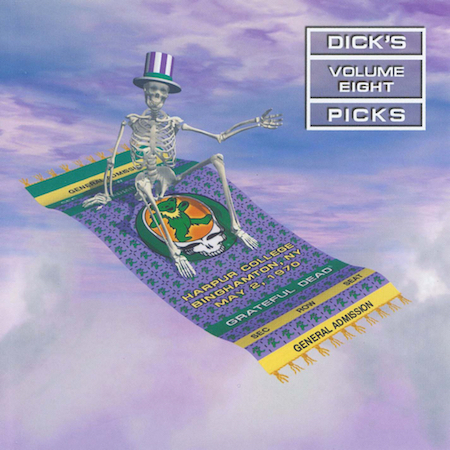
“Brokedown Palace”
August 30, 1970
KQED Studios, San Francisco, Calif.
Listen on Apple MusicWritten by: Jerry Garcia and Robert Hunter
Garcia and Hunter’s immortal farewell ballad and cosmic love song with Crosby, Stills & Nash-inspired harmonies.
The massive amount of high quality archival audio makes the Grateful Dead’s video output seem minuscule by comparison. Add crummy camerawork and dated psychedelic FX, and you often don’t have too much to look at. Not so for this simple and beautiful take of “Brokedown Palace” on local California TV, which keeps the fancy tech to a minimum. But on the chorus, marked by some of the Dead’s most beautiful earthy three-part harmonizing, Weir and Garcia’s profiles overlap on screen. It’s their own Mamas and Papas or Fleetwood Mac moment: two crooners, a heartthrob and a scruff, in total rhapsody. Sometimes, there seemed to be a disconnect between the band’s solemn sound and the way they made the audience feel. In 1970, the year Garcia and Hunter churned out two albums of instant hippie standards, it paid off, with the Dead in perfect harmony, both creatively and vocally. Everyone onstage and off is blissed out. How nice it is to share. –Matthew Schnipper
What to Listen For: Not shown on camera, the high part of the band’s three-part harmony is bassist Phil Lesh.
Listen: Archive.org
Key Later Version: May 11, 1977 St. Paul Civic Center, St. Paul, Minn. Like almost everything else in May 1977, “Brokedown Palace” sounded perfect, Donna Jean Godchaux’s harmony replacing Lesh’s, who mostly stopped singing in the late ‘70s after straining his vocal cords.
“Turn On Your Love Light”
September 19, 1970
Fillmore East, New York City, N.Y.
Listen on Apple MusicWritten by: Joseph Scott and Deadric Malone
A frequent show closer from 1969-1972 and a showcase for Pigpen’s greasy raps and unfurling blues-psych boogies. From 1969-1971, especially, the Dead spent more time jamming “Love Light” than even “Dark Star,” playing it more often and usually for a longer duration as a populist get-the-heads-dancing rave-up to conclude their most far-out sets.
Defying the peak of primal Dead, the gutbucket blues of “Turn on Your Love Light” dominated set lists during the Dead’s most psychedelic era. Usually upwards of 20 minutes (and sometimes over 40), the band vamped between innuendo-filled raps by frontman Pigpen aimed at pairing off members of the audience. While conducting the band’s deft on-the-fly arrangements, Pig would spike the Bobby “Blue” Bland original’s sweetness into something more libidinal and fetishistic. “Well she’s got box back nitties/Great big noble thighs/Working undercover with her boar hog eye,” Pig sang, a bit of mojo jive that one scholar has spent ample time decoding.
By September 1970, the Summer of Love had given way to the Autumn of Fuck. Doing some crowd work, Pig whips the audience into a frenzy, perhaps creating the sort of “weird atmosphere” that led one feminist reviewer to feel alienated by the“hippie stag party” later that fall. After the band strikes the final beat, Pigpen screams “Fuck!”—issued as both punctuation and command. This “Love Light” scores 5 fucks—one for each time the word is uttered by the band. –Ariella Stok
Listen: Archive.org
Watch: August 16, 1969 Max Yasgur’s Farm, Bethel, N.Y. At Woodstock, as the Dead begin a 36 minute “Love Light”, a still-unidentified rando takes over the mic, soon led away when Merry Prankster Ken Babbs distracts him with a joint.
“Dark Star”
April 8, 1972
Wembley Pool, London, UK
Listen on Apple MusicWritten by: Grateful Dead and Robert Hunter
The band’s definitive psychedelic jam epic, with wondrous versions in nearly every era it appeared.
In April of 1972, the Dead commenced a major European tour, almost two months long and a definitive musical turning point. Elongated fast ’n’ furious blues jams and Wild West saloon swagger were dosed with jazzier, subtler improvisations, the Dead’s musical shorthand cribbed from the simultaneous soloing of Dixieland music. Introduced to listeners via a short and far-out 7" in early 1968 and the standard side-long take of Live/Dead in 1969, the April 8th, 1972 version is not a “Dark Star” of gaping existential canyons jagged with feedback. The exuberance of the band listening to itself in this half-hour house of mirrors can be heard as Garcia’s Alligator Stratocaster quickly descends from the song’s head, Lesh offering bubbly harmonic counterpoint; accents of cymbals and short drum rolls make Weir’s offbeat rhythmic attacks more potent and clear space for Keith Godchaux to pound out leads on his piano. A collective breath is taken after the first and only verse, until Kreutzmann’s kick drum cajoles the rest of the Dead, including Pigpen behind the organ, to percolate a melody, pause for a brief freak-out, and wrap up the song with sunburst triumph. –Buzz Poole
What to Listen For: The charging major key jam that erupts near the end of this version also features a fiery debate about what will follow, eventually sliding perfectly into Weir’s “Sugar Magnolia” and a version of Pigpen’s “Caution (Do Not Stop on the Tracks)” filled with crackling heat lightning.
Listen:Spotify | Apple Music
Key Later Version: October 31, 1991 Oakland Coliseum, Oakland, Calif.At the unexpected and emotionally charged five-show wake for promoter Bill Graham, the Dead’s staunchest supporter, “Dark Star” became a time machine when novelist Ken Kesey delivered a Halloween eulogy and the band flashed back to the Acid Tests, eight musicians so locked in that you can imagine walking between all the notes.
Dark Star Canon (Excerpt):
2/28/69 Fillmore West, San Francisco, CA [Live/Dead, dude.]
2/13/70 Fillmore East, New York City, NY [Taper favorite.]
8/27/72 Old Renaissance Fairgrounds, Veneta, OR [Transdimensional meltdown.]
10/28/72 Cleveland Public Hall, Cleveland, OH [Hyperreal, with so-called bass-led Philo Stomp.]
10/26/89 Miami Arena, Miami, FL [MIDI tour-de-force with bummer Garcia vocals.]
“The Other One”
April 26, 1972
Jahrhunderthalle, Frankfurt, West Germany
Listen on Apple MusicWritten by: Bob Weir and Bill Kreutzmann
A high-wire version of one of the band’s premier jam vehicles in nearly every era. After dropping “Cryptical Envelopment” in 1971 (minus a brief ’80s revival), “The Other One” became the jam center of many second sets, its triplet-based gallop providing a tension-laden motif for high energy improvisation, perfect for segues, creating a jam canon second only to “Dark Star”.
Released in 1995 as Hundred Year Hall, the Grateful Dead’s April 26, 1972, show in Frankfurt is a tour de force display of pretty much everything the Dead were capable of at this juncture, from earthy Pigpen-led R&B to country-fried workouts to daring improvisation. The latter is best exemplified by the sprawling, 36-minute wonder that is this night's reading of “The Other One.” Originally bookended by Jerry Garcia’s “Cryptical Envelopment,” by 1972 the song had been both pared down and expanded, providing the Dead with a vehicle for their most untethered—and sometimes most aggressive—jams. Coming out of a rollicking “Truckin,’” the Frankfurt “Other One” bursts into action with Bill Kreutzmann's relentless “tiger paws” rhythm and Phil Lesh's rumbling bass, leading directly into a kaleidoscopic roller coaster ride. Jerry Garcia darts madly around with fleet-fingered, often feedback- and wah-drenched guitar work as pianist Keith Godchaux pounds out Cecil Taylor-isms. Even the usually jam-averse Pigpen gets into the act with a stabbing organ part. Before the Dead finally slip into a gorgeous “Comes a Time,” Bob Weir bellows the now-famed lyrics about their deceased mentor, Beat icon Neal Cassady—and there's no question that his gonzo spirit was at the wheel during this performance. –Tyler Wilcox
Listen: Spotify | Apple Music
Key Earlier Version: February 27, 1969 Fillmore West, San Francisco, Calif. Sounding fairly goofed up as they introduce the last portion of the evening’s early set, the band dazzles with a complete version of the “That’s It For the Other One” suite, with Garcia’s spiraling “Cryptical Envelopment” intro and outro.
Key Later Version:February 5, 1978 UniDome, Cedar Falls, Iowa. A reliable source of headiness for much of the Dead's career, “The Other One” was especially good in the late ’70s, as on this explosive 1978 rendition.
“China Cat Sunflower” > “I Know You Rider”
August 27, 1972
Old Renaissance Fairgrounds, Veneta, Ore.
Listen on Apple MusicWritten by: Jerry Garcia and Robert Hunter/traditional, arranged by Grateful Dead
Grateful Dead-brand sunshine in a can links baroque psychedelia to a folk song the Dead arguably made an American classic. During the ’70s, “China > Rider” was a first-set standard, usually the place where the band would initialize their improvisational chops on any given night. In the ’80s and ’90s, it moved to the second set opener slot, a guaranteed crowd favorite to settle fans back in.
To get the absolute purest dose of what the Dead sounded like, lick your finger and stick it in the middle of any rendition of this classic pairing. For one, the duo nicely charts the main axis of Dead songwriting, with effervescent psychedelia blending into an electrified rearrangement of a traditional American folk song. But more important is the zone between the two songs, so humbly notated with a “>”, where the magic truly blooms. For several glorious minutes, the band exists in a quantum state between the two compositions, navigating that space with an uncanny group-mind. In August of 1972, the Dead played a benefit in sweltering heat for the Kesey family creamery outside Eugene, Oregon. Like most things with the Grateful Dead, what should be a calamity is instead transcendent, with “China > Rider” (the “>” is silent) one of several sublime performances. –Rob Mitchum
Listen: Spotify | Apple Music
Key Slightly Later Version: June 26, 1974 Providence Civic Center, Providence, R.I. In 1973 and 1974, the “China > Rider” transition included a theme based on Simon & Garfunkel’s “Feelin’ Groovy”, and this version includes both a rare intro jam and a turn through the descending melody that Deadheads call “Mind Left Body,” after its resemblance to a Paul Kantner song.
“Bird Song”
August 27, 1972
Old Renaissance Fairgrounds, Veneta, Ore.
Listen on Apple MusicWritten by: Jerry Garcia and Robert Hunter
A fragile goodbye doubles as a perfectly titled lift-off for some of the band’s most lilting and delicate jams.
Janis Joplin, the Grateful Dead's friend and occasional tour mate (not to mention Ron “Pigpen” McKernan’s on-again-off-again lover), died of an accidental heroin overdose in October 1970 at the age of 27. A few months later, the Dead unveiled “Bird Song,” Robert Hunter and Jerry Garcia’s touching farewell tribute to the singer. Not so much an elegy as a reminder to—as one of Joplin’s signature tunes puts it—get it while you can, “Bird Song”’s studio incarnation appeared on Garcia’s first self-titled solo LP. But the song really took flight onstage with the Dead in 1972, especially during a show at Veneta, Oregon’s Renaissance Fairgrounds, legendary among tape traders for decades before being officially released in 2013. Following a bittersweet, gently psychedelic verse and chorus, the band slides into a long, meditative modal jam, Garcia’s guitar sounding simultaneously mournful and ecstatic as it soars into the upper register, his cohorts circling patiently below. Bill Kreutzmann, handling drumming duties alone, gives the song a restless, jazzy lope. A sublime ensemble performance, made only slightly less sublime in the Sunshine Daydream concert doc, which features an undulating, naked fan perched directly behind Garcia, getting the sunburn of his life. –Tyler Wilcox
What to Listen For: The way Kreutzmann launches the band back into the jam with a fluttering drum fill.
Listen: Spotify | Apple Music
Key Later Version: October 1980 Radio City Music Hall, New York City, N.Y. The Dead introduced an unplugged—but no less exploratory—“Bird Song” in 1980, a high-flying highlight of the band’s Reckoning live LP.
“Playing in the Band”
November 18, 1972
Hofheinz Pavilion, Houston, Tex.
Listen on Apple MusicWritten by: Bob Weir and Robert Hunter
The Dead’s archetypal meta-anthem, with every version from 1972 through 1974 diving into deep, heady, and swinging space-jazz. Part of Bob Weir’s first major batch of original songwriting and included with an abnormally good studio jam on 1972’s Ace, “Playing in the Band” was played as a standalone first set closer in the early ’70s, migrating to the second half of the show in later years where it was often split apart by one or several songs inserted between the song’s beginning and final chorus.
1972 was the year of “Playing in the Band,” played more often than any other song and site of some of the band’s deepest explorations. Bob Weir swaggers his way through the meta lyrics of the three-minute pop form, which then melts on a downbeat directly into the outer reaches of a jam that comes as close as the Dead ever achieved to what jazzheads refer to as fire music. Swelling insistently through several movements, the rhythm section pilots—Billy Kreutzmann approaching Elvin Jones-like intensity and Phil Lesh constructing architectural leads only to explode them with double-stopped, low-frequency bass bombs. Interlaced throughout, Garcia’s strobing guitar creates a zoetrope-like effect of white-hot intensity. When it’s time for re-entry, Donna Jean Godchaux wails as though birthing the chorus’s reprise from her very loins, and one is overtaken in ecstasy by the feeling of having emerged triumphant following a journey into the unknown. –Ariella Stok
Listen: Archive.org
Key Later Version: November 6, 1979, The Spectrum, Philadelphia, Pa. Keyboardist Brent Mydland had joined the band earlier that year and already his deep rapport with Garcia is on display, while the arrival of new synths provides a whole new sonic space-time-continuum for this “Playing” to tear asunder.
Jam
July 27, 1973
Watkins Glen Motor Speedway, Watkins Glen, N.Y.
Listen on Apple MusicWritten by: Grateful Dead
Well, duh. But not as duh as you maybe think.
Oh, of course the Dead almost always jammed, but it was less often that they produced a piece of improvisation from a standing start. It certainly happened occasionally, but never in front of a larger audience than at the Watkins Glen Motor Speedway in July 1973, which itself held the title of largest concert in rock history until Rock in Rio unseated it in 2001. Sharing a bill with the Band and the Allman Brothers in front of an estimated 500,000 people, the three groups played unannounced public warm-ups in front of the assembling crowd the day before the ticketed event, with the Dead deciding (naturally) to play two warm-up sets. One second they’re tuning, and then a cymbal swell drops them into a fluid musical conversation that hints at songs they haven’t even written yet. Mostly it’s just an easy-going dialog between the quintet where one can hear the the chillest iteration of the band’s single-drummer 1971-1973 peak, Bill Kreutzmann’s free dance holding together star-splatter by Garcia, Lesh, and the gang. –Jesse Jarnow
Listen: Spotify | Apple Music
Key Avant-Dead Jam: September 11, 1974 Alexandra Palace, London, UK. A number of 1974 performances featured duet performances by Phil Lesh and proto-noise piece Seastones composer Ned Lagin, some of which segued from Lagin’s “moment forms” into the Dead’s set as the band joined in, including this magical improvisation from London’s Alexandra Palace that flows from modular synth eruptions towards the friendly skies of “Eyes of the World.”
Key Later Version: October 26, 1989 Miami Arena, Miami, Fla. By the ’80s, the Dead’s free jamming mostly isolated itself in the guise of their second set “Drumz/Space” segments, the primary forum for the band’s remaining avant-garde leanings and musique concrete-like MIDI explorations, as on this post-“Dark Star” exploration from 1989.

“Weather Report Suite: Prelude/Part 1/Part 2: Let It Grow”
November 21, 1973
Denver Coliseum, Denver, Colo.
Listen on Apple MusicWritten by: Bob Weir/Bob Weir and Eric Anderson/Bob Weir and John Perry Barlow
Perhaps Bob Weir’s most ambitious composition, sad autumnal folk bursts open into elemental Garcia leads. Played 46 times in 1973 and 1974, Weir dropped the gentler first two segments of the piece when they returned in 1976 with second drummer Mickey Hart, though “Let It Grow” remained consistently in rotation through the remainder of the band’s career, a late first set home for improv.
First played as a complete piece in September of 1973, Bob Weir’s “Weather Report Suite” was a coming of age for the band’s rhythm guitarist and youngest member. First fiddling with the baroque chords of the “Prelude” during earlier jams, the full composition was perhaps Weir’s earthy answer to Jerry Garcia’s “Eyes of the World” for the Wake of the Flood era. In Denver on November 21, 1973, the “Suite” is both fragile and reassuring to start, each instrument falling into place. With subtle interplay between Lesh’s unique lead bass, Garcia’s shimmering slide, and Keith Godchaux’s Fender Rhodes setting up a call and three-part-harmony response, it all moves towards the breaking storm of “Let It Grow.” There, Kreutzmann’s light and lean drums lead tempo shifts in a dynamic and subtle jazz jam, opening up to the wild beyond. –Cori Taratoot
Listen: Spotify | Apple Music
Key Later Version: June 24, 1985 River Bend Music Theater, Cincinnati, Ohio. The entire band launches full-throttle into a furious, tight and edgy version, with Garcia finding raging solos in every open space.
“Here Comes Sunshine”
December 19, 1973
Curtis Hixon Convention Hall, Tampa, Fla.
Listen on Apple MusicWritten by: Jerry Garcia and Robert Hunter
Gang harmonies and bright syncopation made for a song whose original incarnation lasted barely a year. Inspired by Abbey Road-era Beatles, “Here Comes Sunshine” was one of over a half-dozen Garcia/Hunter songs debuted February 8, 1973 at Stanford University, some (but not all) destined for that year’s self-released Wake of the Flood.
Dick Latvala began collecting Dead tapes while working as a zookeeper in Hawaii in the late 1970s, swapping bundles of weed—which he packed into reel-to-reel boxes and cavalierly dispatched through the U.S. Mail—for more and better music. Latvala, who went on to become the Dead’s official tape archivist, picked this show for the inaugural installment of Dick’s Picks, the series of official releases of live shows he curated for the band. He’s said that this particular iteration of “Here Comes Sunshine”—a cheerful song about the 1948 flooding of the Columbia River basin, in Vanport, Oregon—inspired that release, which in turn appropriately finally opened the band’s archival floodgates. The band led off with it in Tampa, and as a blind introduction to the Dead’s strange musical alchemy—the ways in which, on certain nights, all five players seemed to operate as a single, glinting organism—it remains unimpeachable. –Amanda Petrusich
Listen: Spotify | Apple Music
“Stella Blue”
December 19, 1973
Curtis Hixon Convention Hall, Tampa, Fla.
Listen on Apple MusicWritten by: Jerry Garcia and Robert Hunter
An aching, luminous Garcia ballad, home to some of his most soulful singing and guitar playing. Most often, “Stella Blue” was performed as an epilogue to the band's furthest out jam segment of a given night, a tender affirmation of spirit following the symbolic (and actual) psychedelic journey the second set represented to many in their audience.
Even to the most frenzied and infatuated fan, Jerry Garcia can remain an inscrutable frontman. But “Stella Blue”—which, in this version, drifts out of an arch and dissonant feedback jam, ethereal and spooky, like a genie emerging from the neck of a bottle—betrays a specific fragility. This is arguably Garcia at his most human. Stella Blue is a minor character in Vladimir Nabokov’s novel Pale Fire, but the song’s lyrics, written by Robert Hunter, feel more personal; they recount a grim existential spiral, in which feelings of hopelessness become increasingly difficult to beat back. Some heads prefer the later, two-drummer versions, but there’s something about the starkness of this one that feels especially moving. “In the end, there’s still that song,” Garcia promises. For a moment, he sounds nearly buoyant. –Amanda Petrusich
Listen: Spotify | Apple Music
Key Later Version: July 13, 1984 Greek Theater, Berkeley, Calif. Though the band doesn’t sound as if they’re on the same page until Garcia starts singing, the song’s quiet moments (especially its first three minutes) are mid-’80s Garcia vocals at their soulful and imperfect best.
“Eyes of the World”
June 18, 1974
Freedom Hall, Louisville, Ky.
Listen on Apple MusicWritten by: Jerry Garcia and Robert Hunter
A just-exactly-perfect almost-breezy jam for a summer’s day.
“Eyes of the World” first appeared live in 1973, as the Dead began to introduce some more jazz-inflected architecture to their open-ended jams—a fruition, in part, of some ear-opening exposure on earlier shared bills with Bitches Brew-era Miles Davis. “Eyes” had a catchy main guitar riff (weirdly similar, I’ve noticed, to the one in Daft Punk’s “Get Lucky”), a beguiling “lazy gait,” crypto-cosmic lyrics, and—in its first couple years, anyway—a long, raging coda that went through a series of key changes and funky signatures. There are many splendid examples of this coda from 1973 and 1974. But I always go back to 6/18/74. Despite some shrill vocals and Schroeder-y piano, this version has an uncharacteristically crisp beginning (they were more precise when they had only one drummer), and great interstitial Garcia solos. The song’s long, flowering run-out seems almost composed, as their best improvisations tended to do—an impression strengthened a few years ago when a pianist named Holly Bowling performed the Louisville “Eyes” note for note. –Nick Paumgarten
Listen: Spotify | Apple Music
Key Later Version: September 3, 1977 Raceway Park, Englishtown, N.J. After 1975, the Dead scrapped the coda, and over the course of the next decade, the renditions got faster and cokier, almost to the point of parody—an acquired taste. Along the way, though, there’s 9/3/77. The tempo is just right, and Garcia’s leads catch fire.
Key Much Later Version: March 29, 1990 Nassau Coliseum, Uniondale, N.Y. Fans of later Dead are fond of the of this version featuring Branford Marsalis on saxophone, capturing the sextet and guest in full arena-Dixieland toot.

“Truckin’”
September 18, 1974
Parc des Expositions, Dijon, France
Listen on Apple MusicWritten by: Jerry Garcia, Bob Weir, Phil Lesh, and Robert Hunter
Perhaps the Dead’s most identifiable song, a boogie with an occasional backdoor into the cosmos. A rare autobiographical group composition, “Truckin’” was designed to be a modular Road Song, with Robert Hunter supplying new verses as the band had further adventures—he even wrote some on request in the late ‘70s but the band never sang them.
The Grateful Dead are all about The Road, and “Truckin’” is one of the all-time great Road songs. It got some burn on FM radio in the ’70s and positioned the Dead in a cultural moment connected to R. Crumb and CB Radio. It also gave the group its defining lyric: Without “Truckin’,” headline writers wouldn’t have words to describe all of our long and strange trips. Live, it was a supremely flexible song and one of their most-played, fitting neatly into acoustic sets but also stretching into long inspired jams. Bill Kreutzmann’s shuffling groove is key, chugging and choogling forward with a steady-state insistence not unlike the motorik beat of krautrock. Sometimes Garcia solos in Chuck Berry mode, but in 1974 he was taking it to slightly weirder places. In front of a few hundred people in Dijon, France, their smallest crowd in years, this version finds the song at its jazziest, with mind-bending guitar interplay. –Mark Richardson
Listen: Archive.org
Key Later Version: October 18, 1978 Winterland, San Francisco, Calif. A rare late-‘70s Phil Lesh vocal spot, “Truckin’”’s ambling country-fried vibe hardened into an edgier post-gas crisis model, led by Bob Weir’s police whistle and a jam peak that turns the “Other One” riff inside out.
“Morning Dew”
October 18, 1974
Winterland, San Francisco, Calif.
Listen on Apple MusicWritten by: Bonnie Dobson and Tim Rose
Ballad about nuclear holocaust transmogrified into showstopping existential soul-folk by Garcia.
This folk song about two lone survivors of a nuclear apocalypse entered the rotation in 1967 but really became a Garcia set-piece and gut-puncher once the band slowed it down in the early ‘70s. As the Dead’s premier revelatory ballad, coming after the chaos of a jam or space, it almost always laid ‘em flat, despite its oblique lyrics and simple chord progression. As time went on, Garcia often seemed to pour more into it than pretty much anything else. The song has two crescendos, each building from delicate quiet to cathartic guitar-god keening and fanning. At Winterland, on October 18, 1974, during the band’s last stand before an 18-month touring hiatus, they performed a titanic version that made it sound like they were quitting for real, at the peak of their powers. –Nick Paumgarten
Listen: Archive.org
Key Later Version: October 12, 1984 Augusta Civic Center, Augusta, Maine. A powerhouse song even when Garcia was in dire health, it somehow suited his husky voice and haunted aspects, as it does on this ragged but glorious heart-tugger from a special evening.
“Uncle John’s Band”
October 19, 1974
Winterland, San Francisco, Calif.
Listen on Apple MusicWritten by: Jerry Garcia and Robert Hunter
A campfire standard with a few tricky chord changes and an ineffable melody lifted from a Greek folk song.
The studio recording of “Uncle John's Band,” from 1970’s classic Workingman’s Dead, is a pleasant slice of Americana, centered around acoustic rhythm guitars and vocal harmonies inspired by Crosby, Stills & Nash. While it ultimately became a peaceful call to worship for legions of Deadheads, its lyrical origins are more of a countercultural call to decamp. In this breezy performance from Winterland ‘74—during the “retirement” run filmed for the Grateful Dead Movie—the Latin swing sets itself cleverly against easy hippie fare like “are you kind?” and “ain't no time to hate.” But this is a folk song with teeth. As the song’s jam shifts into a minor key and a fierce 7/4 time signature, Garcia explores both dark and light, running arpeggios up and down the scale, using the jam as a springboard for some of his most explosive playing. “Uncle John's Band” is a time-honored “greatest hit” for a reason: its invitation to drop out and turn on is evergreen. And hard-learned warnings like “when life looks like easy street, there is danger at your door,” are as true today as ever. –Gabe Tesoriero
Listen: Archive.org
Key Proto Version: November 8, 1969 Fillmore Auditorium, San Francisco, Calif. Before “Uncle John's Band”’s late 1969 debut as a singalong, Garcia played the over-fuzzed melody at the heart of a few jams, and it's hard not to hear it as a pivot point between the band's wilder psychedelic leanings and the oncoming folk boom.
Key Later Version:October 9, 1989 Hampton Coliseum, Hampton, Va. From one of two shows billed as “Formerly the Warlocks,” this smoking “Uncle John’s Band” is way up, Jerry bringing the MIDI-fired pyrotechnics, and two separate B-section jams.
“Crazy Fingers”
June 22, 1976
Tower Theater, Upper Darby, Pa.
Listen on Apple MusicWritten by: Jerry Garcia and Robert Hunter
Haiku-like verses and a delicate vibe on the line of hippie-reggae and something more elusive.
A product of the band’s extended woodshed period at Bob Weir’s home studio in 1975, “Crazy Fingers”’s quiet reflects the band’s scaled-back approach for their touring hiatus. Debuting as a set-opener during the second of their four appearances that year, I prefer the June 22, 1976 version from just after they returned to the road. The crowd audibly responds as Jerry gently starts to sing, which is, honestly, part of the thrill of listening to live Dead; it’s almost always at least somewhat interactive. Since post-Garcia Dead fans must rely on recordings, every whistle, scream, and even side conversation from an audience-made tape can help bring a set to life. Unlike anything else Garcia and Hunter wrote in its lyrical minimalism, the haiku-like verses are set to a tune that’s a touch dub-like. With a more pronounced island vibe on the Blues For Allah studio version, the delicate jam offered a variety of possibilities, here spiraling inventively upward and eventually back down to “Comes a Time”. Like many great Dead songs, it’s a little dark, a lot introspective, and yet still delicate and somehow optimistic. –Mariel Cruz
What to Listen For: A fragile vibe to begin with, “Crazy Fingers” could vary widely, at its best blooming into intricate and quiet improvisations as singular in the band’s catalog as the lyrics.
Listen: Archive.org
Key Proto Version: “Distorto”, February 28, 1975, Ace’s, Mill Valley, Calif. Developed in the studio during the sessions that eventually yielded Blues For Allah, where the band allowed themselves the freedom to let jams develop, “Crazy Fingers” began life as a piece of music called “Distorto”.
“The Wheel”
June 29, 1976
Auditorium Theater, Chicago, IL
Listen on Apple MusicWritten by: Jerry Garcia, Bill Kreutzmann, and Robert Hunter
Written without beginning or ending as part of a side-long suite improvised in the studio, “The Wheel” was often heard rolling out of the drumz/space segments.
“The Wheel,” a Hunter/Garcia composition written spontaneously during the sessions for Garcia’s seminal 1972 LP Garcia, didn’t see its live debut with the Dead until June of 1976. Driven by the rolling thunder of the drummers, Phil Lesh’s loping bass line, and Jerry’s delicate, haunting guitar work, “The Wheel”—often in its slot coming out of Space—has served as a vehicle for some high-wire experimentation over the years. In this performance from Chicago’s Auditorium Theatre on June 29, Garcia's voice and guitar work positively sparkle. Recalling the bright pedal steel jangle of the excellent studio version, the guitar line builds and spirals upward. Between the plaintive, meditative chants of the verses, Garcia again takes off. In the song’s traditional exploratory outro, Jerry teases a phrase from “The Other One”, galloping into a syncopated double-time jam with hair on fire. Lyrically, “The Wheel” is a call to follow the muse, the shared sense of experience that is the Dead “trip” itself. Musically, it’s breathtaking, as the best Grateful Dead can be. –Gabe Tesoriero
Listen: Archive.org
Key Later Version: March 24, 1990 Knickerbocker Arena, Albany, N.Y. Brightly colored by Brent Mydland’s phrasing this version of “The Wheel” drives and pulsates, gathering steam and packing a real wallop in just four minutes and change.
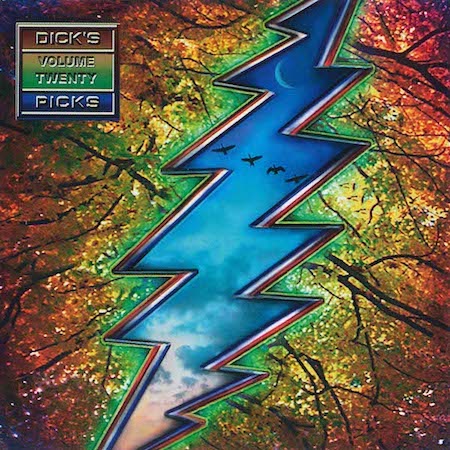
“Comes a Time”
September 28, 1976
Onondaga County War Memorial, Syracuse, N.Y.
Listen on Apple MusicWritten by: Jerry Garcia and Robert Hunter
The placement of this beautiful, vulnerable, introspective Garcia song (coming out of a wooly-ass jam at the end of a kinda-too-long “Samson and Delilah” and segueing into “Drums”) is a little weird, I guess. The whole band's playing is sparse and gentle, like everyone's choosing each lonely note they play with deep thought and restraint. Even Phil is barely playing, relatively speaking. Jerry and Donna Jean’s voices sound a little wounded, huddled together on a wobbly perch just above the group. There’s a modest yet lovely guitar break that flutters upward into last verse and a staggering--and surprisingly brief—solo at the end over simple repeated F#m & G chorus tag. It’s filled with anger and yearning, despair and resentment, and a lifetime of pain helping to squeeze out each wiry note. It threatens to unfurl into a litany of emotion, but... then hi-hats, and before you know it Mickey is doing paradiddles on what sounds like a Tasmanian log. Feels like Garcia is changing the subject. Revealing, if you overthink it (like I'm doing); beautiful and blue if you just float along. –James McNew
Listen: Spotify | Apple Music
What to Listen For: That last guitar solo!
Key Slightly Later Version: May 9, 1977 War Memorial Auditorium, Buffalo, N.Y. Debuted in 1971, “Comes a Time” was included on Garcia’s 1976 solo album Reflections and soon resurfaced in the Dead’s live sets. Each with a towering final solo, each of the five versions from May 1977 might be celebrated as a national holiday, but especially Buffalo.
“Terrapin Station”
May 7, 1977
Boston Garden, Mass.
Listen on Apple MusicWritten by: Jerry Garcia and Robert Hunter
Garcia and Hunter’s mysterious folk epic, parable-driven balladry building to a series of near-orchestral peaks. With a few exceptions, “Terrapin Station”’s far-out destination was usually “Drumz” > “Space,” a position of gravitas in the Dead’s setlists, except for a period in the mid-‘80s when Weir sometimes used it to set up his good-time calypso cover, “Man Smart, Woman Smarter”.
Halfway through the ‘70s, prog was all but dead: King Crimson had disbanded, Yes had gone off the deep end, and Genesis lost their most forward-thinking member. But then, in 1977, the Grateful Dead debuted “Terrapin Station.” The title track to their glossy ‘77 album and the final epic from Garcia and Hunter, “Terrapin” was a completely different beast from even the lengthiest of compositions that preceded it.
Melodic and precise where “Dark Star” was jazzy and open-ended, “Terrapin Station” was a powerful addition to the band’s set during arguably their finest year. Written and recorded as a larger suite, the live versions only included its first few sections, growing luminous on the band’s spring tour. At their Boston show during their legendary run in May ‘77, they performed a careful, confident rendition, propelled by Jerry’s emotive vocals and solos. The band was at their most well-rehearsed here, and “Terrapin” glides with an otherworldly energy, making it a momentous second set opener. Its masterful series of crescendos is maybe the decade’s best proof that the Dead’s gifts for tight songwriting and sprawling musicality were not mutually exclusive. –Sam Sodomsky
What to Listen For: The moment the song upshifts from what could be a traditional folk ballad into a grander composition.
Listen:Archive.org
Key Proto Version: March 18, 1977 Winterland, San Francisco, Calif. The earlier sections are still finding their form, but a one-night-only performance of “At a Siding,” minus the vocals on the album version, provides an appropriately mystical destination suggested by the lyrics.
Key Later Version: March 15, 1990 Capitol Centre, Landover, Md. On Phil Lesh’s 50th birthday, on a tour many latter day fans hold next to legendary outings like Europe ‘72, the band work the final refrain until it balloons into a world of its own.
“Mississippi Half-Step Uptown Toodleloo”
May 7, 1977
Boston Garden, Boston, Mass.
Listen on Apple MusicWritten by: Jerry Garcia and Robert Hunter
One of the final songs from Garcia and Hunter’s initial burst of Americana, debuted in late 1972, “Half-Step” took a few years to develop its rushing flow. The song’s spirited tempo and carefree farewells to Southern skies placed it squarely in both first and second set-opener positions as a crowd favorite.
Told from the perspective of a cheating gambler embracing a life on the run, “Mississippi Half-Step Uptown Toodleloo” remained intact stylistically and structurally from its 1972 debut through the band’s last tour in 1995. The song found Robert Hunter continuing to portray American dreamers with lyrics both ambiguous and specific, including a line about losing one’s boots that seems to echo Garcia’s own life-altering brush with death in a 1960 car crash, in which he was literally blown from his shoes.
In a near-perfect Boston performance on May 7, 1977, Garcia’s voice is sweet and strong. Keith Godchaux brings the Dixieland piano as Bob Weir expertly places his rhythm arpeggios snugly alongside Garcia’s crisp and clear leads. The drummers press hard as Garcia fans power chords in the lead-up to the song’s refrain, the sound of a band riding the rapids together. Pulling back into a three-part harmony, a crescendo dissolves into a version of Johnny Cash’s “Big River” for the ages. –Cori Taratoot
Listen: Archive.org
Key Later Version: April 2, 1990 The Omni, Atlanta, Ga. On a transcendent spring night with the band in top form, Garcia soothes and brightens, finding the Band’s “The Weight” and a loving Southern audience in the closing chords.
“Scarlet Begonias” > ”Fire On the Mountain”
May 8, 1977
Barton Hall, Ithaca, N.Y.
Listen on Apple MusicWritten by: Jerry Garcia and Robert Hunter/Mickey Hart and Robert Hunter
A canonical studio-perfect take with its own underground legend, and a whole family tree of beautiful relatives.
The “Scarlet Begonias”>“Fire on the Mountain” pairing was introduced in 1977 and soon became a popular mainstay as a second-set opener. “Scarlet,” a lysergic Hunter-Garcia ode to a girl, had been around for several years, and to many old hands was at its freshest in 1974, as a stand-alone first-set morsel of syncopated polyphony: peak Kreutzmann, every instrument ricocheting off the rest. “Fire,” introduced in 1977 by the drummer Mickey Hart, with an uncharacteristically foundational bass line and a taste of calypso, became a springboard for knee-bending Garcia solos. In the early '80s, the song gained muscle with the addition of keyboardist Brent Mydland's B3. The transition between the two was typically an excursive delight with whiffs of Coltrane and Ives.
Choosing the best is nigh impossible, in light of all the variables; the crispest “Scarlet” may have been followed by a less-than-transcendent transition or a draggy “Fire.” I and a team of fellow nerds have spent weeks re-listening, and are no closer to a consensus. The most widely canonized version is from Barton Hall, 5/8/77, a surprise actual top 10 hit when it was finally released this year for its 40th anniversary. Overrated, in my book, but it’s as good a starter kit as any: fewer flaws. They played “Scarlet” > “Fire” well and often that month. Each rendition seems to have its partisans. Its propulsive, joyful vigor was perhaps the most consistent manifestation of a band on a hot streak. –Nick Paumgarten
Listen: Spotify | Apple Music
Key Later Version: November 30, 1980 Fox Theater, Atlanta, Ga. Big sound, sly swagger, regal solos, a complex and careening transition, and a more than respectable “Fire.”
Key Earlier “Scarlet Begonias”: June 16, 1974 Iowa State Fairgrounds, Des Moines, Iowa. An ace example of the standalone cowbell-less “Scarlet” with a puzzlebox jam that contains infinite futures.
“Sugaree”
May 22, 1977
Hollywood Sportatorium, Hollywood, Fla.
Listen on Apple MusicWritten by: Jerry Garcia and Robert Hunter
Easygoing standard for both the Dead and the ‘70s & ‘80s incarnations of the Jerry Garcia Band for Jerry to get loose in C.
“Sugaree,” a platform for soulful Garcia vocals and guitar, is an exercise in contrast, soaring above the emotionally trying narrative of intimate entanglements. When debating about the best versions of “Sugaree” there is always talk of Garcia’s solos, but that implies that the rest of the band lays back. It’s the telepathic double drumming of Bill Kreutzmann and Mickey Hart that makes this an essential “Sugaree” on an East Coast tour where all 10 versions of the song feature their own enormous charms. Here, Phil Lesh’s lopey bass climbs around the drummers’ pounding rhythms like a winding vine; Bob Weir, Keith Godchaux, and Garcia are effervescent buds blooming. The song eases into a lullaby rocking before one final emphatic reminder “Just don’t tell ‘em you know me,” sung by Garcia, his voice at its most empathetic. –Buzz Poole
What to Listen For: Uncharacteristically uncomplicated lyrics by Robert Hunter, invested with great meaning and intent by Garcia.
Listen: Spotify | Apple Music
Key Later Version: June 5, 1993 Giants Stadium, East Rutherford, N.J. At over 14 rollicking minutes this “Sugaree” proves that up until the very end the Dead could still produce surprises that wowed even the most jaded head. The whole band is in fine form, and the slight nasal frailty of Garcia’s voice only enhances the lyrical drama.
“Wharf Rat”
May 22, 1977
Hollywood Sportatorium, Hollywood, Fla.
Listen on Apple MusicWritten by: Jerry Garcia and Robert Hunter
Epic redemption from Garcia and Hunter, capable of stunning quiet in enormous venues.
Despite the fluffy flower-power image of the Grateful Dead, much of the band’s actual catalog is made up of action-packed outlaw tunes of the type usually associated with Waylon Jennings or Johnny Cash. Drinking, gambling, gunfights, bastard children, and freight trains are favored subjects, often all in the same song. The slow, stormy Garcia/Hunter hobo tune, “Wharf Rat,” first played in ’71, is from that hard-edged tradition, but it stands out for being a character study rather than a chase scene. A hypnotically curling minor key groove gives way to an even quieter vocal bridge that edges as close as the Grateful Dead gets to gospel. Until, that is, Garcia and co. unleashing a holy squall of redemptive sound and the powerful refrain, “I’ll get up and fly away!” If that sounds like church to you, say your prayers to 5/22/77, when the band truly maximizes the extreme dynamics of the song. –Will Welch
What to Listen For: In just over nine minutes, the Dead go from the quietest quiet to the loudest loud and back again, always with plenty of open space for full Phil Lesh bass maneuvers.
Lore: Recognizing a fellow alcoholic in “Wharf Rat”’s August West, a group of Deadheads founded the Wharf Rats in 1984, a group that gathered under yellow balloons at Dead setbreaks, and who remain a fixture at post-Garcia incarnations and even shows by cover bands.
Listen: Spotify | Apple Music
“Help On The Way” > “Slipknot!” > “Franklin’s Tower”
June 7, 1977
Winterland, San Francisco, Calif.
Listen on Apple MusicWritten by: Jerry Garcia and Robert Hunter/Grateful Dead/Jerry Garcia, Bill Kreutzmann, and Robert Hunter
Two parts of psychedelic prog followed by an extended three-chord bliss-out.
Written during the year the band spent off the road in 1975, “Help on the Way”/“Slipknot!”/“Franklin’s Tower” moves between the peak Dead prog of the suite’s first two parts to the unambiguous major key release one of the Dead’s all-time three-chord jam wonders. Though they nailed a memorably sparkling version at its debut in’75 (building up under Bill Graham's member-by-member introduction) and pushed the instrumental “Slipknot!” to the far reaches during various excursions in’76, the final version from the band's legendary spring ’77 touring season was perhaps the truest map of the suite's tricky paths, space valleys, and infinitely ascending boogie. The penultimate take before shelving the trio (though not “Franklin's Tower”) until the early '80s, Garcia occupies Robert Hunter's existential plea for love on "Help on the Way", extending the elliptical mood right up to the edge of confusion during the ensuing “Slipknot!”. During “Franklin's Tower”, especially on a fan-made mix blending an audience recording with a soundboard, as the band jam through chorus after chorus for the hometown dancers, one can almost feel the balcony shake at Winterland, the former ice skating rink that was the Dead's local venue in San Francisco for most of the '70s. –Jesse Jarnow
What to Listen For: Usually played to open sets, “Help on the Way” and “Slipknot” were as tricky and composed as the Dead got, their execution a virtuosic feat by itself.
Listen: Archive.org
Key Later Version: October 8, 1989 Hampton Coliseum, Hampton, Va. During one of two bust-out filled shows billed as “Formerly the Warlocks”, the band picked up “Help on the Way”/“Slipknot!”/“Franklin’s Tower” for the first time in a half-decade and reasserted their older, weirder selves.
“Jack Straw”
December 29, 1977
Winterland, San Francisco, Calif.
Listen on Apple MusicWritten by: Bob Weir and Robert Hunter
Bob Weir’s first great song, cinematic Americana debuted in 1971 that took on a variety of moods over the years.
Among Robert Hunter’s most unflinching takes on American frontier ethics, early readings of “Jack Straw” were psychedelic country—Garcia and Keith Godchaux in full Bakersfield mode, Weir’s tenor quavering—but jam-free. In later periods, subtlety could be at a premium, but the instrumental build and interplay could be fierce, with opportunities for Phil Lesh to drop resonating bass bombs. Perhaps the perfect, most balanced “Straw” took place somewhere in 1977, when narration, performance and jam all crackled. This opener to a magically under-rated New Year’s stand burns from the get-go, sacrificing nothing. The drummers’ gallop pushes the music, while Garcia’s lead lines play the part of a majestic dramaturg, even accenting his “one small point of pride” line with gusto. It is Cormac McCarthy-meets-Ansel Adams stuff, and when the twin-guitar power-chords drop into the tale’s denouement—another ballad of the Grateful dead, no less, the folktale from which the band drew their name—the energy is blazing. –Piotr Orlov
Listen: Spotify | Apple Music
Key Later Version: January 11, 1979 Nassau Coliseum, Uniondale, N.Y. “Used to play for acid, now we play for Clive,” Bob Weir sings, referencing their new record company boss, Clive Davis, just before a crackling jam where Garcia’s lysergic-bluegrass guitar burns hot and Phil provides the bombs.
Watch: August 27, 1972 Old Renaissance Fairgrounds, Veneta, Ore. A perfectly executed take of the song’s lean early incarnation, with airy one-drummer dynamics and wide-open three-part vocals from Weir, Garcia, and Lesh.
“The Music Never Stopped”
February 3, 1978
Dane County Coliseum, Madison, WI
Listen on Apple MusicListen: Spotify | Apple Music
“Estimated Prophet”
December 26, 1979
Oakland Auditorium, Oakland, Calif.
Listen on Apple MusicWritten by: Bob Weir and John Perry Barlow
Grateful Dead-style paranoid space-dub weirdness via Bob Weir, a building block for elongated second set jam suites.
Debuted during the well-oiled year of 1977, Bob Weir and lyricist John Perry Barlow’s “Estimated Prophet” captured late ’70s hippie paranoia in the form a of a slinky 7/8 reggae groove. A lope spacious enough for the band’s drummers, it became a platform for the endless avuncular chattering of Jerry Garcia’s Mu-tron-drenched lead guitar, and a reliable entrance to the type of moody, heady psychedelia that was all too often missing from the Dead’s new material in later years. Though one of the few effective homes for Keith Godchaux’s Polymoog synth, it wasn't until Brent Mydland replaced him in 1979 that the song really opened up. On opening night of Mydland’s first New Year’s run, the band pushed almost the 20-minute mark. Garcia’s mid-song solo is dripping and dubby, though the jam itself doesn’t really take off until about 14 minutes in, when Garcia jumps out of 7-time and into the free territories, Weir steps in for co-noodle duty, Phil Lesh drops into a thrilling bassline reminiscent of the Dead’s long-shelved “Caution (Do Not Stop on the Tracks)” and Mydland’s keyboards bounce so precisely they sound like modular synth. –Jesse Jarnow
Listen: Spotify | Apple Music
Key Later Version: September 22, 1993 Madison Square Garden, New York, N.Y. Free jazz saxophone hero David Murray duets with Bob Weir's scat singing and Vince Welnick's plinking keyboards before the main event, howling in a buzzing jet-plane dogfight with Garcia's MIDI-ready guitar in front of a sold-out arena.
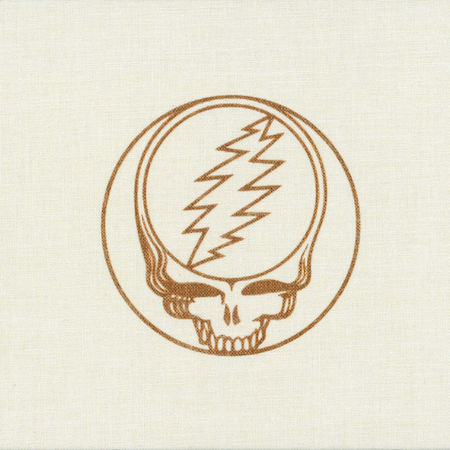
“Shakedown Street”
December 31, 1984
San Francisco Civic Center, San Francisco, Calif.
Listen on Apple MusicWritten by: Jerry Garcia and Robert Hunter
The Dead delve into disco-funk darkness with plenty of room for (wait for it) Jerry’s guitar. First song, first set (or second)—translation: it’s party time.
“Disco Dead,” sneered some of the faithful at the title cut from the Dead’s 1978 album. Somehow, fans found the idea of boogying to an endless groove untenable when it involved wearing something other than tie-dye. Meanwhile, the Dead’s loose double-drumming never quite fit even with the counterculture-weaned DJs at the birth of disco. But time has shown the lasting potency of both approaches, while the tapes let us hear the sparks when they connect. “Shakedown Street” was the Dead’s most overt funk move yet, aided and abetted on album by producer Lowell George of Little Feat (speaking of white-boy longhairs who liked to get down). Per usual, years of playing around with the groove, not to mention that sneaky descending three-note riff, both tightened and liquefied the music. Leading off with it on New Year’s Eve amounted to a mission statement. So did Garcia fanning out solos, with and without his pedals (check the lovely single-note flurries around 11:00), like he was born to boogie-oogie-oogie, too. –Michaelangelo Matos
What to Listen For: At 7:30, Jerry and his wah-wah pedal decide to have a little conversation.
Listen: Spotify | Apple Music
Key Later Version: September 22, 1991 Boston Garden, Mass. The Grateful Dead plus touring pianist Bruce Hornsby and the arena energy of the east coast, a more intense fanbase than their more laidback California home.
“Touch of Grey”
December 15, 1986
Oakland Coliseum Arena, Oakland, Calif.
Listen on Apple MusicWritten by: Jerry Garcia and Robert Hunter
With perfectly wry lyrics, the Dead’s only top 10 single was still a source of musical conversation when played live.
Most Dead songs underwent their greatest gestational shifts in performance, but count on the biggest outlier of their career to have evolved differently. Robert Hunter had written “Touch of Grey” in 1980 as, in Garcia’s words, “a sort of dry, satirical piece with an intimate feel” and Garcia decided to rework the melody and a couple of the lines;. “‘We will get by’ said something to me, so I set it to play big,” he said after the song came out. “My version still has the ironic bite of the lyrics, but what comes across is a more celebratory quality.” Debuted by the Dead in 1982, the song’s lyrics changed slightly but parameters remained tight for most of the Dead’s history. But that rousing chorus and chiming melody made it that most improbable of Dead artifacts: a natural hit single. Opening the first Dead show after Jerry’s debilitating coma in 1986, its jolly defiance set the tone for what, improbably, would be the Dead’s biggest year to date. Nearly 20 years after the Summer of Love, the Dead’s first bona fide mainstream radio hit inspired a new generation to hit the road, even as it dodged the sneers of an older cohort that dismissed them as “Touchheads.” –Michaelangelo Matos
What to Listen For: The crowd going ape-shit the first time Garcia hits “I will survive” at this and any version after.
Listen: Archive.org
Key Proto Version: Robert Hunter solo, October 26, 1982 The Landmark, Kingston, N.Y. Both caustic and optimistic solo, songwriter Robert Hunter’s early version finds its own (almost) equally charming setting for the lyrics.
“So Many Roads”
July 9, 1995
Soldier Field, Chicago, Ill.
Listen on Apple MusicWritten by: Jerry Garcia and Robert Hunter
One of Jerry Garcia’s last original songs, debuted in 1992, a powerful late career statement. Part of a final songwriting burst with Robert Hunter, “So Many Roads” was one of several introspective songs that were powerful highlights during the Dead’s uneven last years, including “The Days Between” and “Lazy River Road”.
The Grateful Dead’s final show is, inevitably, a rough listen, mostly owing to Jerry Garcia’s audibly declining health – at this point he had just a month to live. Even with Teleprompter assistance, he fumbles over lyrics he had sung hundreds of times. He’s clearly struggling with some of the guitar work, including an utterly botched solo on “Unbroken Chain.” But even in this defiled state, Garcia could dig deep and rise to the occasion. World-weary and allusion-heavy, the band never completed a studio recording of “So Many Roads.” At Soldier Field, Garcia finds moments of quiet grace in the thicket of the latter-day Dead’s clatter, delivering sparkling solos, finally leaning into an extended emotional closing chorus over appropriately “Knockin’ On Heaven’s Door”-esque backing vocals. And then, as if to break the spell in the most inappropriate fashion possible, the Grateful Dead transition into keyboardist Vince Welnick’s godawful “Samba in the Rain.” Nevertheless, it sounded as if Garcia had, for a little while, eased his soul. –Tyler Wilcox
Listen: Spotify | Apple Music
Key Earlier Version: October 1, 1994 Boston Garden, Mass. Even the most hardened '90s skeptics will almost surely by gobsmacked by Garcia's final vocal eruptions, hitting a reserve he never quite possessed even in his youth.
Longform: City of Dreams: Music and Politics Meet in the Border Community of McAllen, Texas

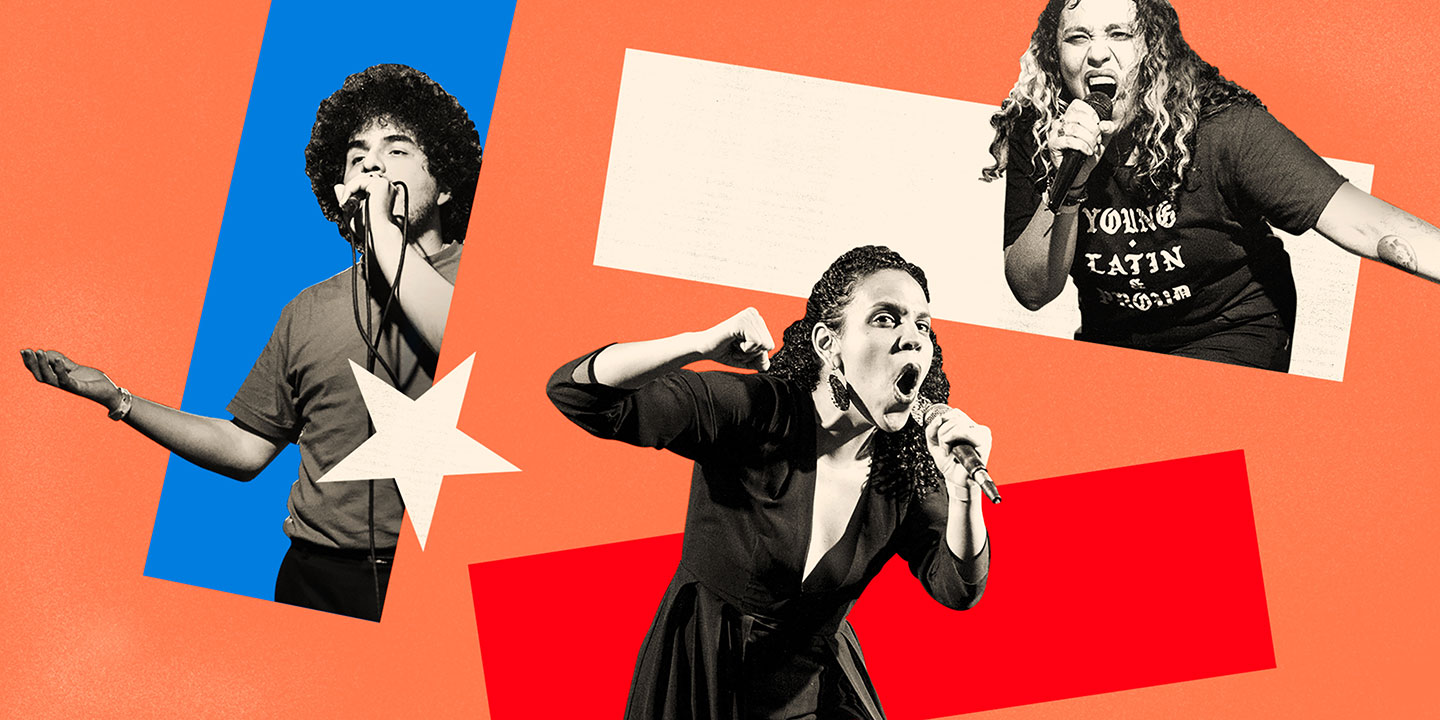
It’s an uncommonly brisk evening in McAllen, a small city in Texas that sits just north of the Rio Grande and, beyond that, Mexico. In the backyard of a bar called Yerberia Cultura, a piñata in the shape of an anthropomorphized border wall is being brutalized by a young woman with a mop handle. The McAllen pop-punk band Fantástico! eggs her on with a customized cover of Khia’s notoriously raunchy hit “My Neck, My Back (Lick It)”: “Do it now, hit it good, hit that piñata just like you should!”
The scene takes place in the middle of March’s Dreams festival, a laid-back event where independent-minded local and out-of-town acts share a sprawling patio with a woman selling T-shirts emblazoned with catchphrases like “Your History Books Are Puro Pedo”—that is, “Pure Farts”—and a food stand run by a mom who put her daughter through college with her flautas. The musical lineup at Dreams is inspired, and it likely wouldn’t happen anywhere else.
The three artists at the top of the bill have wildly different sounds and live shows, but there’s a common thread connecting them. As Helado Negro, Roberto Carlos Lange records deeply inward-gazing lullabies, protection spells, and guides to self-care dealing with the fear and anxiety of being brown; Xenia Rubinos balances sweet soul with smart bass riffs while exploring her own identity and the Latinx experience in white America; Downtown Boys pay spiritual homage to both Bruce Springsteen and Selena, making aggressively confrontational punk rock spiked with politically charged calls to action.
“Representation is super important on these lineups, especially for us down here,” says Dreams organizer and McAllen DIY mainstay Patrick Garcia. “To see these artists, to see their skin, and to see what they are.” Recently, many young bands in McAllen and the surrounding Rio Grande Valley have been emboldened by this kind of recognition, offering their own takes on the Latinx experience, from the prog-metal stylings of DeZorah, to the indie-pop snark of Pinky Swear, to the nimble-tongued raps of Caldo Frio. Despite a deck stacked against them by geography, postcolonialism, and modern politics, the music scene in the Valley is more than just healthy—it’s thriving.
Pinky Swear: "Change for Me" (Buy on Bandcamp)
Garcia points to Downtown Boys’ first McAllen show a couple of years ago as a flashpoint representative of already shifting attitudes. “People freaked out seeing a brown woman shouting ‘girls to the front,’” he says. “It was like, ‘Whoa, you’re loving us and telling us to take care of ourselves.’ It invigorated the community.”
The feeling is mutual. “You’re instantly contextualized—you can’t play here without knowing that you’re in McAllen,” says Downtown Boys vocalist Victoria Ruiz. “You’re able to see people who look like you, and they could be your cousin. It’s so hard to feel that context in a lot of other cities that we play.”
So as bands like Downtown Boys tour the country, or the world, they spread the gospel of McAllen as diehards like Garcia see it: A community and culture with more to offer than the two-dimensional narratives of crime and poverty that have proliferated on conservative outlets like Breitbart News, all the way up to the White House.
In the Rio Grande Valley, notions of heritage and pride often involve an undercurrent of assimilation that permeates everyday life. For a lot of families, achieving the American Dream means shedding much of the culture they left behind and adopting their new home’s language and ethos of white supremacy.
The assimilation may be driven by the innocuous intentions of a parent wanting a better life for their child, but it can foster a subconscious self-loathing that bands like Downtown Boys aim to obliterate as they chant brown pride anthems in Spanish, or when guitarist Joey DeFrancesco goes on a political rant onstage as Ruiz translates it into Spanish in real-time. The band’s arrival in the Valley seemed to dovetail with a burgeoning movement of young people in the scene looking to reconnect with these lost parts of their identity.
The traditional regional sounds of the Rio Grande Valley are loosely referred to as Conjunto, ranch music based around a Mexican 12-string acoustic bass guitar. It’s an ever-present part of life in the area, heard at quinceñeras, family barbecues, or even just in the street. Tejano music sprouted up after European immigrants—specifically from Germany, Poland, and Czechoslovakia—began to settle in south Texas in the mid 19th century, bringing with them their waltzes, polkas, and most importantly, accordions, which would become the style’s defining instrument.
Ask a young person in the Valley today what they think of Conjunto or Tejano music, though, and they’re unlikely to identify with it. But filmmakers Charlie Vela and Ronnie Garza hope to recontextualize the Valley’s music history with their new documentary, As I Walk Through the Valley, which traces the area’s musical spirit across genres and generations.
“Tejano was very punk in its attitude,” says Garza. He goes on to explain how the style was employed as Chicanos in the Valley fought against corruption and marched for human rights in the 1970s. That rebelliousness has fueled independent music in the Valley for decades, through the punk, metal, and hardcore scenes of the ’80s, ’90s, and ’00s, but despondent and bored young people in the area are often caught in cultural limbo, unaware that previous generations of kids built their own DIY scenes, and they could, too.
“Part of why we’re doing this project, is that we’re cut off from our own local history and narratives,” Vela says of his film. “They’re not taught in school, certainly. Young people are trying to connect with these things, but there’s no unbroken tradition. We’re just trying to piecemeal it together and find some sense of roots, and where they’re cut off.”
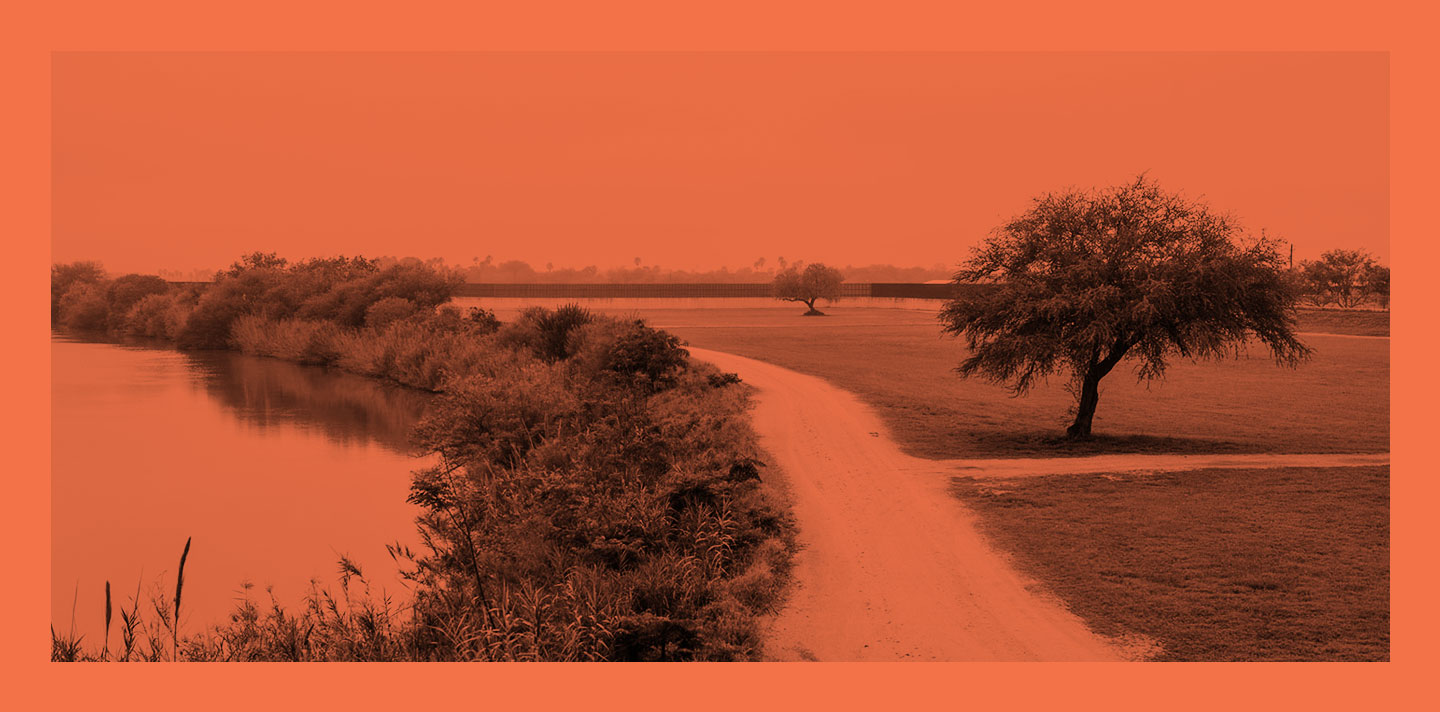
Through events like Dreams, Garcia and others are also doing their part to build bridges from the past to the present when it comes to both grassroots music and activism, often using one to propel the other. The McAllen music scene was recently forced to organize to protect its very existence after a white, developer-friendly politician sought to ban outdoor amplified music and all-ages shows in the city’s 17th Street Entertainment District—a ban that would have killed live music at the Yerberia Cultura and, by association, Dreams. A campaign spearheaded by Garcia and veteran local musician Andres Sanchez collected more than 1,000 signatures on a petition to oppose the ordinance in a single day, ultimately forcing the city commission to back down and rescind it.
But other fights rage on. The same forces that keep people from traveling out of the Valley to see or play shows—poverty, geographical isolation, and the border patrol checkpoints on every road leading north and south—make it difficult to access healthcare services such as abortions, or to visit family or seek economic opportunity elsewhere. Some of the same kids screaming “She’s brown! She’s smart!” along with Victoria Ruiz at Dreams can be found escorting women to the sole clinic in the Valley that provides abortion services; some of the same people proclaiming that they’re “young, Latin, and proud” along with Roberto Lange at the Yerberia Cultura were also at an event earlier that day in nearby San Juan, Texas, where community leaders assembled by newly elected Rep. Vicente Gonzalez hosted a roundtable for Democratic minority leader Nancy Pelosi, directly speaking truth to power regarding issues of immigration, religious tolerance, and environmentalism.
Also in attendance at Dreams was Eduardo Canales of the South Texas Human Right Center. He works with law enforcement and local landowners to provide fresh water stations for the undocumented migrants seeking points north along the massive ranches and scrubland that divides the Valley from San Antonio. The bodies of those he can’t save—people that die from exposure or dehydration—he helps recover from private land in hopes of reuniting them with their families.
Few issues in South Texas are as charged, however, as access to affordable abortion services. After Texas passed a measure designed to result in the closure of the majority of abortion clinics in the state in 2013, the Whole Woman’s Health clinic on South Main Street in McAllen became the only remaining clinic providing services in the entire Valley—an area that covers almost 5,000 square miles and is home to more than 1.3 million people. Whole Woman’s Health argued the bill was unconstitutional, took their case to the Supreme Court, and won. But the damage was done—many of the clinics that closed have yet to reopen, and Texas’ assault on these clinics continues.
At the forefront of that fight in the Valley is South Texans for Reproductive Justice, an organization founded by activists Denni and Melissa Arjona that is committed to evolving the conversation around abortion to include factors of marginalization like poverty and citizenship status that disproportionately affect women of color. For the last few years, the Arjonas have organized a concert called Skank for Choice—featuring Denni’s band Los Skagaleros—to benefit La Frontera Fund, which helps provide practical support to Valley residents who are seeking abortions. Additionally, local Cathryn Torres, a staunch supporter of reproductive justice, produced a show called Justicia, promoting women in hardcore and benefitting La Frontera Fund.
McAllen’s lone remaining abortion clinic is often quite literally a battleground, with anti-choice activists maintaining a constant presence in the public spaces surrounding the building and posting massive signs within every possible sightline for patients arriving for appointments. The facility was closed when I visited, but a handful of protesters were still posted up out front, praying their rosaries.
It’s gotten so intense that in addition to a security guard, there is a literal wall in front of its doors, limiting the points of access to the facility. When the anti-choicers—typically led by leaders in the Roman Catholic community—mobilize on the clinic, the South Texans for Reproductive Justice puts together counter-actions to protect patients and employees of the clinic, often forming a human barrier.
If there’s one organization that represents the intersectionality of the Valley’s progressive front, it’s the LGBTQ advocacy group Aquí Estamos, which has strong ties to the music scene and various activist organizations—and few members of Aquí Estamos embody this spirit better than Alexis Bay.
Bay, who prefers gender-neutral pronouns, is one of the few people I meet in the valley who is not Chicano; their family immigrated from Cuba through South Florida, and moved to the Valley when they were just 3 years old. They spend their days working at a nature center in one of the few preserved plots of wildlife in the area, teaching people about its old growth forests that predate colonialism; the Valley’s positioning as a migration highway makes it one of the premier birding destinations in America. Bay is also involved in the fight for reproductive justice and volunteered to assist South and Central American refugees. “There’s no separating these things, they’re very interwoven,” Bay says of the various organizations and causes they are a part of. “The Valley is a very beautiful quilt in that sense.”
Part of that quilt can seem contradictory, and one unavoidable intersection is the role of Roman Catholicism in the culture of the Valley: Members of Aquí Estamos often find themselves volunteering with members of the church at the Humanitarian Respite Center, only to find themselves on opposite sides of the picket line in the fight for reproductive justice. And beyond the awkwardness of working with someone who might hate you for your orientation or thoughts on abortion, there’s also the struggle of Catholicism’s looming role in identity, even for those in the Valley who aren’t religious.
“Even if you’re not Catholic, on some level, you’re still probably culturally Catholic—there’s still some imagery that invokes emotion or comfort,” says Bay. “If you go to other parts of the country, they’re more than happy to be like, ‘Keep your rosaries off my ovaries,’ [but here] you still meet Latinx folks that may have a rosary. It still means something to them.”
And though progressive activists of all stripes are making advances in the Valley, that’s not to say that Brown Pride has completely taken over: There are still Mexican-American Trump supporters in the area, perpetuating false narratives about themselves.
“It’s so strange,” Patrick Garcia admits. “It’s not that I can’t blame them, but when I look at it, I understand they’re in a system of poverty, and to them, success is wealth, and wealth is being offered via this candidate via the rhetoric of false freedom, so they’re going to lean towards that.”
But even if the wall has some supporters in the Valley, of all the activist fronts in the region, the fight for the dignity and human rights of undocumented immigrants seems to have the most solidarity: You can find Catholics, atheists, musicians, grandmas, and grandchildren among the ranks of those advocating for the cause. And it’s likely because many people don’t have to look back too far to find their connection to Mexico or points south, or have a friend, relative, or neighbor without papers. The ham-fisted narratives about drug-smuggling violent criminal immigrants are hard to swallow when you know plenty of normal, hard-working people whose only difference from you is a piece of paper.
For an undocumented musician, it’s especially heartbreaking; even as the Valley’s profile grows and the opportunities for local musicians expand beyond South Texas, without papers, the risk of being detained at a checkpoint is often too great to be able to take part.
Jesus Reazola is 31 years old and stands some six feet tall, with broad shoulders and a hulking frame that belies a soft-spoken nature. His friends call him Chuy, a common Mexican nickname for Jesus. He plays drums in the band Monstruo Bohemio and raps in a group called Caldo Frio with drummer Carmen Castillo. Castillo’s family hails from Reynosa, Mexico, McAllen’s sister city on the other side of the border, and they crossed when she was barely a year old; she’s since acquired legal resident status. Reazola has not.
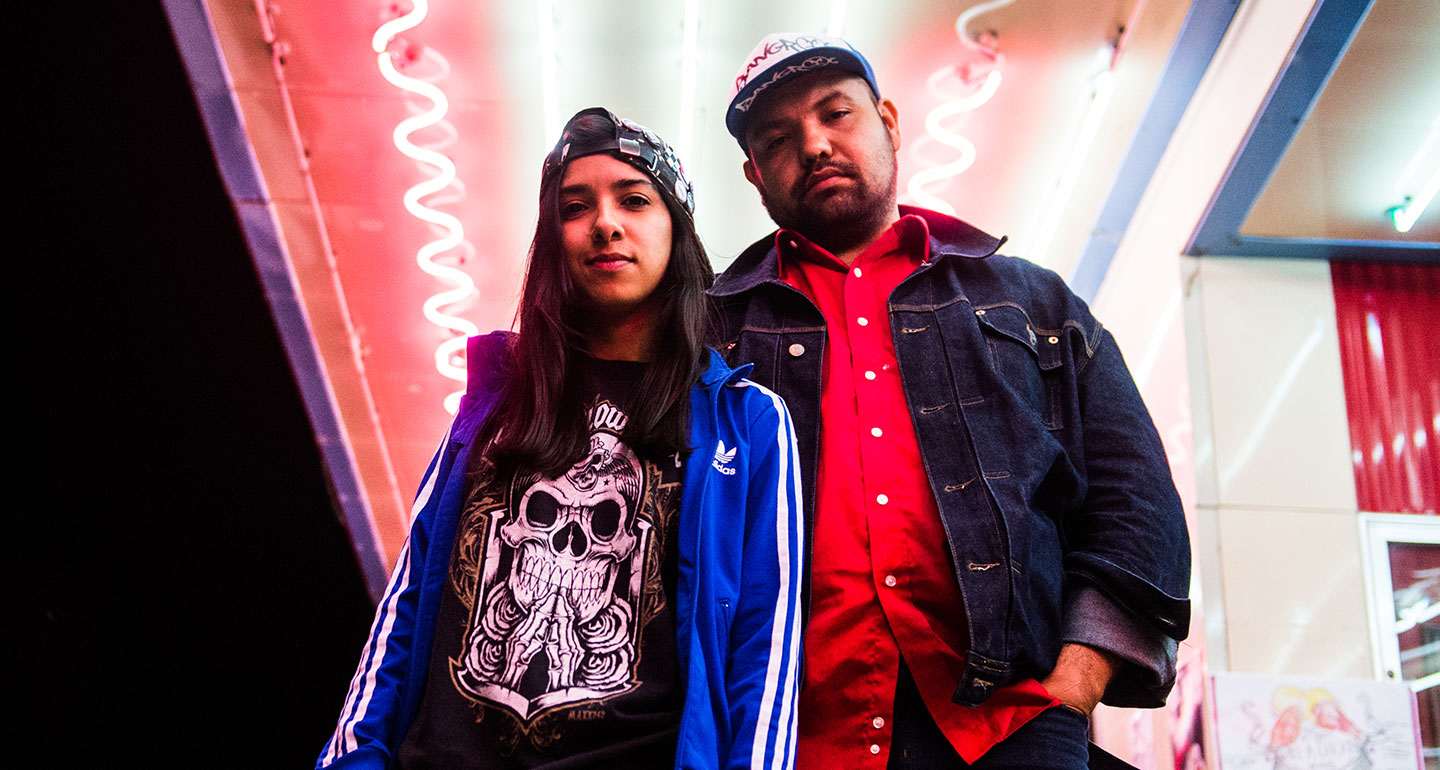
Over tacos at his favorite restaurant in McAllen, Reazola tells me how his family fled from intense cartel violence in Monterrey, Mexico in the summer of 1998 when he was 11, just old enough to remember the journey into the U.S. While Reazola was still living in Monterrey, his mother would make frequent trips into the U.S. to work. (Before drug cartels monopolized the smuggling routes across the border, freelance coyotes—human smugglers that knew the safest routes to cross undetected—could get you across for a reasonable fee.) She told him how, while crossing the Rio Grande, she was swept up in a current and just narrowly escaped drowning, exhausting herself fighting the river’s strong current. “Don’t fight the river, it’s too strong,” she said. “Just float.” When they crossed as a family in 1998, the advice became a mantra: “Flota con el Rio.”
Years later, when Reazola was 26 and living in the U.S., he found himself at a party when a fight broke out, drawing the attention of law enforcement. He says that he was trying to break it up, but it didn’t matter—he was rounded up and taken to jail, and when his undocumented status was discovered, he was deported to Mexico, where he hadn’t lived since he was a child. Like a lot of undocumented Mexican immigrants in the U.S., staying in Mexico wasn’t really an option for him; his life, job, friends, and much of his family were in the States.
But as the U.S. ramped up its war on drugs, and the smuggling routes became too valuable for the cartels to ignore, the independent coyotes were given a choice: Start working for the cartels, or else. Many chose to flee. People looking to cross without papers faced a similar dilemma: If they were discovered crossing without paying the cartel, they too faced reprisals. Unable to afford the few hundred dollars to pay the cartel, Reazola chose to risk his life crossing with a former coyote, who had fled to the U.S. rather than work for a cartel, crawling for hours to avoid detection. “I was in Mexico for less than 24 hours,” Reazola says. “Me and my friend crossed back as soon as we touched down in Mexico. We didn’t even eat that day.”
When they arrived at the Rio Grande crossing, his mother’s words came rushing back to him the moment he stepped into the water—wisdom that likely saved his life. The throughline of those experiences—Reazola mother’s perilous crossing, the family’s flight from Monterrey, and his mad dash back into the U.S. as an adult—became the basis for “Flota con el Rio,” the sixth track on Caldo Frio’s latest album, Aca en el Sur (Here in the South). It’s a bouncy rap song colored with strings and a somber acoustic guitar riff, peppered by Reazola’s rapid-fire flow; he speaks English well, but he raps in Spanish, his first language.
Caldo Frio: “Flota con el Rio” (Buy on Bandcamp)
When Reazola first told me his story, I struggled with the responsibility of putting him at risk by sharing it publicly. But like many other undocumented immigrants in the U.S., he understands that in order to change policy, you must first change hearts and minds. Undocumented immigrants often struggle for the most basic dignity, for the right to move freely, to be recognized as human. Near the border, this results in a peculiar kind of detention—not in a camp or locked-down facility, but within the hundred-mile floodplain that makes up the Rio Grande Valley. With checkpoints all around, the risk of being deported is too great to justify even small trips—for an artist like Reazola, the idea of even traveling to Austin remains in the realm of fantasy. There can be no tour, no SXSW showcase, no exploration of the country he risked his life to reach.
Most of the people I speak with in the Rio Grande Valley are exhausted by the rhetoric of border politics and by national media presuming to speak for them. Some are even taking the issue into their own hands with Neta, an independent news source for, by, and of Valley residents, a place for their voices and stories to be heard, on their own terms. For musical diehards like Garcia, Vela, and Garza, the dream is for the music of the Valley to be recognized for its rich past, present, and future; for the South Texans for Reproductive Justice, the dream is for all people to have equal access to healthcare; for Reazola, the dream is merely to take his art beyond the confines of the low-lying scrublands that he now calls home. All of these are American Dreams, each one worth fighting for.
Rising: Equiknoxx Are Saving Dancehall by Making It Weird Again

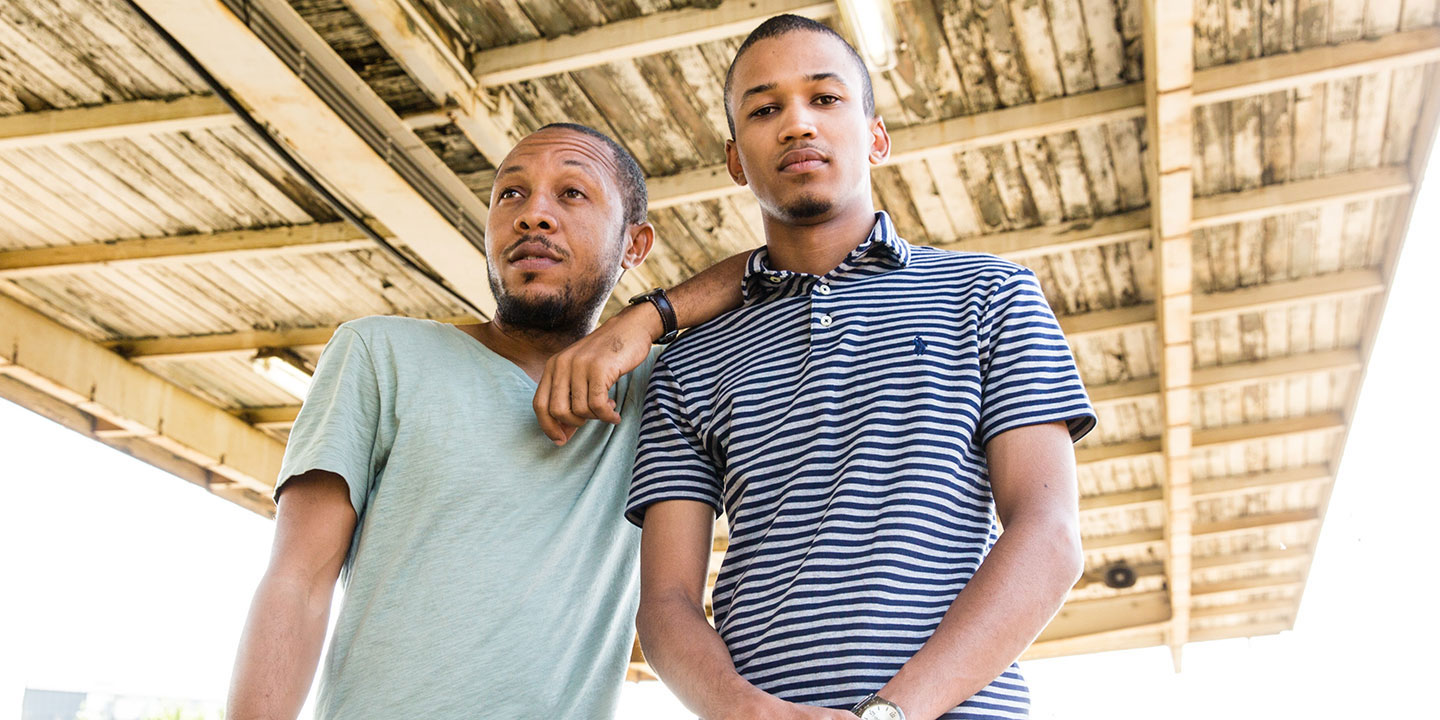
Over the last 10 years or so, the Jamaican production duo Equiknoxx has crafted breakout hits for dancehall artists like Busy Signal (“Step Out”) and Aidonia (“Hundred Stab”), but only one of their riddims—2010’s Jim Screechie—reached that coveted state of dancehall saturation where the beat itself becomes the star of the show and every single artist who touches it can expect repeated spins. Though they’ve put some of Jim Screechie’s signature elements—a piercing eagle scream and organ-like synth vamps that suggest the vocalist is being chased through the studio by an evil clown—to good use on other tracks, none have ever quite achieved that same rare air, and you could be forgiven for thinking that Equiknoxx had retired from the scene as one-riddim wonders.
That all changed last year when the logic of dancehall was turned more or less upside down by the release of Equiknoxx’s debut album, Bird Sound Power. Instead of creating buzz in the Jamaican market and hoping a tune would cross over, the record came out on DDS, the imprint of Manchester-based dark ambient duo Demdike Stare, and clicked almost instantly with a whole host of new fans via websites, clubs, and radio shows that typically cover more self-consciously experimental electronic sounds. Even more shocking, instead of 12 artists singing or toasting over a single catchy beat, Bird Sound Power comprised 12 startlingly original riddims with no vocalists at all. Layer upon layer, almost every track forms a sound collage that is exceptionally dense for dancehall, a genre which traditionally prizes minimalism, or at least a certain economy of means to keep everything moving forward. On many of the album’s tracks, the oxygen that would conventionally be taken up by someone like Beenie Man is occupied instead by snatches of disembodied and distorted voices, oscillators, harps, glockenspiels, and bird noises. In fact, if it wasn’t for the unforgettable sonic logo of that octave-shattering eagle scream, you could also be forgiven for believing that this is not even the same Equiknoxx that was putting down more conventional dancehall hits back in the summer of 2010.
And, in one sense, it’s not. Equiknoxx has always been a loosely-defined collective, but it has also always more or less centered around the production work of Gavin “Gavsborg” Blair. By the time of Bird Sound Power’s release, however, one of Gav’s many collaborators, Jordan “Time Cow” Chung, had organically become a full creative partner. The brilliant and jarringly new Equiknoxx sound heard on BSP is largely the result of the creative chemistry between the two artists; an eclectic and unexpectedly recontextualized array of samples and voices talking to each other within a leaner, muscular framework of electronic drums and bass as tough as any dancehall’s seen in a decade.
Equiknoxx: "Clunk" (via SoundCloud)
That sound is worth analyzing for a moment because, in addition to a new audience, Bird Sound Power suggests a whole new direction for the genre itself. While the rhythms of dancehall have always evolved quickly, generally getting more uptempo as Jamaican producers absorbed and reshaped influences from house, 2step, and other dance forms, since 2012 or so it has become more static. This is partly the result of the transition into Auto-Tune and ProTools-based production, a switch which has somewhat limited the genre’s sonic palette.
But Gavsborg and Time Cow’s use of samples and unconventional sounds expands that shrinking palette into a rainbow of weird flavors. “A Rabbit Spoke to Me When I Woke Up” sounds like the peeping of robotic frogs, while “Last of the Mohicans” employs synthesized feminine voices to create an awkward body music of “oohs” and “ahs,” like Siri imitating a bored porn starlet. One track even features a prominent sample from psych-rock duo Silver Apples’ early foray into machine music, “Oscillations.” Like the best and most boundary pushing productions from ’90s hip-hop heavies RZA and DJ Premier, these tracks create tension with dissonance, off-kilter rhythm, and disorienting references, only to corral these elements back into a larger rhythmic structure, making the uncanny danceable in a sort of meta-syncopation that happens at a level that’s conceptual as much as metric.
Equiknoxx: "Last of the Mohicans" (via SoundCloud)
In that sense, Bird Sound is both a new approach and something of a throwback to the golden era of dub experimentation, when reggae producers not only regularly issued instrumental LPs but experimented with techniques like revving motorcycles in the studio, kicking the spring reverb unit in time with a drum, or manipulating reel to reels by hand during mixdown. And Equiknoxx went a long way towards cementing their connection to the spirit of the dub era with March’s Majestic Melodiesmixtape, which features the haunting melodica work of Addis Pablo (son of dub pioneer Augustus Pablo) over an eclectic bed of tracks mashing up classic ’70s rockers, Dr. Dre, and a dubplate version of Drake/Popcaan’s “Controlla.”
Equiknoxx and Addis Pablo: Majestic Melodies Mixtape (via SoundCloud)
Majestic Melodies is very different from Bird Sound in mood and tempo, but it seems to be driven by that same conceptual process—rhythmically reconciling the paradoxical. Gavsborg and Time Cow reconciled a few more paradoxes on a crackly mobile connection from Kingston to discuss their unique approach.

Pitchfork: How did Equiknoxx first come about and what roles do people play in the collective?
Gavin “Gavsborg” Blair: Equiknoxx originally started out as a group of four high school friends a long time ago, back in the year 2000, in Kingston. We started out rapping, basically. Eventually, the other guys went their own ways and I was standing alone. At the same time, there was this strange character on my email over the years, always sending me his tracks. Some I didn’t like, to be honest, but I could definitely hear the potential in others. What I was mostly interested in was that he thought very differently—kinda similar to me. Not the same, but similar. So around 2012, [Chung] sent something and I was like, “Aw, shit. He nailed it. This is mad.” After that, gradually, informally, he became a part of the collective.
And the material on Bird Sound Power is both of you together?
GB: Yeah. Around 2015, I got a call from a man called Samrai who is a DJ over in Manchester, UK, who was looking for tracks to play. Samrai formally introduced me to [Manchester DJ] Jon K, who introduced me to a label called DDS from Demdike Stare who said, “We’d really love to do an album with you guys.” We spent a year putting the tracks together, back and forth on the email, making simple edits to enhance each one. We called it “The Longest Email Thread Known to Man.” That went on almost every day for a couple months, until we finally agreed that this is the vision that we come up with for the Bird Sound Power album. It was very refreshing to have our first official album be a riddim-focused album, so the focus wasn’t around vocals. My mom was very happy about that. She always wanted to slam the songs out of her car but, as a Christian woman, she couldn’t because of some of the colorful content. She was finally able to like say to her friends: “Yo, here’s my son’s work: it’s clean, fun for the whole family!”
Equiknoxx: "Timebird" (via SoundCloud)
It’s a bit of a throwback to put out a full album of riddims like that these days. How did you make that decision?
GB: When Jordan and I started sending tracks back and forth in the early stages, were like, “Who’s gonna record on them?” And then we were like, “Nah, it doesn’t need it.”
So who comprises the Equiknoxx stable of artists at this point?
GB: It’s a simple crew. On vocals we have Shanique Marie, who travels with us on tour and normally does a live set singing. Kemikal is also a vocalist and he also did an independent project with Jordan. On production is Bobby the Blackbird, Time Cow, and myself. Naturally we have my younger brother, Brent Bird, hanging around the studio. That’s more or less the family, then there are the artists that we work with: Aidonia, Busy Signal, Masicka, RDX, Capleton, Beenie Man, Alozade, Elephant Man, and Chico.
Chico might just be my favorite—and most under-utilized—artist from that whole’90s singjayera. What are you working on with him?
GB: We have an upcoming EP with Chico, Alozade, and Kemikal. It’s an interesting sound with the three of them together that started with a song called “The Link” that Kemikal envisioned a couple of years ago, and that was one of the key tunes that brought us to the attention of the label in Manchester. But yeah, Chico is amazing. When we work with him we feel like we’re working with a vocal producer, and you don’t find that nowadays. He knows what he’s doing and how he want to hear himself. We learn a lot from him.
Equiknoxx: "The Link (Remix)" [ft. Alozade, Chico, and Kemikal] (via SoundCloud)
So thinking about how much the industry has changed since those early Equiknoxx tunes came out on 45, where is the dancehall industry headed in 2017 and where does Equiknoxx fit into that trajectory?
Jordan “Time Cow” Chung: At the moment the business is very artist-driven, but within Jamaican music we of course consider ourselves to be really in the dungeon of the dancehall. [laughs] We’re more interested in what dancehall can be. We’re trying to add uniqueness instead of just pushing out new riddims.
Who would you say are your peers or like-minded dancehall producers?
JC: You have some upcoming ones like Sky Ras, JLL, and the Wicked Wicked riddim from Young Vibez, so we try to bring those to the forefront as we’re doing what we do.
Equiknoxx Music : “Fly Away” [ft. Alozade & Gavsborg] (via SoundCloud)
There’s a wide range of obscure styles you guys are sampling—you don’t really expect a Silver Apples sample in the middle of a dancehall track. Where does that come from?
GB: I don’t own many records, but I have a few gems. Jordan is similar to me, but Jordan’s grandfather has a whole wall-to-wall room of interesting stuff, that’s where the Silver Apples would come in.
Similarly, my grandad would come across a lot of things that you wouldn’t necessarily find elsewhere living in [the Jamaican coastal city] Falmouth, even some white labels, from the Water Square record shop. I wasn’t handed down that collection, though; and a lot of them got damaged. Jamaica is like a harbor country, so just by walking downtown you hear sounds from all over. Kingston is one of the largest natural harbors in the world, so we’ve had mad ships coming in for hundreds of years, just leaving gems that have passed on through the generations. We’re definitely exposed to enough things in JA, it’s just if you choose to tap into that or not. A lot of people say it’s just take, take, take, but I disagree with that. We get a lot, too.
Rising: Perera Elsewhere Makes Mysterious Pop Music for Realistic Escapists

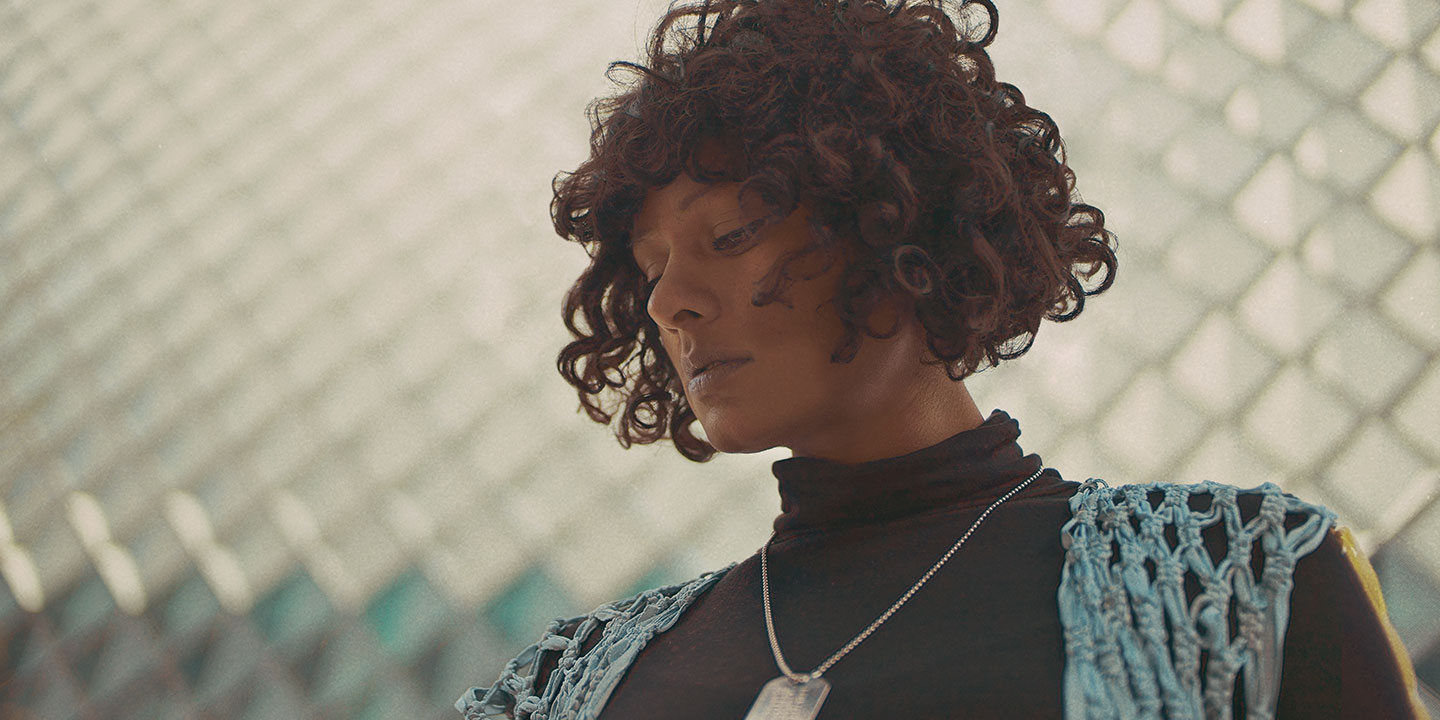
Sasha Perera isn’t completely sure whether music should offer a retreat from the outside world, or if it should be a tool for provoking social change. “A lot of musicians either want to make really politicized art,” she tells me via Skype in early May, “or they just make ambient music because they can’t talk about all the bad things that are happening.” On All of This, her roiling new album as Perera Elsewhere, she splits the difference with low-lit electronic pop songs that are structured but experimental, atmospheric but laced with languid vocal hooks, strange but approachable.
“In some ways, reality is so harsh that we should confront it and attempt to change things, but on the other side reality is so sick that if I don’t find a corner for me and the people I love to protect ourselves from the evil, it’ll be awful,” she continues. “So I’m in between both of these things. I’m creating an ‘elsewhere’ musically, for me and like-minded people to hide, but it also has to be a place to reflect on what’s going on in the world—we don’t want to live in a bubble, where we paint pretty pictures while everyone is dying outside the castle.”
Perera Elsewhere: "Something's Up" (via SoundCloud)
Perera first found a musical refuge of her own within the world of club music during her days as a raver in late-1990s London, as she dove headfirst into the breakbeat and jungle scenes in her teens and early twenties. The hybrid nature of those early experiences drew her in completely; the social aspect of it, the confluence of different people, technologies, and genres. “All these people would come together for this music, like some kind of ritual,” recalls the 39-year-old, sitting on the floor of her living room. “I was really touched by it.”
Perera is still a club kid at heart, but her proximity to sound system culture these days comes via her work as a DJ and general partygoer—she’s not keen on producing for it herself. Instead she loves to dabble in the jazz, hip-hop, electronic, and outré influences that converge in Perera Elsewhere.
Perera Elsewhere: "Happened" (via SoundCloud)
This rampant curiosity stretches back to her childhood in London, where Perera was born and raised, aside from a two-year stint in Singapore. At home with her parents, who are both originally from Sri Lanka, artists like Ravi Shankar, Boney M, ABBA, and Boy George provided some of the ambiance. Her mother had a penchant for classical music, and also encouraged a young Sasha to pursue her love of instruments, supporting her as she cycled in and out of piano, guitar, and violin lessons, before gravitating towards the trumpet. “I was probably the most ignorant person about the trumpet at first,” Perera admits, in her no-nonsense South London cadence, “but it was loud.”
Today, the trumpet is a staple of her live performances, and Perera handles almost all of the instrumentation on her songs, as evidenced by the brooding melodic textures of All of This; she took care of the production too. As a child she spent her free time learning the rudiments of recording by creating her own take on low-fi audiobooks, filled with narration and improvised sound effects captured on old tape decks lying around the house. Since then, of course, she has leveled up both in terms of skill and quality of equipment. Her current studio has an open-door policy, and Perera relishes having a workshop where other artists can come to work, a corrective of sorts to the lack of such a space when she was a teenager.
The lab is in Berlin, her home for the past 16 years and the place where her most important musical evolution took place. Not long after moving to Germany, Perera became the frontwoman for Jahcoozi, an experimental electronic trio that put out three studio albums throughout the 2000s. In Jahcoozi she was the MC, who would rap, sing and hype up the crowd with a band behind her. With Perera Elsewhere, she can focus more of her attention on the instruments, playing as many as she wants while keeping dance music on the cards—as an option rather than an obligation.
In the years between her debut album, 2013’s Everlast, and All of This, Perera took time to master instrumentation, songwriting, new facets of her singing voice, and the possibilities that minimalism leaves for them to flourish. The interlude also involved a good amount of travel, through India, Turkey, Africa, and beyond, as a means to see the world and broaden the space that Perera Elsewhere inhabits within it.
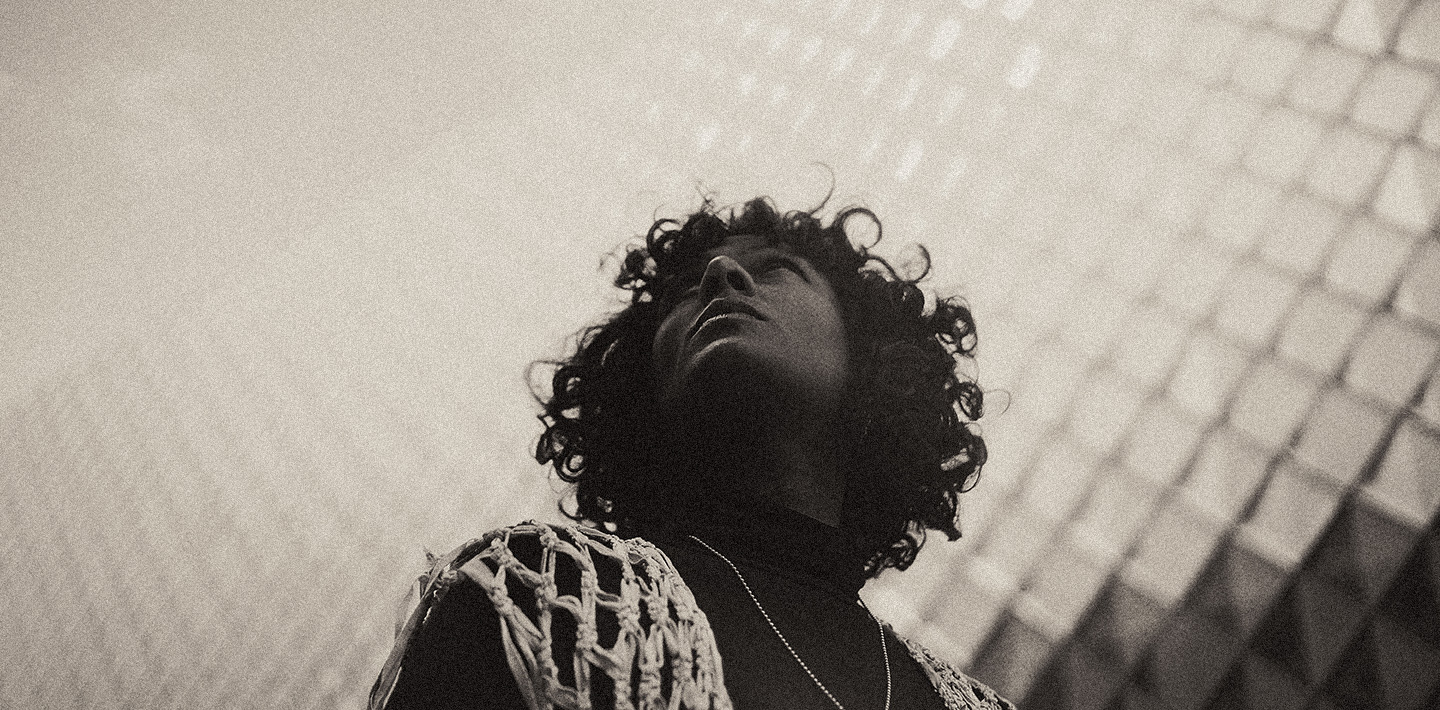
Pitchfork: How important is travel to your creative process?
Sasha Perera:Before I made music, when I was a student, I would work and save money to go backpacking in different countries alone. Over the years I’ve also been invited to do a lot of gigs and collaborations around the world. When I go, I take gear with me and do my best to use the situation around me to work. I really do enjoy collaborating with other people and travelling through music; it’s another way to relate to people because you have something to do together. I don’t want to limit my travels to Googling the best restaurants and hotels. Instead, I think: Why consume something when you can make something?
What prompted you to move away from London, and how did you choose Berlin as your new home?
I got so lucky, in some ways, with my version of “one thing leads to another.” I went to university in London and I didn’t know what I wanted to do initially, but I fell into doing European Politics and German purely because it was multidisciplinary and I was good at German for some reason. Then, I had to spend a year abroad in Cologne. I had no idea about Berlin but people started telling me crazy stories about this place where clubs stay open for weeks, secret underground stations where raves happen, and this creative DIY culture. I happened to go there in 1999, and saw how these people lived, and I thought, I’ve found my fucking purpose, man.
As soon as I got back from that trip I started telling people that I was going to move to Berlin by the end of the year—I don’t know if I really believed it but I said it so many times that it would’ve been so shameful if I hadn’t done it.
How was Perera Elsewhere born as a separate entity from Jahcoozi?
I was playing so much with the band, and I started to mess around with a guitar and this really nice microphone. On the recordings I would leave a lot of space for my voice, adding reverb and effects to my voice, and I was really shocked at the impact that minimalism could have, especially after being surrounded by hi-hats and massive bass sounds all the time. I was really impressed with how you could do so much with so little. I would make these tracks in my old apartment, and I enjoyed the reaction that I would get when I played them for people.
Perera Elsewhere: "The Other Side" (via SoundCloud)
In music today, three or four years is a long time between records. Did you ever feel any pressure to put out this new album any faster?
All the time. Because [musicians are] just narcissists! And you’re trying to make money from your music as well, otherwise I would just have my Bandcamp page and a job in something else, which I don’t. So you feel that pressure but you can’t really fall into it. Things could’ve happened much faster for me if I had been more clear about what I wanted to do, but it took me three years to work out that I wanted to make something that was in between an experimental noise record and a pop record.
I got much more comfortable as an artist in that time and I grew up in a couple of ways. The first version of this record had hardly any vocals, and it was just a lot of loopy experimental music. I forced myself to arrange it, and slowly realized that I could some write some songs for it.
Perera Elsewhere: "Karam" (via SoundCloud)
Right near the middle of the new album, on the song “Karam,” you put your spin on the 50 Cent song “Candy Shop.” How did that idea come to you?
It’s a really weird story, but between 2015 and 2016 I lived in Turkey. This guy I knew had a friend working for a distribution company that made one of the biggest TV shows in the world: It’s like Game of Thrones for the Middle Eastern market and almost 90 other countries around the world. I auditioned [for the show] not expecting anything, but they told me ‘You’re it!’ So I moved to Istanbul for seven months to film. The city is great, but I hated making the show because I’m used to being self-employed, and they lied to me about what I could do with my free time. The main actress was Greek so she had a translator, who was the only person that spoke any English on the set, and she hated the place as much as me. She’d sing “Candy Shop” all the time, and it sounded so sad and dark, so I got the idea from her! I recorded that track on set in Istanbul, using the microphone on my MacBook.
To what extent did you produce All of This? Was there a particular story you wanted to tell on this album?
I did all the production, except my friend did some extra work on two songs, and a few arrangement changes that taught me so much for the rest of the record. I played most of the instruments on there except for the drums. I don’t write songs with a view to making a concept album, there’s not really a formulaic approach. But in terms of the content, it usually stems from all the shit that’s happening in the world around us. Writing and making music is how I deal with it, so within the songs there are reflections on life and reality, and the reasons I want to escape it.
Profile: Life and Death on Manhattan Island: Fleet Foxes’ Robin Pecknold Returns

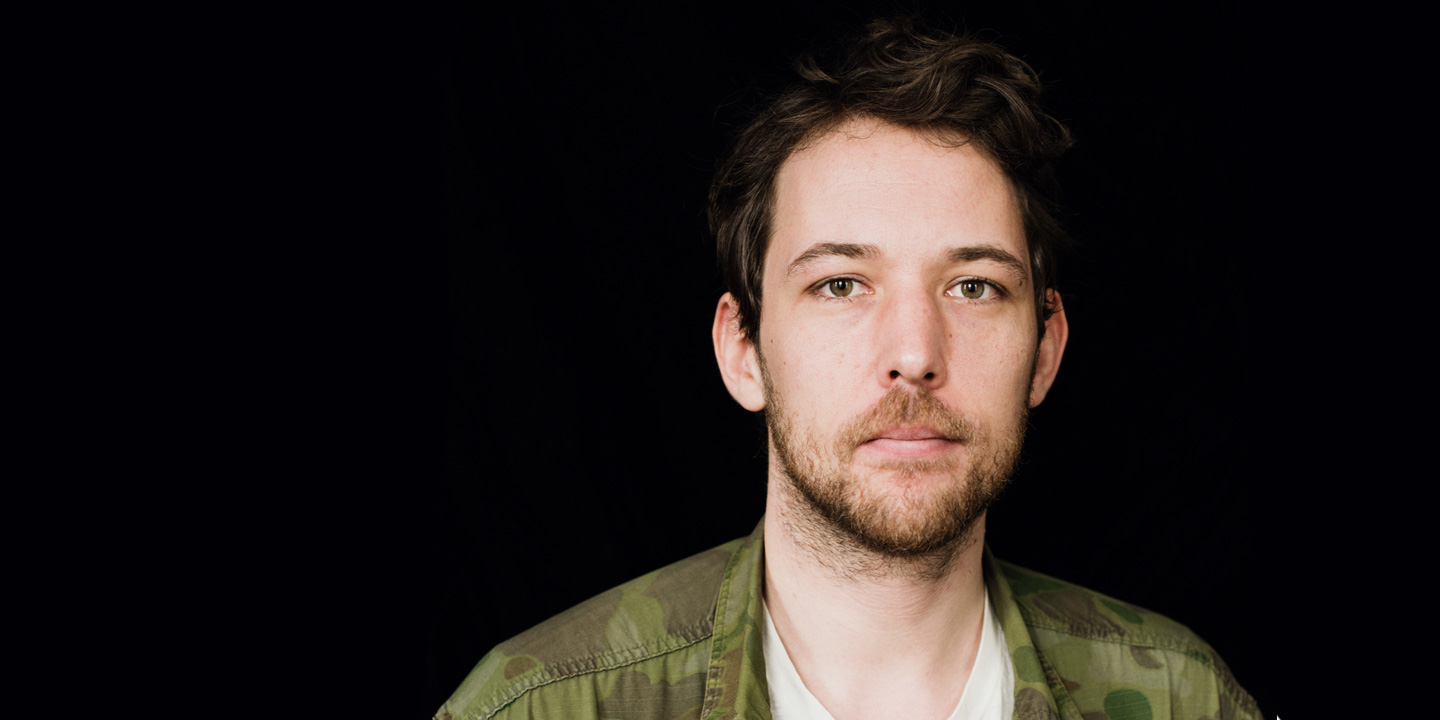
Anyone who has lived in New York for any significant amount of time has likely endured at least one tragicomic, claustrophobia-induced meltdown. The city is loud and endless, its citizens are frequently deranged, and it is sometimes terrifically difficult to get your little carton of half-and-half home from the grocery store without confronting one faith-shaking strain of perversion or another. Pockets of pure solace are tough to come by, which is why Robin Pecknold and I are hovering nervously outside a nondescript building in lower Manhattan, eyeing a doorbell labeled “Dream House.” As taxicabs and midday delivery trucks roar by, we exchange a long, anticipatory look. He presses the button.
We’re buzzed in and climb a staircase to the third floor, passing through several clouds of robustly scented incense en route. A moony-eyed attendant shifts a long braid from one shoulder to another and asks us to take our shoes off and tuck them under a wooden bench before entering the space—two thickly carpeted rooms connected by a short hallway.
The minimalist composer La Monte Young conceived of Dream House—an immersive sound and light installation built in collaboration with his partner, the visual artist Marian Zazeela—in the 1960s, though it has only existed in its present form and location since 1993. Each of the two rooms are filled with pink and purple lights oriented in various directions, some highlighting sculptural mobiles designed by Zazeela—little whirligigs, suspended from the ceiling, which create seemingly three-dimensional shadows. Meanwhile, sizable speakers broadcast a piece Young composed specifically for the site. He’s described it as “a periodic composite sound waveform environment created from sine wave components generated digitally in real time,” and it’s played on a customized Rayna interval synthesizer. A more sophisticated listener might be able to parse its particular tones, but to me it sounds as if a large, gray machine was meditating and got stuck on an especially dynamic “Om.”
The experience is dramatically different depending on how you position yourself in the space. We enter, and Pecknold—who is tall and lithe, with kind eyes and short brown hair—immediately sits down on a pillow, and closes his eyes.
I was eager to visit Dream House with Pecknold in part because Crack-Up, Fleet Foxes’ new full-length record, is chiefly concerned with finding peace amid chaos. It’s also more dissonant and plainly mesmeric than anything the band has made before, and filled with these beautiful little half-admissions of inadequacy: “Was I too slow? Did you change overnight?” Pecknold wonders on “Third of May / Ōdaigahara.” It’s the kind of question a person asks when they are re-considering a failure that continues to befuddle them, hours or months or years later.
Since the last Fleet Foxes release, 2011’s Helplessness Blues, Pecknold moved from the Pacific Northwest to New York City’s Lower East Side, exchanging relative quiet for the established bedlam of Manhattan. “I felt like I was a little too West Coast—too much of a pushover,” he told me earlier in the day, over lunch at a Japanese restaurant in Tribeca. “Coming here, I feel like I’ve gained some grit. It’s such a hard place to live sometimes. It steels you.”
Pecknold is gentle and intelligent, a hungry listener; talking with him, you get the sense that an antenna is always up and open, collecting new and better information about the world. After relocating to New York, Pecknold, then 26, enrolled as an undergraduate at Columbia University, where he began a major in English. He played some opening sets for Joanna Newsom. He co-wrote the score to an off-Broadway play. He participated in a note-by-note live recreation of No Other, Gene Clark’s 1974 folk-rock masterpiece. Mostly, though, he was trying to reason through the trajectory of his own life—what he wanted, what it meant, and how to get there without, well, cracking up.
Spend any time with Pecknold’s work, and it’s impossible not to hear a person carefully reasoning-through the total lunacy of being alive. Narratively, Crack-Up recounts some sort of loss; its source feels alternately romantic, political, creative, and spiritual. Pecknold sings, mournfully, of an uncertain future—until, on the record’s back half, he seems to reconcile everything.
“The record is about me going from being a solitary person, to reentering the band, reentering old relationships,” Pecknold says.
He admits that uncertainty and contradiction have been on his mind these past few years—all the ways in which two seemingly incompatible ideas can come to coexist. Wanting to be alone but needing others; feeling flummoxed by all the big existential questions, yet still wanting to live a full and generous life.
Pecknold titled the record in part after a three-part essay by F. Scott Fitzgerald that appeared in Esquire in the winter and spring of 1936. Fitzgerald understood that growing up is largely about having to reckon with oppositions in which both halves somehow prove true. “One should, for example, be able to see that things are hopeless and yet be determined to make them otherwise,” he wrote.
Of course, this requires more than a little self-deception, and Crack-Up contains multiple mentions of lies and lying: “Lies inside anyone you open,” Pecknold repeats on “On Another Ocean (January / June).” “But I know my eyes/They’ve often lied,” he admits on “Fool’s Errand.” Or, on “Third of May / Ōdaigahara”: “And as the sky would petal white, old innocent lies came to mind/As we stood, congregated, at the firing line.” Pecknold titled one song after Cassius of Rome, a leading instigator in the plot to assassinate Julius Caesar; one of the grisliest scenes in all of The Inferno is when Dante’s winged, three-mouthed Lucifer gnaws on Cassius, whose betrayal condemned him to eternal suffering, forever crammed, feet-first, into Lucifer’s maw. Cassius lied, and he was punished for it.
“I think about lying a lot,” Pecknold admits. But rather than an unforgivable sin, he figures lying as a kind of inevitable coping strategy: “Going back to the idea of balance—I’ve had a very objective mindset going into school, and at school. I was like, ‘OK, but what’s the objective right answer, in music?’ But there is no right answer,” he continues. “I can’t be this objective about everything, or about people. For example, if you were to say, ‘Life is not worth living, there’s no meaning to life,’ and you decided to take that as objectively true, then you’d need to establish something like a lie to be able to keep going—to give it meaning. One way of thinking about it is as deceiving yourself. Or, in relationships, when you’re trying to balance seeing someone as they really are versus the required romance—not necessarily romantic-romance, but the energy of romance...”
“Well, every human relationship is a kind of fiction,” I venture.
“Totally,” he says. “But in my early 20s, I was projecting my expectations onto everybody: This person is the damsel, this person is the villain, this person is my sidekick, this person is my hero. Making characters out of everyone. It’s kind of a survival mechanism, but it’s also reductive.”
On “I Am All That I Need / Arroyo Seco / Thumbprint Scar,” the record’s six and a half-minute opening epic, Pecknold sings of his unfair expectations: “And the myth I made you measure up to/It was all just water, winding by you.”

Pecknold turned 31 earlier this spring. He has been writing songs since he was 15, and credits his parents with inspiring and supporting his work. His mother is an English teacher, and his father builds and plays guitars. “Music had been a dream of [my dad’s], so it felt cool to carry that on,” he explains.
After graduating from high school in 2004, Pecknold got a job at a restaurant called Bimbos Cantina, which was then a kind of epicenter of the Seattle alt-rock scene. “The music community was so accessible—every musician worked there, like, this guy was in Modest Mouse, this guy was in Band of Horses, this guy was in the Shins,” he says. “I knew that I just wanted to be playing music, and financially I didn’t really want to ask my parents to pay for college. So I was like, ‘Well, that’s my college. I can just go work with these guys and see what they play on the stereo.’ It was so clear to me what I wanted to do.”
When he was 20, he recorded a series of demos with the producer Phil Ek and his childhood friend Skyler Skjelset; these eventually became the Fleet Foxes’ self-titled and self-released debut EP. The band signed to Sub Pop, and another EP, Sun Giant, and two full-lengths followed: Fleet Foxes, in 2008, and then Helplessness Blues, in 2011. (Josh Tillman, who now records as Father John Misty, left the band somewhat acrimoniously, shortly after the promotional duties for Helplessness Blues were fulfilled; he and Pecknold have since reached a kind of quiet detente.) Pecknold moved to New York and started taking literature classes at Columbia a couple of years later.
Crack-Up is full of allusions to ancient texts: names, places, ideas. One track is titled “Mearcstapa,” a nod to a character in Beowulf, the epic, Old English poem composed sometime in the late 10th century. Grendel, one of the poem’s villains, is referred to as a mearcstapa, or a march-stepper—a figure that walks or haunts the borderlands, something between man and monster, between here and there.
“I put music aside for a while, because it was confusing,” Pecknold explains. “How do I work on the music I used to work on, while doing this other thing? I was also trying to figure out whether music should just feel good, or if it should be an intellectual problem that then gets solved through sound.”
We talk for awhile about the ways in which a university can confuse an artist—the strange tension between reason and whatever wild, alchemical reaction produces art. Music, like writing or painting or any other creative tradition, can be dissected and parsed and made sense of, but the process of breaking a craft into its constituent parts can feel alienating or misguided, too. In a classroom, it’s easy to undervalue the emotional weight of things. I tell him that during my own tenure at Columbia, I spent all my time sitting outside Dodge Hall, smoking and being mad.
“Same!” Pecknold says, laughing. “Sitting outside Dodge, smoking, being mad—that’s exactly what I wanted to be doing. I was 10 years late, but that was what I missed.”
There’s no talking or cell phone use permitted in Dream House, although it is hard to imagine anyone wanting to do either. La Monte Young believes that time is more essential to art than most of us are willing to let on—the way a work can ripen, change shape, evolve like a person does. The intensity of the environment levels nearly everything else. When you’re in Dream House, you’re in Dream House.
There are a few other people already there when we arrive—supine on cushions, sitting cross-legged, roaming—though we ultimately outlast them, posted up in opposite corners of the front room, occasionally padding toward or away from each other. The experience is somehow both incredibly loud and very quiet. Part of the thrill of visiting with an accomplice is sharing an encounter deliberately designed to be solitary, or at least interior—you lie down, you close your eyes, you move your head a little, you picture whatever it is you need to picture—and then when it’s time to leave, and you’ve laced your boots and zipped up your jacket and thanked the attendant, you immediately grab each others’ wrists and try to make sense of what just happened. You were alone, but you were in something together.
We decamp to a private listening room on the ground floor of a stereo store in SoHo, where we drink bottled water and scroll through a seemingly infinite library of songs, which we wrongly presume we can play as loudly as we want (when we crank the volume to uncivilized levels, a chiding little admonishment pops up on screen: “Wow! That’s a little loud for this room!”). Pecknold plays the Dirty Projectors’ “I See You”— singing along, beautifully, to the “Forgiveness, reconciliation!” part—and songs by Curtis Mayfield, Marvin Gaye, the Bulgarian State Radio & Television Female Vocal Choir. He calls up a track from the Pet Sounds Sessions box set—a 50-second outtake from “Don’t Talk (Put Your Head on My Shoulder),” in which Brian Wilson sings a vocal line, unaccompanied, before an engineer says, “Do it again,” and then brings in the stacked harmonies. Pecknold tells me he still listens to the clip all the time. He calls it thrilling.
We talk about the less obvious influence of minimalist composers like Young, and of Gnawa—an intensely hypnotic trance music, which is still played in the coastal cities of Morocco—on Crack-Up. Pecknold says he writes with an eye toward symbolic repetition (“All we do, this repeats,” he intones halfway through “I Am All That I Need / Arroyo Seco / Thumbprint Scar”), which makes Crack-Up feel self-referential, contained. “It’s weird,” Pecknold said. “It’s weird to have a record that’s sort of just about itself.”
It seems unlikely there will be another significant hiatus in the band’s future. “I’d like to just make another album right now,” Pecknold says. Part of his impatience has to do with the strange and unsteadying process of watching a record land in the world and be consumed, parsed, judged. “I’ll pay attention to how this is received, and what people think of it, and that will inevitably change how I think about working on the next one,” he admits. “But I’d like the next one to be really glowing and ecstatic and kind of joyful. Because there’s some moodiness on this one that I feel like gets worked through by the end of the album.”
Often, Pecknold talks about the recording process itself as curative, a way of escaping his own mind and solving the exact same problems his music details and laments. “A lot of the songs were written in isolation,” he says. “And there’s a distance in some of the music, for me. Things are taking place past a window, or they’re about something that’s far away, or I’m in this one place, and then the subjects are out there. But the actual recording of those songs was like bridging that distance.”
On the lyric sheet, there’s a section from midway through “Third of May / Ōdaigahara” that’s printed in all capital letters: “TO BE HELD WITHIN ONESELF IS DEATHLIKE, OH I KNOW.” Pecknold sings the line slowly and deliberately. Anyone who has ever felt barricaded inside his or her own consciousness (or, worse, has loved someone who was) understands the grimness of the idea—the ways in which it can feel lonesome, impossible, deadly. As C.S. Lewis once said: The doors of Hell are locked from the inside.
“If the record is about any one thing, I’d say it’s just—no one can go it alone,” Pecknold finally says. “No one is an island. That’s the main take away from my experience of the last few years.”
Before we say goodbye, Pecknold and I meet up with his old friend Skjelset, who co-produced Crack-Up, to visit another solace-granting NYC institution: “The New York Earth Room,” an installation by the sculptor Walter De Maria, in which 280,000 pounds of dirt are spread across 3,600 square feet of floor space. It has been open and free to the public since 1977 and is dutifully looked after by Bill Dilworth, its lone and erstwhile steward for the past 28 years. Dilworth keeps track of daily visitors in a log book, using a curious system of notation he devised himself (he also waters and rakes the earth each week). Though De Maria has never spoken about his intentions for it, the piece seems designed to tap into some heavy, ancestral need to commune with land. It’s an idea that’s present, in one form or another, in all of Pecknold’s music.
When we arrive, Dilworth is reading a book about chopping wood. After we behold the sculpture for a few minutes—the most arresting part is the smell, dark and rich and fertile—Pecknold asks Dilworth if he can look at the log. Its pages are filled with what look like vertical scribbles—squiggly little hash marks that remind me of floaters, the translucent wisps that occasionally drift across the surface of a person’s eyeball. Sometimes, Dilworth, who is an abstract painter, will make a replica of a page from the log book. He asks Pecknold if he wants one. This seems like an honor.
“I’d love that,” Pecknold says. He pauses. “What date should I get?”
“The third of May!” I immediately suggest. I’m only half-joking. Besides being the title of one of Crack-Up’s best songs, it’s Skjelset’s birthday and the day that Helplessness Blues was released. I tell Pecknold that one of my favorite moments from an early version of the new record is a two-second introduction that precedes “Third of May / Ōdaigahara,” in which someone counts down, a guitar strums, someone else yells “Wait—” and then the song starts anyway. The entire progression seems to suggest something about the inevitability of forward motion. The way a wave crashes, the way we change.
Pecknold laughs, and agrees.
Festival Report: Primavera Sound 2017

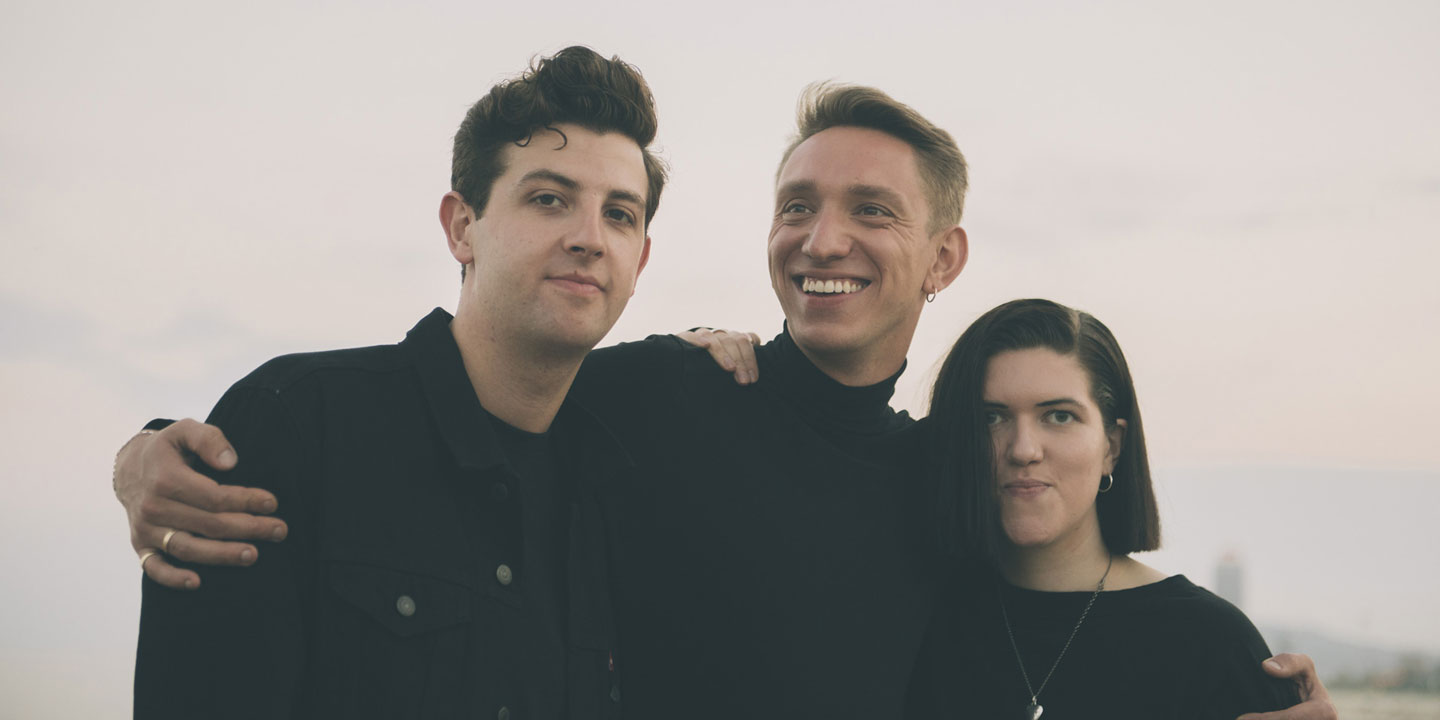
Primavera Sound brings out the gratitude in people: All weekend long at Barcelona’s seaside Parc del Fòrum, acts that played in past years sang the festival’s praises in a way that went beyond the usual lip service, while first-timers shared their excitement over finally making it there. Indeed, Primavera Sound can seem like an oasis for those who’ve tired of the overblown insanity of the American festival landscape, marred by lineup ubiquity and an overall sense of music-as-afterthought. Primavera just feels different—a little calmer, less about playing dress-up for Instagram, and more open to discovery. Here’s what stuck with us from this year’s fest, along with a gallery of portraits and live shots. –Jillian Mapes
Everything (But the New Songs) Now
I started Primavera with Arcade Fire, ended it with Arcade Fire, and spent the middle part watching their infinite content stream set the internet ablaze in hot takes. The revisionist history of this band taking place on both sides of the aisle right now is staggering. Partially it’s because Arcade Fire excel at turning their album cycles into events. For fans, it’s hard not to get at least slightly swept up with the sloganeering clues and secret shows and overwrought aesthetics they strategically drop at each LP kickoff. But even if you roll your eyes at these lifelong theater kids trying to convince you once again that they’re the biggest band in the world, you gotta give them credit for the precision of their game: At the exact moment they took a makeshift stage set up in the grass on Thursday evening for a surprise warm-up show, their fifth album, Everything Now, its lead single, and its accompanying tour were all announced. Needless to say, the kids up front lost their shit.
For the bigness of the gesture, though, they only played two new songs at both the warm-up show and their headlining set Saturday: the ABBA-lite single “Everything Now” and the comparatively towering “Creature Comfort.” If the new album embraces AF’s apparent aspirations to continue moving towards dance music via the alluring, Suicide-like spazz of “Creature Comfort,” things could be a lot worse. Then again, I seemed to be in the minority when it came to “Everything Now,” at least among the Primavera crowds: even largely unheard, the song still swayed the audience and got them singing along to all those wordless melodies. When Arcade Fire can get people to do this—whether it’s whoa-ohhhh, woo-oh, or nah-nah-nah—their earnestness becomes undeniable to those who’ve ever been pulled to it. At this point in their career, they know when to deploy such moments of communion, opening their Saturday set with “Wake Up” and peppering in songs like “Neighborhood #3 (Power Out)” and “Rebellion (Lies)” at exactly the right moments. After the set, those whoa-ohs echoed dimly through the exiting crowd. And they probably always will. –JM
I Know There’s Gonna Be Good Times (Eventually)
Jamie xx didn’t make it easy on himself, agreeing to DJ on the main stage in place of Frank Ocean’s dropped set, just an hour or so after the xx headlined on Friday. So while he seemed to be conserving his energy during the first hour or so of his band’s performance, bassist/singer Oliver Sim, clad in disco sparkles, was having enough fun for the whole trio, coming out of his shell with some cheeky moves and banter. “I’m single and I’m a little bitter about it,” he shared before dedicating I See You opener “Dangerous” to all the single folks. He warned that they’d been messing up new song “Replica” live and that they may need to restart, a vulnerable moment that finally pulled the crowd close once the song got on the right track.
At their most subdued, the xx have become known as the sort of band that festival goers will talk through. The set’s initial visual subtlety didn’t do it any favors in this regard, but once the newer, more beat-based songs kicked in, things really started to hit, with techno-y transitions finally making the whole thing flow. When candy-colored strobes signaled the Romy Madley Croft-led “Loud Places,” a highlight from Jamie’s solo album In Colour, the audience was finally theirs. And though Jamie didn’t play much of his own material in his follow-up DJ set, he still won fans over with a meta nod: Frank’s “White Ferrari” met a too-short snippet of “I Know There’s Gonna Be (Good Times)” to start, while “Gosh” mirrored awkwardly with “Nikes” to close. –JM
Angel Olsen for Best Actress
Angel Olsen wanted to be an actress when she was a kid, and it’s a side of her that has manifested in its own way right alongside her music, peaking (thus far) in her “Shut Up Kiss Me” video. Nearly a year into playing songs off My Woman on the road, though, Olsen might just be outdoing the characters and comedic timing of that memorable clip in her live shows. You would think the innate intimacy of her songs would make her far more suited for smaller clubs, but those screens flanking both sides of a festival stage are ideal for capturing her subtly shifting facial expressions and mannerisms in all their glory. While Olsen’s stage banter has long been dry and amusing, very few acts in her world of tasteful indie rock are paying as much attention to the nuanced physicality of their performances as she is these days.
Throughout her Saturday-evening set, as musical epics like “Sister” settled into their natural lulls, Olsen often laughed cryptically, almost as if to herself. At other times, like on an extended version of “Acrobat,” she turned on a thousand-yard stare that deepened the already-staggering levels of depth contained within the Half Way Home highlight. I’m not saying an Angel Olsen arena tour is something that makes sense for her music (at least not right now), but if you have the chance to see her up on a giant screen this summer, take it. –JM
No One Knows Sampha Like His Three Drummers
With all due respect to Sampha’s gorgeous debut Process, it is not really the kind of album that seems to naturally fit into a festival time slot while it’s still light out. But I have to hand it to the London singer-songwriter-producer and his stellar backing band—shout-out to exuberant percussionist Pauli Lovejoy especially—for taking a deeply vibe-y record written in the wake of his mother’s passing and translating it to such a venue on Friday evening. The set’s arc was particularly effective, as Sampha and his three bandmates built the groove strategically, little by little, until the whole thing was buoyed by a vaguely tropical beat.
Leading into “4422,” the ominous More Life standout led almost entirely by Sampha, the four musicians gathered in a circle at one corner of the stage for an energetic drum-off: one on beat pads, one on steel drum, another on snare, another on kick-drum. Sampha sang half the song from that spot, drums encasing his voice, before the band scattered across the stage to their usual positions. From there, they launched into an extended version of “Blood on Me” that made everyone in sight move, sway, or clap—a feat for such a serious song. Knowing he had the crowd in the palm of his hand, Sampha closed the set with the one Process song he couldn’t turn into a banger: solemn ballad “No One Knows Me Like the Piano.” Thankfully, it was the one point in the set where his band knew to leave him be. –JM
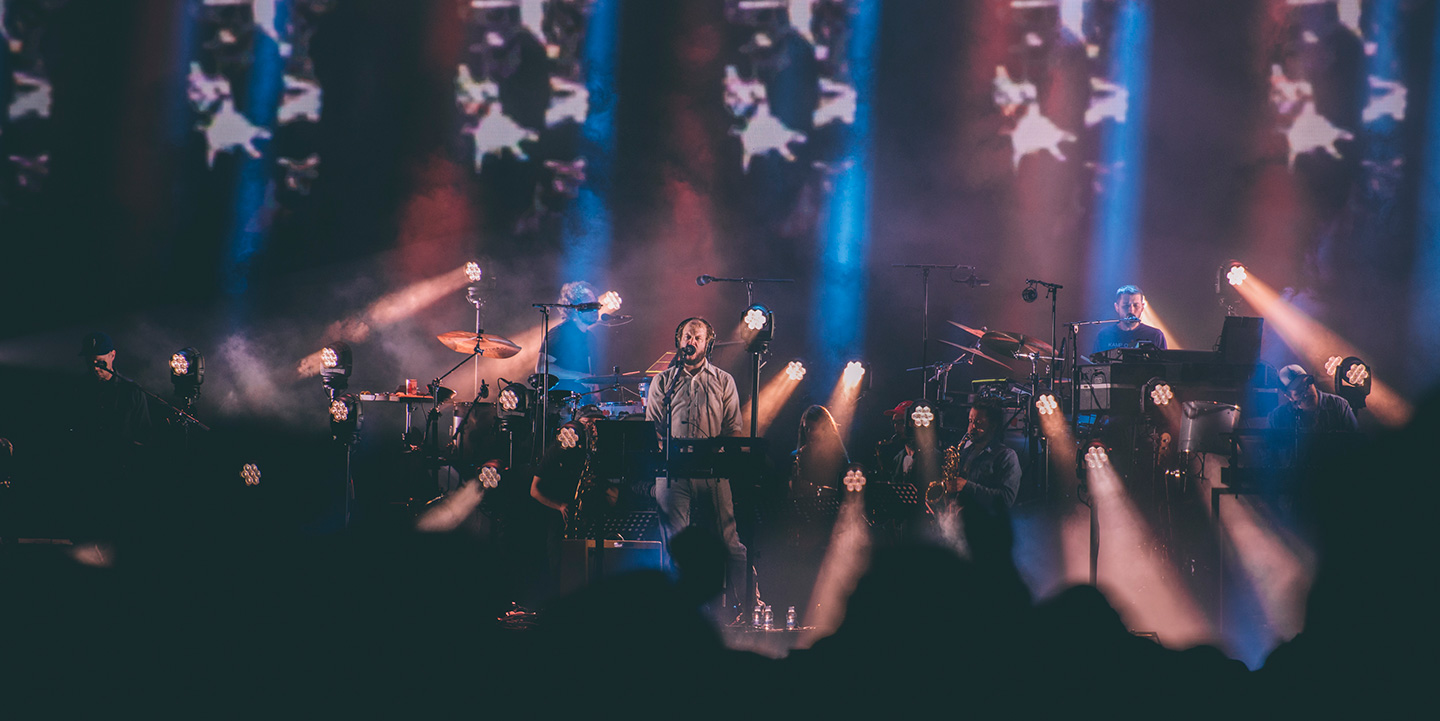
Bon Iver’s Distant but Oddly Engaging Stage Presence
These days, Bon Iver’s Justin Vernon spends most of his set with a baseball cap and a huge pair of headphones on his skull while standing behind a bank of gear with a guitar around his neck. There’s so much going on on his stage—two drummers, a saxophone section, voices that are constantly moving between achingly pure and gnarled—that his presence makes it seem like he’s not initiating the music as much as he’s living inside of it. But that illusion always shatters whenever he starts to sing. The Vernon voice will always be his music’s most distinctive feature, what draws all fans closer and repels those who can’t deal with it, and 10 years into his career it only feels stronger, more flexible. The song selection drew heavily from new record 22, A Million, starting off with that album’s deep blasts of bass and Messina-mangled voices and then working backwards in the Bon Iver catalog, through a magisterial “Holocene” and explosive “Perth,” gradually shedding technology until it ended at an encore with Vernon alone onstage with his acoustic guitar singing “Skinny Love,” the song that put him on the map in 2008. The only logical step from there was silence. –Mark Richardson
Aphex Twin’s Infinite Flexibility
Richard James’ music is never just one single thing. Though he has a core identity as an artist, mostly based around his ear for strange but memorable melodies and his distinctively propulsive feel for rhythm, he can apply those qualities to any number of settings, from wispy piano miniatures to raging slabs of gabbafied noise. The Aphex Twin festival experience continues this trend, taking his essential aesthetic ideas—humor mixed with dark horror, uncannily physical explosions of sound—and putting them into a frame as tall and wide as a massive stage. He generally steered clear of recognizable tracks during his Primavera set (though one nearby trainspotter thought he heard elements from Jlin’s Black Origami), opting for a dense, flowing set heavy on ripping low end and general disorientation. The visuals were frequently based upon films of the front row of the crowd, which real-time processing twisted and bent until faces and bodies were distorted into Francis Bacon-like paintings in motion. The overall effect was one of sensory overload that just barely kept you tethered to James’ creative mind. –MR
Japandroids’ Two-Man Army
The wall behind Japandroids featured narrow strips of light that suggested stained glass, making the stage itself seem like a church. Their relentless commitment to rock music as a source of understanding and ultimately salvation has been evident all along, but seeing them playing in front of thousands brings their commitment into full relief. There’s no reason two guys on a stage should be able to channel this much raw energy and make this many people shout along and feel this much. Even those who didn’t get into Near the Wild Heart of Life (hand up) and mostly listen to a half-dozen or so favorites from the first two records (other hand up) could follow along. Onstage, guitarist Brian King and drummer David Prowse convince you that whatever song they’re currently playing is the one that will help you make sense of your life. –MR
When Music at a Festival Isn’t Festival Music
Large festivals bring a very specific set of expectations: crowd-pleasing, uptempo sets that generally offer some semblance of a party. William Tyler’s turn at the Pitchfork stage on Friday just as the sun was going down took a different tack. Tyler’s low-key instrumental rock, as heard on his recent album Modern Country, mixes spacey krautrock textures with slow-rolling twang—an explosion in the sky that turns out to be the aurora borealis. Though you could see people close to the front casually talking to friends during his set, the fact that the music could so easily slip into the background was not to its detriment. On the contrary, it seemed true to is spirit, a heavenly ambiance that makes you notice what’s around you.
On Saturday, Gas was similarly low-key, but to a much different purpose. Playing mostly highlights from his new album Narkopopp, Wolfgang Voigt made no concessions at all to the setting, essentially giving wired-up festival-goers only a short distance from the banging disco set of John Talabot a chance to shift to a lower gear. Where the Tyler vibe was about a chill space, Voigt’s music and visuals very much demanded attention, but in a different way. His glimmering drones, heavy on bass and sometimes with a steady 4/4 kick drum pulse, create a feeling of uneasy immersion, like you’re being pulled into something but you’re not sure of what you’ll find when you get there. The accompanying video, variations of which he’s been using in his live shows over the last decade, basically brings his spooky album covers to life, as a camera moves in long takes through a forest underbrush filled with blue, red, or green light. The entire Gas project was famously inspired by a Voigt acid trip in the Black Forest, and the arboreal motif made you think about how the woods can be both a personal refuge and a place for malevolent forces to hide. Like the severed ear that the camera drops into in the opening sequence to Blue Velvet, Gas’ multimedia show suggests that there’s always something more happening just beneath the surface. –MR
Rising: Half Waif’s Restless Electro Pop

Overtones: Do Androids Dream of Electric Guitars? Exploring the Future of Musical A.I.


Here is a song called “Daddy’s Car.” If it appeared in some YouTube ad for Bounty paper towels, you probably wouldn’t blink. It sounds like a fourth-generation photocopy of the Beatles. Under normal circumstances, I would probably listen to it once, deem it “successfully generic” and move on.
But “Daddy’s Car” was written under highly abnormal circumstances; it was dreamed up by a computer’s brain. That brain was built by a Sony-owned software company called Flow Machines, which tapped its vast neural network to compose a melody in the “style of the Beatles,” a melody that was then tweaked and finessed by a French musician named Benoît Carré. For all its apparent unoriginality, “Daddy’s Car” is one of the most remarkable unremarkable songs ever written.
Computers are writing more and more music these days. But they’re not following a mysterious, inward-springing muse, humming melodies because they liked the way the clouds looked outside the window that day. No, like everything else machines do, they are making music because we are telling them to—and companies are investing millions of dollars in this complicated act of ventriloquism. Besides Flow Machines, which is funded by a $2.5 million grant from the European Research Council, there is also Magenta, an initiative launched by Google last year.
Here’s the thing: We really, really want our machines to talk to us. To us, for us, in our own voices, in a voice we’ve never heard before—it doesn’t matter, we just want the company. Ever since the human voice shot across telephone wires, we have been staring at cold coils and trying to animate them. By now, we’ve got the talking part pretty much down—we can wake up our computers by yelling “hey” at them, or tell them to remind us to watch the Warriors game six days from now, or ask them absently to dim the lights a little, and they’ll comply.
The next logical step is to make them sing and play to us. But giving machines a creative voice, literal inspiration (inspirare, meaning “to breathe”)—that is a much slipperier problem, tougher to program, than making them talk. To hone in on the luminous stuff coming out of a mouth or an instrument, to capture the sounds themselves, let alone ones abiding by their own internal logic and order—what’s the math for that? Where do the notes stop and the music begins?
Douglas Eck works at Magenta, an offshoot of the artificial-intelligence project Google Brain that aims to develop “algorithms that can learn how to generate art and music.” He’s an engineer as well as a musician. “The pinnacle of my career was in my early 20s, I played a lot of bluegrass and punk in coffee houses in Indiana; Johnny Cash meets Johnny Rotten. I had dozens of people see me play live,” he cracks. He’s thought a lot about the difference between the notes and the music, in a philosophical sense.
Perhaps surprisingly, Eck rejects the fundamental idea of a Turing Test for a pop song. He doesn’t want Magenta to fool listeners, or replace musicians. “We’re not chasing the idea that we can make a human-feeling music without humans,” Eck says. “I’m not that interested in being able to push a button and have a computer make something that is emotionally evocative by itself. While I think that’s an interesting goal, it’s not my goal.”
The biggest stumbling blocks he and his team hit, he admits, were human—and not machine-made. Good old cognitive bias reared its head: “We didn’t start by thinking about what musicians want, which is funny and surprising because we’re all musicians,” he says, laughing. “The first round of Magenta looked like it was engineered by a bunch of Googlers.”
Poking around the open-source forum as a layperson quickly confirms Eck’s diagnosis. It’s a place of command lines and prompts, a coder’s realm. “We’re still stuck in that mode,” he says, adding somewhat comically, “and we’re kind of engineering our way out of it.”
“This kind of problem shows up everywhere,” he continues. “One challenge for self-driving cars is that you’re used to making eye contact with the driver before you know if it’s safe to cross the street. But how do you make eye contact with a driverless car? For the same reason, building machine-learning tools that musicians actually use is tough.” They have to pass “the guitar pedal test,” Eck says, presumably meaning they beg musicians to pick them up, fiddle with them, and see what kind of funny sounds they can make.
For now, though, Magenta is a playground of coders, and they are uploading their early results for each other’s perusal, often with a bracing dash of self-deprecation. “I know it’s a bit cheesy but I hope you enjoy,” writes user Jose Cano of his Magenta collaboration. It is, for sure, a bit cheesy. The piano on the piece feels clumsy, kind of like a beginner student who has just discovered the satisfying tang of noodling up and down the harmonic minor scale. When the Magenta-generated synth tries going beyond that, it is immediately out of its depth, hitting notes outside the logical framework. The vocabulary is limited, but you sense an intelligence feeling its way around some basic rules.
For his part, Eck takes a bit of a “polar bear riding a tricycle” attitude towards machines making music—it’s probably more impressive the bear is doing it at all, nevermind its skill level. He says he’s OK if some of the musical experimentation that volunteer users trade with Magenta’s team “kind of sucks.” It’s a refreshingly humble attitude from a bunch of Google engineers. “If Frank Ocean came along and said, ‘Let’s collaborate with Magenta,’ I might say, ‘It’s not the time.’”
Nonetheless, what Eck wants, and what Magenta so far lacks, is a team of musicians playing around with it, bending the software into shapes the engineers could have never imagined. “Look what happened with the drum machine,” he says. “It became brilliant when it got used for creative purposes for which it wasn’t intended. Maybe I have a Magenta model that’s trained to generate new sounds, or new sequences of melody, but what makes it interesting is that another artist comes along and plays with it.”
Around the time of our interview, Magenta unveiled a new tool called NSynth—a neural network that has been trained on nearly 300,000 instrument sounds. The way it has “learned” these sounds represents a leap in thinking: Usually, when computers reproduce sounds, they reduce the physical vibrations of sound waves into numbers that approximate those vibrations, and then the machine crunches those numbers. That’s how you end up playing flutes and trumpets and cellos on a keyboard.
NSynth operates on a slightly higher plane. Instead of converting waves to numbers, it works from a series of “ideas” programmed into its head already about what instruments sound like—this is the stuff of cortexes, not brain cells. In effect, it’s basically a smart synth, and its neatest trick is the ability to crossfade between two sounds in its database to make a new one. So when you ask it to blend, say, the sound of a goose honk and a harp, it spits something out that indeed sounds like a strange approximation of those two things. With a little doing, you can import those sounds into your home studio.
Playing around with the dials and fader is fun, but it feels more like the past than the future: I’m reminded of my older brother’s little toy Casio in the mid-’80s, and its voice recorder. Was mixing goose honks and a harp much different from recording curse words into a microphone so I could play “Chopsticks” with them? NSynth ultimately feels more like being shown the parts of airplane wing than flying.
In the realm of musical AI, Flow Machines feels a bit more like liftoff. Click around on their website, and it will eagerly show you how it learned to write a harmony for Beethoven’s Ode to Joy that was directly inspired by Bach chorales. Then, watch a video of the Flow Machine’s in-house singer-songwriter, Benoît Carré, perform a fairly stupefying one-man rendition of the Beatles “I Feel Fine” with a “smart” loop pedal created by the company. Instead of recording what you tell it to, the Reflexive Looper “listens” to your playing and makes decisions, on its own, what to record and loop. It is also intelligent enough to take that looped material and transpose it, on its own, into a new key. Watching Carré test-drive it in real time is breathtaking.
Where Magenta bills itself as a “research project,” Flow Machine is focused on output; there will be a compilation album made by a series of artists using Flow Machines’ software soon, on its own label. François Pachet, the head of Flow Machines, isn’t ready to share specific details on the album project, but he hopes it will kick Flow Machines, and the larger project of AI-assisted music in general, into a new phase, one where the presence of AI ceases to be the talking point.
“When we launched the original tunes, people listened to the technical artifact—now, we’d like to be judged only on the music,” he says, laughing. “It’s going to be hard.”
Flow Machines works differently than Magenta. It is a vast database of songs and styles. You pick a few from its vault as inspirational starting points, not much different from how humans write songs on their own. Then you tell the software a few things about the music you want it to generate; not too many short notes, for example, or not too many chords; medium tempo, with some inverted chord voicing. Then Flow Machines gets to work and starts spitting out ideas: You keep the ones you like. You can even zero in on part of a melody and ditch the rest, encouraging the software to develop a single idea further.
In other words, Flow Machines is sort of a virtual musician. It’s limber and responsive enough to extemporaneously draw on a rich base of references but it can also collaborate. It can tweak its phrasing, play it a little less like this and a little more like this, draw out a phrase or get rid of a frilly turnaround, based on a person’s input.
Flow Machines has to both learn to make music and to make music with others, and Pachet can’t think of any other machine learning that resembles it. “You give an idea, and the system fills in the blanks, but then you criticize the results,” he says. I ask him if voice texting—in which a phone has to be able to both understand and recognize every word in the English language and also be able to interpret my peculiar way of speaking it—is close. “Not really,” he says. “Unless you are asking your phone to take your voice text as a prompt and write a new paragraph in the style of William Faulkner, or Obama.”
There are a couple of well-known thought experiments about machine consciousness. One of them is called “The Chinese Room.” It was first posed by the American philosopher John Searle in 1980, and this is roughly how it goes: You are locked in a room. Someone feeds you pieces of paper with Chinese writing on them through a slot in the door. You don’t speak or understand a word of Chinese, but you have a roomful of books in your room that tell you which Chinese symbols to copy back. You dutifully copy those Chinese letters by hand and pass them back through the slot to your mysterious interlocutor. You don’t know what the Chinese letters that you’re reading say, nor do you know what you are writing back. As far as you know, you’re trading recipes, or comparing bathroom tiles, or debating the nature of the universe.
But the people on the other side of the room would have no idea just how ignorant you are. To them, you are a sophisticated and fluent Chinese speaker participating in a meaningful discussion. This was Searle’s metaphorical argument against conscious machines, which, he argued, played the role of the blank copyists in the room. Manipulation of symbols is one thing, but innate comprehension of those symbols is another.
This is a neat metaphor for the music being made by Magenta and Flow Machines. When I ask both Douglas Eck and François Pachet about their theories of machine consciousness, both are brusquely unsentimental. “This is a technology,” Eck insists. “Try to think of an art form that uses zero technology. In every case that I’ve looked at, when we’ve used new technology, it’s always made us more creative. We should admit that our brains are not all that smart without an environment to lean on. For example, most of us can’t even do long division without technology in the form of paper and pencil.”
Pachet offers a similar answer. He thinks that Flow Machine is capable of generating “perfectly good” songs all by itself, but that truly unique ones only happen with an artist present. “There are so many choices to make when writing a piece of music,” he says. “Only an artist can make the sort of choices that result in a great piece.”
Those decisions—phrasing, timing, feeling—happen at a level that machines don’t know how to aim for, at least not yet. Truly great music is born of a burning desire to communicate, as well as good, old-fashioned accidents of misunderstanding, which humans still seem to have the market cornered on. Excitement, which has been the divining rod leading most human investigations, still seems foreign to processing systems. You can teach machines to spin sugar, but not to crave it.
And yet, Pachet notes, sometimes the software generates stunning music anyway, all on its own. “Sometimes, it will map a guitar line onto a new song, and it works so well; it’s great, and we don’t know why. And the system, to be honest, doesn’t know either—it has no ideas on its own about what’s a ‘good’ generation or a ‘bad’ one.” This doesn’t feel so different from humankind’s relationship to music in general; we love certain sounds and decide we can’t live without them, while others repulse us. Do we really understand why? We try to explain it, to ourselves and to others, but the impulse, and the base-level attraction, occurs somewhere beneath our conscious minds’ reach.
This is why, ultimately, Pachet doesn’t have any truck with grand theories of machine consciousness. Despite working on what feels like one of the final frontiers of human behavior—is anything more irreducibly human than music?—he doesn’t see a ghost in the machine, a latent soul waiting to rise from the lines of code. He compares the modern advancements of musical AI with the birth of the digital synthesizer. “That was just a tool, and this is exactly the same thing,” he says. “The tool does not have any idea about what it creates, and this is just a new generation of tools. We just have to learn how to use them.”
It’s ironic, or maybe appropriate, that the only person I speak to who waxes mystical about the sounds these programs make is a musician. Benoît Carré’s full-time job is to collaborate with Flow Machines, exploring its quirks and taking it for test-drives every day. Intriguingly, working with this sophisticated algorithmic software has plugged him into the more subconscious side of his songwriting brain.
Take “Mr. Shadow,” for instance, a song Flow Machines generated working from hundreds of American jazz standards. The melody was one of countless results that the program spit out—it captured Carré’s imagination, and he built the song from there. He is entranced by the way the software “reads” human voices, and is convinced it taps into something elemental about them. “It’s like if I captured the soul of the singer,” he says. “What I get is not a voice that tells me stories with lyrics. I get an emotion, a style, a way of singing—things that are the essence of the singer. It’s like an abstract song, but very emotional. That’s what I find most interesting about this tool; you recreate a sense of listening to music like if you were a child who didn’t understand every word, but you get the feeling. It’s a new kind of song.”
Music making is, at its root, a sort of dreaming—in making it, we are closer to our subconscious than we are, arguably, with any other form of artistic creation. The only substance we are pushing is air, and once that air goes still, the medium dies, and all we have are recordings. It is the most ethereal of all the arts, and as machines take over more and more of the “manual labor” of the job, musicians might very well be freed up to delve even deeper into those dreamscapes.
“When I’m playing with Flow Machines, I’m more connected with my unconsciousness and my feelings, and less with my mind,” Carré says. “It’s very instinctive. The music that you make with those tools helps you to go further inside yourself, to explore the shadow side of your creativity. I’m discovering a new way to make music, yes, but maybe I’m also discovering a style. The melodies that come out are not in your style, but they are the result of your choices. But there’s something more, something augmented, something that doesn’t seem like our reality.”
Carré is more likely to think of Flow Machine as “an intelligence,” which is the word he uses to describe playing with the Reflexive Looper. He’s made the most music with these machines, after all, and he is the one with their melodies in his head; they feel quite real to him. “When I work with Flow Machines, I feel like I’m collaborating,” he notes. “I do not feel alone. These programs are proposing melodies to me that I can sing in the shower the next morning. They are melodies that obsess me sometimes, because they are really different. It’s like when you are about to sleep: You have thoughts, but you don’t identify them; they are real, but not real. There is something otherworldly about them.”
